Рейтинг книг Nathalia Brodskaya
Начиная изучать творчество писателя - уделите внимание произведениям, которые находятся на вершине этого рейтинга. Смело нажимайте на стрелочки - вверх и вниз, если считаете, что какое-то произведение должно находиться выше или ниже в списке. В результате общих усилий, в том числе, на основании ваших оценок мы и получим самый адекватный рейтинг книг Nathalia Brodskaya.
-
1.
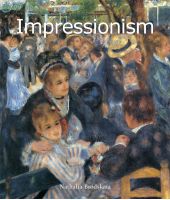 “I paint what I see and not what it pleases others to see.” What other words than these of Édouard Manet, seemingly so different from the sentiments of Monet or Renoir, could best define the Impressionist movement? Without a doubt, this singularity was explained when, shortly before his death, Claude Monet wrote: “I remain sorry to have been the cause of the name given to a group the majority of which did not have anything Impressionist.” In this work, Nathalia Brodskaïa examines the contradictions of this late 19th-century movement through the paradox of a group who, while forming a coherent ensemble, favoured the affirmation of artistic individuals. Between academic art and the birth of modern, non-figurative painting, the road to recognition was long. Analysing the founding elements of the movement, the author follows, through the works of each of the artists, how the demand for individuality gave rise to modern painting. ... Далее
“I paint what I see and not what it pleases others to see.” What other words than these of Édouard Manet, seemingly so different from the sentiments of Monet or Renoir, could best define the Impressionist movement? Without a doubt, this singularity was explained when, shortly before his death, Claude Monet wrote: “I remain sorry to have been the cause of the name given to a group the majority of which did not have anything Impressionist.” In this work, Nathalia Brodskaïa examines the contradictions of this late 19th-century movement through the paradox of a group who, while forming a coherent ensemble, favoured the affirmation of artistic individuals. Between academic art and the birth of modern, non-figurative painting, the road to recognition was long. Analysing the founding elements of the movement, the author follows, through the works of each of the artists, how the demand for individuality gave rise to modern painting. ... Далее -
2.
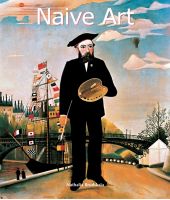 Naive art first became popular at the end of the 19th century. Until that time, this form of expression, created by untrained artists and characterised by spontaneity and simplicity, enjoyed little recognition from professional artists and art critics. Influenced by primitive arts, naive painting is distinguished by the fluidity of its lines, vivacity, and joyful colours, as well as by its rather clean-cut, simple shapes. Naive art counts among it artists: Henri Rousseau, Séraphine de Senlis, André Bauchant, and Camille Bombois. This movement has also found adherents abroad, including such prominent artists as Joan Miró, Guido Vedovato, Niko Pirosmani, and Ivan Generalic. ... Далее
Naive art first became popular at the end of the 19th century. Until that time, this form of expression, created by untrained artists and characterised by spontaneity and simplicity, enjoyed little recognition from professional artists and art critics. Influenced by primitive arts, naive painting is distinguished by the fluidity of its lines, vivacity, and joyful colours, as well as by its rather clean-cut, simple shapes. Naive art counts among it artists: Henri Rousseau, Séraphine de Senlis, André Bauchant, and Camille Bombois. This movement has also found adherents abroad, including such prominent artists as Joan Miró, Guido Vedovato, Niko Pirosmani, and Ivan Generalic. ... Далее -
3.
 Cézannes glücklichste Zeit war seine frühe Jugend in der Provence, wo er zusammen mit Zola und einem anderen Freund in der Natur umherstreifte. Ermutigt durch Renoir, stellte er 1874 und 1877 zusammen mit den Impressionisten aus. Doch die ablehnende Haltung, mit der man seiner Kunst begegnete, verletzte ihn tief. Er malte gern Früchte, weil sie gehorsame Modelle waren, was seiner langsamen Arbeitsweise entgegenkam, dabei behielt er die dominante Farbe und den Charakter der Frucht bei, verstärkte aber den emotionalen Reiz der Form durch ein Spiel von reichen, fein aufeinander abgestimmten Farbwerten. Seine eigentliche Meisterschaft entfaltete er in den Stillleben. Cézanne verstand es, seine Malkunst mit Wissen zu bereichern, dem Wissen um die Dinge – dieser unabdingbaren Voraussetzung für alles schöpferische Bemühen. Kurz nach dem Tod seines Vaters zog er sich für immer auf sein Gut in der Provence zurück und war vermutlich dort der einsamste Maler seiner Zeit. Von Zeit zu Zeit überfiel ihn eine seltsame Melancholie, ja sogar eine düstere Hoffnungslosigkeit. Er konnte unberechenbar und schwierig sein, seine Leinwände zerstören oder sie zum Fenster seines Studios hinauswerfen, sie ganz einfach auf einer Wiese stehen lassen oder sie seinem Sohn geben, der sie zerschnitt und wie ein Puzzle wieder zusammensetzte. Zu Beginn des neuen Jahrhunderts holten die Bauern aus ihren Scheunen eine größere Menge von Stillleben und Landschaften, als sie hörten, dass ein Narr aus Paris dafür mit gutem Geld zahlte. Doch leider kam die Anerkennung zu spät. Er starb 1906 an einem Fieber, das er sich zugezogen hatte, als er beim Malen vom Regen überrascht wurde. ... Далее
Cézannes glücklichste Zeit war seine frühe Jugend in der Provence, wo er zusammen mit Zola und einem anderen Freund in der Natur umherstreifte. Ermutigt durch Renoir, stellte er 1874 und 1877 zusammen mit den Impressionisten aus. Doch die ablehnende Haltung, mit der man seiner Kunst begegnete, verletzte ihn tief. Er malte gern Früchte, weil sie gehorsame Modelle waren, was seiner langsamen Arbeitsweise entgegenkam, dabei behielt er die dominante Farbe und den Charakter der Frucht bei, verstärkte aber den emotionalen Reiz der Form durch ein Spiel von reichen, fein aufeinander abgestimmten Farbwerten. Seine eigentliche Meisterschaft entfaltete er in den Stillleben. Cézanne verstand es, seine Malkunst mit Wissen zu bereichern, dem Wissen um die Dinge – dieser unabdingbaren Voraussetzung für alles schöpferische Bemühen. Kurz nach dem Tod seines Vaters zog er sich für immer auf sein Gut in der Provence zurück und war vermutlich dort der einsamste Maler seiner Zeit. Von Zeit zu Zeit überfiel ihn eine seltsame Melancholie, ja sogar eine düstere Hoffnungslosigkeit. Er konnte unberechenbar und schwierig sein, seine Leinwände zerstören oder sie zum Fenster seines Studios hinauswerfen, sie ganz einfach auf einer Wiese stehen lassen oder sie seinem Sohn geben, der sie zerschnitt und wie ein Puzzle wieder zusammensetzte. Zu Beginn des neuen Jahrhunderts holten die Bauern aus ihren Scheunen eine größere Menge von Stillleben und Landschaften, als sie hörten, dass ein Narr aus Paris dafür mit gutem Geld zahlte. Doch leider kam die Anerkennung zu spät. Er starb 1906 an einem Fieber, das er sich zugezogen hatte, als er beim Malen vom Regen überrascht wurde. ... Далее -
4.
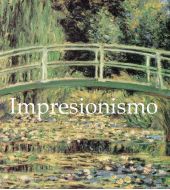 El Impresionismo ha sido siempre uno de los estilos de arte preferidos por el público y las obras impresionistas continúan deleitando a los observadores con su asombroso juego de colores y formas. Este libro ofrece una cuidada selección de las obras más fascinantes de artistas como Degas, Monet, Pissarro, Renoir y Sisley. El volumen de Mega Square Impresionismo rinde tributo a la popularidad de este movimiento y, con un formato práctico y compacto, constituye un regalo perfecto. ... Далее
El Impresionismo ha sido siempre uno de los estilos de arte preferidos por el público y las obras impresionistas continúan deleitando a los observadores con su asombroso juego de colores y formas. Este libro ofrece una cuidada selección de las obras más fascinantes de artistas como Degas, Monet, Pissarro, Renoir y Sisley. El volumen de Mega Square Impresionismo rinde tributo a la popularidad de este movimiento y, con un formato práctico y compacto, constituye un regalo perfecto. ... Далее -
5.
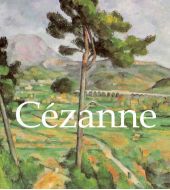 Desde su muerte, hace 100 años, Cézanne se ha convertido en el pintor más famoso del siglo XIX. Nació en Aix-en-Provence en 1839 y el periodo más feliz de su vida fue su primera juventud en Provenza, en compañía de Emile Zolá. Siguiendo el ejemplo de Zolá, al cumplir los veintiún años, Cézanne se marchó a París. Durante la guerra franco-prusiana desertó de la milicia, y dividió su tiempo entre pintar al aire libre y estudiar. Al comerciante de arte Vollard le dijo: “Sólo soy un pintor. El ingenio parisino me fastidia. Lo único que quiero es pintar desnudos en las orillas del Arc [un río cercano a Aix]”. Animado por Renoir, uno de los primeros en apreciarlo, exhibió con los impresionistas en 1874 y en 1877. Su obra fue recibida con desdén, lo que lo hirió profundamente. La ambición de Cézanne en sus propias palabras, era “hacer del impresionismo algo tan sólido y durable como las pinturas de los museos”. Su objetivo era lograr algo monumental en un lenguaje moderno de tonos brillantes y vibrantes. Cézanne quería retener el color natural de un objeto y armonizarlo con las diversas influencias de luz y sombra que intentaban destruirlo; buscaba una escala de tonos que expresara la masa y el carácter de la forma. A Cézanne le gustaba pintar frutas porque se trataba de modelos pacientes y él trabajaba lentamente. No pretendía sólo copiar una manzana. Mantenía el color dominante y el carácter de la fruta, pero subrayaba el atractivo emocional de la forma con un conjunto de tonos ricos y concordantes. En sus pinturas de naturalezas muertas era un maestro. Sus composiciones de vegetales y frutas son verdaderamente dramáticas; tienen peso, nobleza, el estilo de las formas inmortales. Ningún otro pintor logró darle a una manzana roja una convicción tan cálida, una simpatía tan genuinamente espiritual o una observación tan prolongada. Ningún otro pintor de habilidad comparable reservó sus más fuertes impulsos para las naturalezas muertas. Cézanne devolvió a la pintura la preeminencia del conocimiento, la calidad más esencial de todo esfuerzo creativo. La muerte de su padre, en 1886, lo convirtió en un hombre rico, pero no por eso cambió su estilo de vida austero. Poco después, Cézanne se retiró de forma permanente a su propiedad en Provenza. Probablemente se trató del más solitario de los pintores de su época. Por momentos le atacaba una peculiar melancolía, una oscura desesperanza. Se volvió irascible y exigente, destruía los lienzos y los arrojaba fuera de su estudio, hacia los árboles, los abandonaba en los campos, se los daba a su hijo para que los cortara e hiciera con ellos rompecabezas o se los regalaba a la gente de Aix. A principios de siglo, cuando Vollard llegó a Provenza con intenciones de adquirir todo lo que pudiera del material de Cézanne, los campesinos, que se enteraron de que un loco de París estaba pagando por aquellos viejos lienzos, sacaron de los graneros una considerable cantidad de naturalezas muertas y paisajes. El viejo maestro de Aix se sintió abrumado por la alegría, pero el reconocimiento le llegó demasiado tarde. Murió en 1906 de una fiebre que contrajo mientras pintaba en la lluvia. ... Далее
Desde su muerte, hace 100 años, Cézanne se ha convertido en el pintor más famoso del siglo XIX. Nació en Aix-en-Provence en 1839 y el periodo más feliz de su vida fue su primera juventud en Provenza, en compañía de Emile Zolá. Siguiendo el ejemplo de Zolá, al cumplir los veintiún años, Cézanne se marchó a París. Durante la guerra franco-prusiana desertó de la milicia, y dividió su tiempo entre pintar al aire libre y estudiar. Al comerciante de arte Vollard le dijo: “Sólo soy un pintor. El ingenio parisino me fastidia. Lo único que quiero es pintar desnudos en las orillas del Arc [un río cercano a Aix]”. Animado por Renoir, uno de los primeros en apreciarlo, exhibió con los impresionistas en 1874 y en 1877. Su obra fue recibida con desdén, lo que lo hirió profundamente. La ambición de Cézanne en sus propias palabras, era “hacer del impresionismo algo tan sólido y durable como las pinturas de los museos”. Su objetivo era lograr algo monumental en un lenguaje moderno de tonos brillantes y vibrantes. Cézanne quería retener el color natural de un objeto y armonizarlo con las diversas influencias de luz y sombra que intentaban destruirlo; buscaba una escala de tonos que expresara la masa y el carácter de la forma. A Cézanne le gustaba pintar frutas porque se trataba de modelos pacientes y él trabajaba lentamente. No pretendía sólo copiar una manzana. Mantenía el color dominante y el carácter de la fruta, pero subrayaba el atractivo emocional de la forma con un conjunto de tonos ricos y concordantes. En sus pinturas de naturalezas muertas era un maestro. Sus composiciones de vegetales y frutas son verdaderamente dramáticas; tienen peso, nobleza, el estilo de las formas inmortales. Ningún otro pintor logró darle a una manzana roja una convicción tan cálida, una simpatía tan genuinamente espiritual o una observación tan prolongada. Ningún otro pintor de habilidad comparable reservó sus más fuertes impulsos para las naturalezas muertas. Cézanne devolvió a la pintura la preeminencia del conocimiento, la calidad más esencial de todo esfuerzo creativo. La muerte de su padre, en 1886, lo convirtió en un hombre rico, pero no por eso cambió su estilo de vida austero. Poco después, Cézanne se retiró de forma permanente a su propiedad en Provenza. Probablemente se trató del más solitario de los pintores de su época. Por momentos le atacaba una peculiar melancolía, una oscura desesperanza. Se volvió irascible y exigente, destruía los lienzos y los arrojaba fuera de su estudio, hacia los árboles, los abandonaba en los campos, se los daba a su hijo para que los cortara e hiciera con ellos rompecabezas o se los regalaba a la gente de Aix. A principios de siglo, cuando Vollard llegó a Provenza con intenciones de adquirir todo lo que pudiera del material de Cézanne, los campesinos, que se enteraron de que un loco de París estaba pagando por aquellos viejos lienzos, sacaron de los graneros una considerable cantidad de naturalezas muertas y paisajes. El viejo maestro de Aix se sintió abrumado por la alegría, pero el reconocimiento le llegó demasiado tarde. Murió en 1906 de una fiebre que contrajo mientras pintaba en la lluvia. ... Далее -
6.
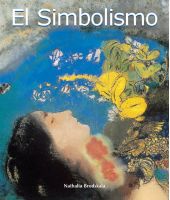 El Simbolismo apareció en Francia y Europa entre la década de 1880 y el principio del siglo veinte. Los simbolistas, fascinados por la mitología de la Antigüedad, intentaban escapar del reino del pensamiento racional impuesto por la ciencia. Deseaban trascender el mundo de lo visible y lo racional para alcanzar el mundo del pensamiento puro, coqueteando constantemente con los límites del inconsciente. Los franceses Gustave Moreau, Odilon Redon, los belgas Fernand Khnopff y Félicien Rops, los ingleses Edward Burne-Jones y Dante Gabriel Rossetti, así como el holandés Jan Toorop son los artistas más representativos del movimiento. ... Далее
El Simbolismo apareció en Francia y Europa entre la década de 1880 y el principio del siglo veinte. Los simbolistas, fascinados por la mitología de la Antigüedad, intentaban escapar del reino del pensamiento racional impuesto por la ciencia. Deseaban trascender el mundo de lo visible y lo racional para alcanzar el mundo del pensamiento puro, coqueteando constantemente con los límites del inconsciente. Los franceses Gustave Moreau, Odilon Redon, los belgas Fernand Khnopff y Félicien Rops, los ingleses Edward Burne-Jones y Dante Gabriel Rossetti, así como el holandés Jan Toorop son los artistas más representativos del movimiento. ... Далее -
7.
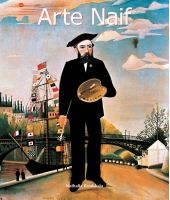 El arte naif se hizo popular por primera vez a finales del siglo diecinueve. Hasta ese momento, esta forma de expresión creada por artistas sin formación y caracterizados por su espontaneidad y simplicidad contaba con poco reconocimiento entre los artistas profesionales y los críticos de arte. Influenciada por las artes primitivas, la pintura naif se caracteriza por la fluidez de sus líneas, por su vivacidad y sus colores alegres, así como por sus formas más bien sencillas, claramente definidas. El arte naif está representado por artistas como Henri Rousseau, Séraphine de Senlis, André Bauchant y Camille Bombois. Este movimiento también consiguió encontrar partidarios en el extranjero, incluyendo a artistas tan destacados como Joan Miró, Guido Vedovato, Niko Pirosmani e Ivan Generalic. ... Далее
El arte naif se hizo popular por primera vez a finales del siglo diecinueve. Hasta ese momento, esta forma de expresión creada por artistas sin formación y caracterizados por su espontaneidad y simplicidad contaba con poco reconocimiento entre los artistas profesionales y los críticos de arte. Influenciada por las artes primitivas, la pintura naif se caracteriza por la fluidez de sus líneas, por su vivacidad y sus colores alegres, así como por sus formas más bien sencillas, claramente definidas. El arte naif está representado por artistas como Henri Rousseau, Séraphine de Senlis, André Bauchant y Camille Bombois. Este movimiento también consiguió encontrar partidarios en el extranjero, incluyendo a artistas tan destacados como Joan Miró, Guido Vedovato, Niko Pirosmani e Ivan Generalic. ... Далее -
8.
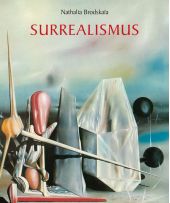 Der Surrealismus entstand gewissermaßen aus den Trümmern des Ersten Weltkriegs. Als eine umstürzlerische, aufrührerische Bewegung richtete er sich gegen die unglaubwürdig gewordenen Werte der Bourgeoisie. Seine Vertreter strebten eine ideologische Revolution an, sie suchten Zuflucht in der Kreativität, im Unbewussten und im Irrationalen. Mit dem Versuch, die in Ruinen liegende schreckliche Realität hinter sich zu lassen, stellten sie alles Vergangene in Frage und teilten die Verachtung für die bürgerlich-biedere Gesellschaft mit den Dadaisten. André Breton, der Begründer des Surrealismus und Autor der Surrealistischen Manifeste, meinte, der Dadaismus eröffne keine Perspektive, sondern sei „… eine Maschine, die mit Volldampf arbeite, wobei jedoch noch abzuwarten sei, wie sie angetrieben würde“. Die Grenzen zwischen Dada und Surrealismus sind teilweise fließend. Gemeinsam ist den beiden Kunst– bzw. Anti-Kunstrichtungen der intellektuelle Ansatz und das Bestreben, überkommene Normen und auch logische Ansätze gewaltsam zu sprengen. Die Autorin überrascht durch eine neue, facettenreiche und auf Objektivität und Unvoreingenommenheit bedachte Sichtweise des Widerstands der Surrealisten gegen das herrschende System. Geht es den Protagonisten wirklich um radikale Provokation und Revolution? Oder sind die Surrealisten, die ihre Welt durch unzusammenhängende, traumhafte und absurde Realitätsfragmente darstellen, nicht vielmehr ein unmittelbares Produkt des schöpferischen Individualismus, der sich in der damaligen Konfusion und Verunsicherung als ein rettender Ausweg anbot? ... Далее
Der Surrealismus entstand gewissermaßen aus den Trümmern des Ersten Weltkriegs. Als eine umstürzlerische, aufrührerische Bewegung richtete er sich gegen die unglaubwürdig gewordenen Werte der Bourgeoisie. Seine Vertreter strebten eine ideologische Revolution an, sie suchten Zuflucht in der Kreativität, im Unbewussten und im Irrationalen. Mit dem Versuch, die in Ruinen liegende schreckliche Realität hinter sich zu lassen, stellten sie alles Vergangene in Frage und teilten die Verachtung für die bürgerlich-biedere Gesellschaft mit den Dadaisten. André Breton, der Begründer des Surrealismus und Autor der Surrealistischen Manifeste, meinte, der Dadaismus eröffne keine Perspektive, sondern sei „… eine Maschine, die mit Volldampf arbeite, wobei jedoch noch abzuwarten sei, wie sie angetrieben würde“. Die Grenzen zwischen Dada und Surrealismus sind teilweise fließend. Gemeinsam ist den beiden Kunst– bzw. Anti-Kunstrichtungen der intellektuelle Ansatz und das Bestreben, überkommene Normen und auch logische Ansätze gewaltsam zu sprengen. Die Autorin überrascht durch eine neue, facettenreiche und auf Objektivität und Unvoreingenommenheit bedachte Sichtweise des Widerstands der Surrealisten gegen das herrschende System. Geht es den Protagonisten wirklich um radikale Provokation und Revolution? Oder sind die Surrealisten, die ihre Welt durch unzusammenhängende, traumhafte und absurde Realitätsfragmente darstellen, nicht vielmehr ein unmittelbares Produkt des schöpferischen Individualismus, der sich in der damaligen Konfusion und Verunsicherung als ein rettender Ausweg anbot? ... Далее -
9.
 „Vater Pissaro“, wie seine Freunde ihn gern nannten, war wohl der nüchternste der Impressionisten. Vielleicht lag es an seinem Alter (welches weitaus fortgeschrittener war, als das seiner Kollegen Monet, Sisley, Bazille und Renoir) oder vielmehr an seiner Lebenserfahrung, die seine Werke sowohl in ihren Themen als auch in ihrer Komposition durchaus ruhig und schlicht erscheinen lassen. Ein Mann mit einfachem Geschmack, der es genoss, die Landbevölkerung in den Straßen zu malen, auch wenn er später mit seinen Stadtansichten Berühmtheit erlangen sollte, die er mit derselben Leidenschaft fertigte, die in ihm aufkam, wenn er wieder einen stürmischen Himmel oder den vom Frost gezeichneten Morgen auf die Leinwand bannte. ... Далее
„Vater Pissaro“, wie seine Freunde ihn gern nannten, war wohl der nüchternste der Impressionisten. Vielleicht lag es an seinem Alter (welches weitaus fortgeschrittener war, als das seiner Kollegen Monet, Sisley, Bazille und Renoir) oder vielmehr an seiner Lebenserfahrung, die seine Werke sowohl in ihren Themen als auch in ihrer Komposition durchaus ruhig und schlicht erscheinen lassen. Ein Mann mit einfachem Geschmack, der es genoss, die Landbevölkerung in den Straßen zu malen, auch wenn er später mit seinen Stadtansichten Berühmtheit erlangen sollte, die er mit derselben Leidenschaft fertigte, die in ihm aufkam, wenn er wieder einen stürmischen Himmel oder den vom Frost gezeichneten Morgen auf die Leinwand bannte. ... Далее -
10.
 Alfred Sisley (1839-1899) gilt als der Schüchternste unter den Impressionisten und obwohl er künstlerisch immer im Schatten von Pierre-Auguste Renoir und Claude Monet stand, verband ihn mit beiden eine lebenslange Freundschaft. In Sisleys Landschaftsbildern ist stets ein Gefühl aufrichtiger Bewunderung für die Natur zu spüren, eine große Zärtlichkeit und zugleich ein wenig Trauer. Die Natur wird nicht einfach auf der Leinwand wiedergegeben. Vielmehr steht die Farbe im Dienst des Ausdrucks einer ganzen Skala von Gefühlen, die die Natur im Menschen erweckt. Mit dieser umfangreich bebilderten Ebook-Monografie wird der Versuch unternommen, Sisley zu der künstlerischen Beachtung zu verhelfen, die ihm zu Lebzeiten verwehrt blieb. ... Далее
Alfred Sisley (1839-1899) gilt als der Schüchternste unter den Impressionisten und obwohl er künstlerisch immer im Schatten von Pierre-Auguste Renoir und Claude Monet stand, verband ihn mit beiden eine lebenslange Freundschaft. In Sisleys Landschaftsbildern ist stets ein Gefühl aufrichtiger Bewunderung für die Natur zu spüren, eine große Zärtlichkeit und zugleich ein wenig Trauer. Die Natur wird nicht einfach auf der Leinwand wiedergegeben. Vielmehr steht die Farbe im Dienst des Ausdrucks einer ganzen Skala von Gefühlen, die die Natur im Menschen erweckt. Mit dieser umfangreich bebilderten Ebook-Monografie wird der Versuch unternommen, Sisley zu der künstlerischen Beachtung zu verhelfen, die ihm zu Lebzeiten verwehrt blieb. ... Далее -
11.
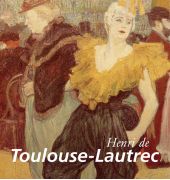 Toulouse-Lautrec begann noch während seines Studiums das Pariser Nachtleben zu erkunden; es sollte ihm zur wichtigsten Quelle der Inspiration werden und schließlich auch zur Beeinträchtigung seiner Gesundheit führen. Das Paris der 1890er Jahre mit seinen schillernden Charakteren kann man nur durch die Augen Lautrecs wahrnehmen. Die erste bedeutende Persönlichkeit des Pariser Nachtlebens, der Lautrec begegnete, war der berühmte Cabaretsänger Aristide Bruant (1851 bis 1925), ein Mann, der Lautrec ganz wesentlich darin unterstützte, seine eigene künstlerische Vision zu entwickeln. In den 1890er Jahren inspirierten Lautrec zahlreiche Bühnenkünstler: die auf dem berühmten Plakat des Moulin Rouge zu sehenden Tänzerinnen La Goulue und Jane Avril oder Loïe Fuller, die Sängerinnen May Belfort, Yvette Guilbert und Marcelle Lender sowie die Schauspielerin Réjane. Lautrecs Aufrichtigkeit, mit der er viele Aspekte des Lebens abbildete, die die meisten seiner höher geachteten Zeitgenossen lieber unter den Teppich kehrten, erregte erwartungsgemäß Anstoß. Der deutsche Kunstkritiker Gensel schrieb: “Von Verehrung kann natürlich bei diesem Meister in der Darstellung alles Gemeinen und Perversen von vornherein nicht die Rede sein. Dass man Schweinereien – es gibt keinen milderen Ausdruck dafür – wie Elles öffentlich ausstellen darf, ohne einen Schrei der Entrüstung zu hören, erklärt sich nur daraus, dass ein Teil des großen Publikums den Sinn dieses Zyklus gar nicht versteht und ein anderer sich schämt, sein Verständnis einzugestehen!” ... Далее
Toulouse-Lautrec begann noch während seines Studiums das Pariser Nachtleben zu erkunden; es sollte ihm zur wichtigsten Quelle der Inspiration werden und schließlich auch zur Beeinträchtigung seiner Gesundheit führen. Das Paris der 1890er Jahre mit seinen schillernden Charakteren kann man nur durch die Augen Lautrecs wahrnehmen. Die erste bedeutende Persönlichkeit des Pariser Nachtlebens, der Lautrec begegnete, war der berühmte Cabaretsänger Aristide Bruant (1851 bis 1925), ein Mann, der Lautrec ganz wesentlich darin unterstützte, seine eigene künstlerische Vision zu entwickeln. In den 1890er Jahren inspirierten Lautrec zahlreiche Bühnenkünstler: die auf dem berühmten Plakat des Moulin Rouge zu sehenden Tänzerinnen La Goulue und Jane Avril oder Loïe Fuller, die Sängerinnen May Belfort, Yvette Guilbert und Marcelle Lender sowie die Schauspielerin Réjane. Lautrecs Aufrichtigkeit, mit der er viele Aspekte des Lebens abbildete, die die meisten seiner höher geachteten Zeitgenossen lieber unter den Teppich kehrten, erregte erwartungsgemäß Anstoß. Der deutsche Kunstkritiker Gensel schrieb: “Von Verehrung kann natürlich bei diesem Meister in der Darstellung alles Gemeinen und Perversen von vornherein nicht die Rede sein. Dass man Schweinereien – es gibt keinen milderen Ausdruck dafür – wie Elles öffentlich ausstellen darf, ohne einen Schrei der Entrüstung zu hören, erklärt sich nur daraus, dass ein Teil des großen Publikums den Sinn dieses Zyklus gar nicht versteht und ein anderer sich schämt, sein Verständnis einzugestehen!” ... Далее -
12.
 Degas bezog seine wichtigsten Motive aus dem lebendigen Paris der Epoche und lernte die künftigen Impressionisten wahrscheinlich erst im Café Guerbois kennen. Im Jahr 1852 erhielt er ein Juradiplom, und 1853 begann er eine Malerausbildung bei Louis-Ernest Barrias. Ab 1854 reiste Degas regelmäßig nach Italien, zunächst nach Neapel, dann nach Rom und Florenz, wo er sich intensiv dem Studium der Alten Meister widmete. In den sechziger und siebziger Jahren wurde er zum Maler von Jockeys, Pferden und Pferderennen. Sein fabelhaftes Malergedächtnis merkte sich die Besonderheiten ihrer Bewegungen, wo immer er sie beobachten konnte. Das Pferd wurde für ihn zur Inkarnation der Geschwindigkeit. Um die Mitte der 1860-Jahre machte Degas eine neue Entdeckung: Ballett und Oper. Diese Institutionen entwickelten sich für ihn nun zum beherrschenden Thema. Er zeigt das erste, ganz dem Tanz gewidmete Bild: Ballettsaal der Oper in der Rue Le Peletier. Die Komposition ist sorgfältig ausgewogen, die Personengruppen links und rechts ergänzen einander, aber jede einzelne Tänzerin ist ganz in ihre eigenen Übungen versunken, jede bewegt sich unabhängig von allen anderen. In diesen Institutionen fand er die zweite Domäne seines künstlerischen Schaffens, die ihn bis an sein Lebensende faszinieren sollte. ... Далее
Degas bezog seine wichtigsten Motive aus dem lebendigen Paris der Epoche und lernte die künftigen Impressionisten wahrscheinlich erst im Café Guerbois kennen. Im Jahr 1852 erhielt er ein Juradiplom, und 1853 begann er eine Malerausbildung bei Louis-Ernest Barrias. Ab 1854 reiste Degas regelmäßig nach Italien, zunächst nach Neapel, dann nach Rom und Florenz, wo er sich intensiv dem Studium der Alten Meister widmete. In den sechziger und siebziger Jahren wurde er zum Maler von Jockeys, Pferden und Pferderennen. Sein fabelhaftes Malergedächtnis merkte sich die Besonderheiten ihrer Bewegungen, wo immer er sie beobachten konnte. Das Pferd wurde für ihn zur Inkarnation der Geschwindigkeit. Um die Mitte der 1860-Jahre machte Degas eine neue Entdeckung: Ballett und Oper. Diese Institutionen entwickelten sich für ihn nun zum beherrschenden Thema. Er zeigt das erste, ganz dem Tanz gewidmete Bild: Ballettsaal der Oper in der Rue Le Peletier. Die Komposition ist sorgfältig ausgewogen, die Personengruppen links und rechts ergänzen einander, aber jede einzelne Tänzerin ist ganz in ihre eigenen Übungen versunken, jede bewegt sich unabhängig von allen anderen. In diesen Institutionen fand er die zweite Domäne seines künstlerischen Schaffens, die ihn bis an sein Lebensende faszinieren sollte. ... Далее -
13.
 Pierre-Auguste Renoir war Augenzeuge vieler bedeutender Ereignisse. Sein jüngerer Bruder Edmond erzählte: “Seine Kohlezeichnungen an den Mauern brachten die Eltern auf den Gedanken, dass er ein malerisches Talent besitze, und sie schickten ihn in die Lehre zu einem Porzellanmaler. Er hat also Glück gehabt, was nicht so oft vorkommt.” Bald darauf entstand das erste Bild des künftigen Impressionisten. Er bestand 1862 die Aufnahmeprüfungen an der Ecole des Beaux-Arts und nahm sein Studium in der Werkstatt von Charles Gleyre auf. Viel später, als bereits ausgereifter Künstler, erhielt Renoir die Möglichkeit, das Schaffen von Rembrandt direkt in Holland, die Werke von Velázquez, Goya und El Greco in Spanien und die Raphaels in Italien kennen zu lernen. Aber die erste Ausstellung der Impressionisten war für Renoir der erste Schritt zur Behauptung seiner eigenen künstlerischen Sicht. Ab 1873 ließ er sich auf dem Montmartre nieder, wo er bis 1884 lebte. Dort fand er auch seine Familie und lernte in den 1870er Jahren seine treuesten Freunde kennen. Auf der dritten Impressionisten-Ausstellung im Jahr 1877 zeigte Renoir ein ganzes Panorama von Bildern (über 20 Arbeiten). Darunter waren viele Landschaften, die in Paris an der Seine, in der Umgebung der Stadt und im Garten Monets gemalt worden waren, Studien von Frauenköpfen und Blumensträußen, Portraits, aber auch Die Schaukel und Ball im Moulin de la Galette. Durand-Ruel veranstaltete 1883 auf dem Boulevard de la Madeleine in Paris die erste Einzelausstellung Renoirs, auf der 70 Werke gezeigt wurden. Damit begann für Renoir eine Glückssträhne. Seine Bilder wurden in London, Brüssel und auf der Siebten Internationalen Ausstellung bei Georges Petit im Jahre 1886 ausgestellt. In einem Brief schrieb der Maler: “Die Ausstellung von Petit ist eröffnet und soll Erfolg haben. Es ist ja so schwer, über sich selbst zu urteilen. Ich glaube, es ist mir gelungen, einen Schritt auf dem Weg zur Achtung des Publikums zu tun, einen kleinen Schritt. Aber immerhin.” ... Далее
Pierre-Auguste Renoir war Augenzeuge vieler bedeutender Ereignisse. Sein jüngerer Bruder Edmond erzählte: “Seine Kohlezeichnungen an den Mauern brachten die Eltern auf den Gedanken, dass er ein malerisches Talent besitze, und sie schickten ihn in die Lehre zu einem Porzellanmaler. Er hat also Glück gehabt, was nicht so oft vorkommt.” Bald darauf entstand das erste Bild des künftigen Impressionisten. Er bestand 1862 die Aufnahmeprüfungen an der Ecole des Beaux-Arts und nahm sein Studium in der Werkstatt von Charles Gleyre auf. Viel später, als bereits ausgereifter Künstler, erhielt Renoir die Möglichkeit, das Schaffen von Rembrandt direkt in Holland, die Werke von Velázquez, Goya und El Greco in Spanien und die Raphaels in Italien kennen zu lernen. Aber die erste Ausstellung der Impressionisten war für Renoir der erste Schritt zur Behauptung seiner eigenen künstlerischen Sicht. Ab 1873 ließ er sich auf dem Montmartre nieder, wo er bis 1884 lebte. Dort fand er auch seine Familie und lernte in den 1870er Jahren seine treuesten Freunde kennen. Auf der dritten Impressionisten-Ausstellung im Jahr 1877 zeigte Renoir ein ganzes Panorama von Bildern (über 20 Arbeiten). Darunter waren viele Landschaften, die in Paris an der Seine, in der Umgebung der Stadt und im Garten Monets gemalt worden waren, Studien von Frauenköpfen und Blumensträußen, Portraits, aber auch Die Schaukel und Ball im Moulin de la Galette. Durand-Ruel veranstaltete 1883 auf dem Boulevard de la Madeleine in Paris die erste Einzelausstellung Renoirs, auf der 70 Werke gezeigt wurden. Damit begann für Renoir eine Glückssträhne. Seine Bilder wurden in London, Brüssel und auf der Siebten Internationalen Ausstellung bei Georges Petit im Jahre 1886 ausgestellt. In einem Brief schrieb der Maler: “Die Ausstellung von Petit ist eröffnet und soll Erfolg haben. Es ist ja so schwer, über sich selbst zu urteilen. Ich glaube, es ist mir gelungen, einen Schritt auf dem Weg zur Achtung des Publikums zu tun, einen kleinen Schritt. Aber immerhin.” ... Далее -
14.
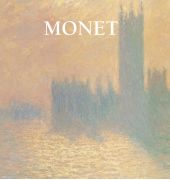 Als Impressionist zu gelten war für Monet eine Auszeichnung. Er war es aus tiefer Überzeugung und blieb es bis an das Ende seines langen Lebens. Er begnügte sich mit einem einzigen Genre, dem der Landschaftsmalerei. Hier aber brachte er es zu einer Vollkommenheit, an die keiner seiner Zeitgenossen heranreichte. Im Sommer jenes Jahres kam es zu gemeinsamen Malübungen mit Boudin (1824 bis 1898) am Meeresstrand. “Mit der Zeit gingen mir die Augen auf und ich begann, die Natur zu verstehen; zugleich lernte ich, sie zu lieben” – so erinnert sich Monet später an diese gemeinsamen Exerzitien. Er besucht nicht die Ecole des Beaux-Arts, sondern zieht die von Monsieur Suisse, einem ehemaligen Modell Davids, gegründete freie “Académie Suisse” vor. Hier war es möglich, für einen geringen Beitrag lebende Modelle zu malen und zu zeichnen. Die Farbskala der Bilder, die Monet 1871 und 1872 malte, ist nicht sehr breit; sie erinnert an die der Barbizon-Schule und an die Seestücke Boudins. Die Grundtöne sind braungelb und blaugrau. Im Jahr 1877 wurde die dritte Ausstellung der Impressionisten eröffnet, bei der Monet zum ersten Mal eine Bilderserie zeigte. Mit seinem Motiv, dem Bahnhof Saint-Lazare, setzte Monet nicht nur Manets Die Eisenbahn und seine eigenen Landschaftsbilder aus Argenteuil fort, er schloss sich darüber hinaus der bei den Künstlern wachsenden Tendenz an, sich von diesem Transportmittel faszinieren zu lassen. In seinem Wohnort Giverny wurden die Bilderserien Monets wichtigste Arbeitsmethode. In den 1890er Jahren entdeckte Monet London. Zwar begann er die Bilder allesamt in London, beendete viele von ihnen aber in Giverny. Für den Schriftsteller Octave Mirbeau (1848 bis 1917) war Monet ein Mensch, der Wunder vollbrachte: Mit Hilfe der Farben habe er auf der Leinwand das Sonnenlicht, etwas nahezu Unfassbares, nachgebildet und es um eine Unzahl prismatischer Facetten bereichert. Tatsächlich hat Monet das Potenzial der Farbe mit nahezu wissenschaftlicher Strenge bis zu seinen äußersten Konsequenzen getrieben; kein anderer Impressionist ist darin so weit gegangen wie er, und es ist wenig wahrscheinlich, dass man in dieser Richtung hätte noch weitergehen können. ... Далее
Als Impressionist zu gelten war für Monet eine Auszeichnung. Er war es aus tiefer Überzeugung und blieb es bis an das Ende seines langen Lebens. Er begnügte sich mit einem einzigen Genre, dem der Landschaftsmalerei. Hier aber brachte er es zu einer Vollkommenheit, an die keiner seiner Zeitgenossen heranreichte. Im Sommer jenes Jahres kam es zu gemeinsamen Malübungen mit Boudin (1824 bis 1898) am Meeresstrand. “Mit der Zeit gingen mir die Augen auf und ich begann, die Natur zu verstehen; zugleich lernte ich, sie zu lieben” – so erinnert sich Monet später an diese gemeinsamen Exerzitien. Er besucht nicht die Ecole des Beaux-Arts, sondern zieht die von Monsieur Suisse, einem ehemaligen Modell Davids, gegründete freie “Académie Suisse” vor. Hier war es möglich, für einen geringen Beitrag lebende Modelle zu malen und zu zeichnen. Die Farbskala der Bilder, die Monet 1871 und 1872 malte, ist nicht sehr breit; sie erinnert an die der Barbizon-Schule und an die Seestücke Boudins. Die Grundtöne sind braungelb und blaugrau. Im Jahr 1877 wurde die dritte Ausstellung der Impressionisten eröffnet, bei der Monet zum ersten Mal eine Bilderserie zeigte. Mit seinem Motiv, dem Bahnhof Saint-Lazare, setzte Monet nicht nur Manets Die Eisenbahn und seine eigenen Landschaftsbilder aus Argenteuil fort, er schloss sich darüber hinaus der bei den Künstlern wachsenden Tendenz an, sich von diesem Transportmittel faszinieren zu lassen. In seinem Wohnort Giverny wurden die Bilderserien Monets wichtigste Arbeitsmethode. In den 1890er Jahren entdeckte Monet London. Zwar begann er die Bilder allesamt in London, beendete viele von ihnen aber in Giverny. Für den Schriftsteller Octave Mirbeau (1848 bis 1917) war Monet ein Mensch, der Wunder vollbrachte: Mit Hilfe der Farben habe er auf der Leinwand das Sonnenlicht, etwas nahezu Unfassbares, nachgebildet und es um eine Unzahl prismatischer Facetten bereichert. Tatsächlich hat Monet das Potenzial der Farbe mit nahezu wissenschaftlicher Strenge bis zu seinen äußersten Konsequenzen getrieben; kein anderer Impressionist ist darin so weit gegangen wie er, und es ist wenig wahrscheinlich, dass man in dieser Richtung hätte noch weitergehen können. ... Далее -
15.
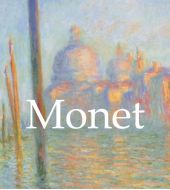 Para Claude Monet, el que se le considerara “impresionista” fue siempre un motivo de orgullo. A pesar de todas las críticas que se han hecho a su trabajo, siguió siendo un verdadero impresionista hasta el final de su muy larga vida. Lo era por convicción profunda y, por el impresionismo, pudo haber sacrificado muchas otras oportunidades que su inmenso talento le ofrecía. Monet no pintaba composiciones clásicas con figuras y nunca fue retratista, aunque su entrenamiento profesional incluía estas habilidades. Eligió un solo género y lo hizo suyo: el paisajismo, y en él logró un grado de perfección que ninguno de sus contemporáneos pudo conseguir. Sin embargo, cuando era niño, comenzó por dibujar caricaturas. Boudin aconsejó a Monet que dejara de hacer caricaturas y se dedicara a los paisajes. El mar, el cielo, los animales, las personas y los árboles son hermosos en el estado en que la naturaleza los creó, rodeados de aire y luz. De hecho, fue Boudin quien trasmitió a Monet su convicción de la importancia de trabajar al aire libre, que a su vez, Monet transmitiría a sus amigos impresionistas. Monet no quiso asistir a la Escuela de Bellas Artes. Eligió estudiar en una escuela privada, L’Académie Suisse, fundada por un ex-modelo en Quai d’Orfèvres, cerca del puente Saint-Michel. Ahí era posible dibujar y pintar modelos vivos por una tarifa modesta. Ahí conoció también al futuro impresionista Camille Pissarro. Más tarde, en el estudio de Gleyre, Monet conoció a Auguste Renoir, Alfred Sisley y Frédéric Bazille. Monet consideraba muy importante presentar a Boudin a sus nuevos amigos. También le habló a sus amigos de otro pintor que había encontrado en Normandía. Se trataba del holandés Jongkind. Sus paisajes estaban saturados de color y su sinceridad, que en ocasiones rayaba en inocencia, combinaba la sutil observación de la naturaleza cambiante de la costa normanda. En aquella época, los paisajes de Monet aún no se caracterizaban por una gran riqueza de color. Más bien recordaban las tonalidades de pinturas de los artistas de la escuela de Barbizon y las marinas de Boudin. Compuso un rango de colores basados en amarillo a marrón o en azul a gris. En la tercera exhibición impresionista en 1877, Monet presentó una serie de pinturas por primera vez: siete vistas de la estación ferroviaria de Saint-Lazare. Las seleccionó entre doce que había pintado en la estación. Este motivo en el trabajo de Monet es coherente no sólo con la obra Chemin de fer (El ferrocarril) de Manet y con sus propios paisajes en los que aparecían trenes y estaciones en Argenteuil, sino también con una tendencia que surgió tras la aparición de los primeros ferrocarriles. En 1883, Monet compró una casa en el poblado de Giverny, cerca del pequeño pueblo de Vernon. En Giverny, pintar series se convirtió en una de sus ocupaciones principales. Los prados se convirtieron en su lugar de trabajo permanente. Cuando un periodista que había llegado desde When Vétheuil a entrevistar a Monet le preguntó dónde estaba su estudio, el pintor le respondió: “¡Mi estudio! Nunca he tenido uno y no veo la razón por la que alguien quiera encerrarse en una habitación. Para dibujar, sí, pero para pintar, no”. Entonces hizo un gesto amplio para abarcar el Sena, las colinas y la silueta de un pequeño pueblo y declaró: “Este es mi verdadero estudio”. Monet empezó a ir a Londres en la última década del siglo XIX. Comenzó todas sus pinturas de Londres copiando directo de la naturaleza, pero completó muchas de ellas después, en Giverny. La serie formó un todo indivisible y el pintor tuvo que trabajar en cada uno de sus lienzos en algún momento. Un amigo de Monet, el escritor Octave Mirbeau, escribió que había logrado un milagro. Con aquellos colores logró recrear en el lienzo algo casi imposible de capturar: reprodujo la luz del sol, enriqueciéndola con un número infinito de reflejos. Como ningún otro de los impresionistas, Claude Monet adoptó una perspectiva casi científica de las posibilidades del color y la llevó hasta el límite; es poco probable que alguien más lograra llegar tan lejos como él en esa dirección. ... Далее
Para Claude Monet, el que se le considerara “impresionista” fue siempre un motivo de orgullo. A pesar de todas las críticas que se han hecho a su trabajo, siguió siendo un verdadero impresionista hasta el final de su muy larga vida. Lo era por convicción profunda y, por el impresionismo, pudo haber sacrificado muchas otras oportunidades que su inmenso talento le ofrecía. Monet no pintaba composiciones clásicas con figuras y nunca fue retratista, aunque su entrenamiento profesional incluía estas habilidades. Eligió un solo género y lo hizo suyo: el paisajismo, y en él logró un grado de perfección que ninguno de sus contemporáneos pudo conseguir. Sin embargo, cuando era niño, comenzó por dibujar caricaturas. Boudin aconsejó a Monet que dejara de hacer caricaturas y se dedicara a los paisajes. El mar, el cielo, los animales, las personas y los árboles son hermosos en el estado en que la naturaleza los creó, rodeados de aire y luz. De hecho, fue Boudin quien trasmitió a Monet su convicción de la importancia de trabajar al aire libre, que a su vez, Monet transmitiría a sus amigos impresionistas. Monet no quiso asistir a la Escuela de Bellas Artes. Eligió estudiar en una escuela privada, L’Académie Suisse, fundada por un ex-modelo en Quai d’Orfèvres, cerca del puente Saint-Michel. Ahí era posible dibujar y pintar modelos vivos por una tarifa modesta. Ahí conoció también al futuro impresionista Camille Pissarro. Más tarde, en el estudio de Gleyre, Monet conoció a Auguste Renoir, Alfred Sisley y Frédéric Bazille. Monet consideraba muy importante presentar a Boudin a sus nuevos amigos. También le habló a sus amigos de otro pintor que había encontrado en Normandía. Se trataba del holandés Jongkind. Sus paisajes estaban saturados de color y su sinceridad, que en ocasiones rayaba en inocencia, combinaba la sutil observación de la naturaleza cambiante de la costa normanda. En aquella época, los paisajes de Monet aún no se caracterizaban por una gran riqueza de color. Más bien recordaban las tonalidades de pinturas de los artistas de la escuela de Barbizon y las marinas de Boudin. Compuso un rango de colores basados en amarillo a marrón o en azul a gris. En la tercera exhibición impresionista en 1877, Monet presentó una serie de pinturas por primera vez: siete vistas de la estación ferroviaria de Saint-Lazare. Las seleccionó entre doce que había pintado en la estación. Este motivo en el trabajo de Monet es coherente no sólo con la obra Chemin de fer (El ferrocarril) de Manet y con sus propios paisajes en los que aparecían trenes y estaciones en Argenteuil, sino también con una tendencia que surgió tras la aparición de los primeros ferrocarriles. En 1883, Monet compró una casa en el poblado de Giverny, cerca del pequeño pueblo de Vernon. En Giverny, pintar series se convirtió en una de sus ocupaciones principales. Los prados se convirtieron en su lugar de trabajo permanente. Cuando un periodista que había llegado desde When Vétheuil a entrevistar a Monet le preguntó dónde estaba su estudio, el pintor le respondió: “¡Mi estudio! Nunca he tenido uno y no veo la razón por la que alguien quiera encerrarse en una habitación. Para dibujar, sí, pero para pintar, no”. Entonces hizo un gesto amplio para abarcar el Sena, las colinas y la silueta de un pequeño pueblo y declaró: “Este es mi verdadero estudio”. Monet empezó a ir a Londres en la última década del siglo XIX. Comenzó todas sus pinturas de Londres copiando directo de la naturaleza, pero completó muchas de ellas después, en Giverny. La serie formó un todo indivisible y el pintor tuvo que trabajar en cada uno de sus lienzos en algún momento. Un amigo de Monet, el escritor Octave Mirbeau, escribió que había logrado un milagro. Con aquellos colores logró recrear en el lienzo algo casi imposible de capturar: reprodujo la luz del sol, enriqueciéndola con un número infinito de reflejos. Como ningún otro de los impresionistas, Claude Monet adoptó una perspectiva casi científica de las posibilidades del color y la llevó hasta el límite; es poco probable que alguien más lograra llegar tan lejos como él en esa dirección. ... Далее -
16.
 Toulouse-Lautrec begann noch während seines Studiums das Pariser Nachtleben zu erkunden; es sollte ihm zur wichtigsten Quelle der Inspiration werden und schließlich auch zur Beeinträchtigung seiner Gesundheit führen. Das Paris der 1890er Jahre mit seinen schillernden Charakteren kann man nur durch die Augen Lautrecs wahrnehmen. Die erste bedeutende Persönlichkeit des Pariser Nachtlebens, der Lautrec begegnete, war der berühmte Cabaretsänger Aristide Bruant (1851 bis 1925), ein Mann, der Lautrec ganz wesentlich darin unterstützte, seine eigene künstlerische Vision zu entwickeln. In den 1890er Jahren inspirierten Lautrec zahlreiche Bühnenkünstler: die auf dem berühmten Plakat des Moulin Rouge zu sehenden Tänzerinnen La Goulue und Jane Avril oder Loïe Fuller, die Sängerinnen May Belfort, Yvette Guilbert und Marcelle Lender sowie die Schauspielerin Réjane. Lautrecs Aufrichtigkeit, mit der er viele Aspekte des Lebens abbildete, die die meisten seiner höher geachteten Zeitgenossen lieber unter den Teppich kehrten, erregte erwartungsgemäß Anstoß. Der deutsche Kunstkritiker Gensel schrieb: “Von Verehrung kann natürlich bei diesem Meister in der Darstellung alles Gemeinen und Perversen von vornherein nicht die Rede sein. Dass man Schweinereien – es gibt keinen milderen Ausdruck dafür – wie Elles öffentlich ausstellen darf, ohne einen Schrei der Entrüstung zu hören, erklärt sich nur daraus, dass ein Teil des großen Publikums den Sinn dieses Zyklus gar nicht versteht und ein anderer sich schämt, sein Verständnis einzugestehen!” ... Далее
Toulouse-Lautrec begann noch während seines Studiums das Pariser Nachtleben zu erkunden; es sollte ihm zur wichtigsten Quelle der Inspiration werden und schließlich auch zur Beeinträchtigung seiner Gesundheit führen. Das Paris der 1890er Jahre mit seinen schillernden Charakteren kann man nur durch die Augen Lautrecs wahrnehmen. Die erste bedeutende Persönlichkeit des Pariser Nachtlebens, der Lautrec begegnete, war der berühmte Cabaretsänger Aristide Bruant (1851 bis 1925), ein Mann, der Lautrec ganz wesentlich darin unterstützte, seine eigene künstlerische Vision zu entwickeln. In den 1890er Jahren inspirierten Lautrec zahlreiche Bühnenkünstler: die auf dem berühmten Plakat des Moulin Rouge zu sehenden Tänzerinnen La Goulue und Jane Avril oder Loïe Fuller, die Sängerinnen May Belfort, Yvette Guilbert und Marcelle Lender sowie die Schauspielerin Réjane. Lautrecs Aufrichtigkeit, mit der er viele Aspekte des Lebens abbildete, die die meisten seiner höher geachteten Zeitgenossen lieber unter den Teppich kehrten, erregte erwartungsgemäß Anstoß. Der deutsche Kunstkritiker Gensel schrieb: “Von Verehrung kann natürlich bei diesem Meister in der Darstellung alles Gemeinen und Perversen von vornherein nicht die Rede sein. Dass man Schweinereien – es gibt keinen milderen Ausdruck dafür – wie Elles öffentlich ausstellen darf, ohne einen Schrei der Entrüstung zu hören, erklärt sich nur daraus, dass ein Teil des großen Publikums den Sinn dieses Zyklus gar nicht versteht und ein anderer sich schämt, sein Verständnis einzugestehen!” ... Далее -
17.
 Alfred Sisley (1839-1899) gilt als der Schüchternste unter den Impressionisten und obwohl er künstlerisch immer im Schatten von Pierre-Auguste Renoir und Claude Monet stand, verband ihn mit beiden eine lebenslange Freundschaft. In Sisleys Landschaftsbildern ist stets ein Gefühl aufrichtiger Bewunderung für die Natur zu spüren, eine große Zärtlichkeit und zugleich ein wenig Trauer. Die Natur wird nicht einfach auf der Leinwand wiedergegeben. Vielmehr steht die Farbe im Dienst des Ausdrucks einer ganzen Skala von Gefühlen, die die Natur im Menschen erweckt. Mit dieser umfangreich bebilderten Ebook-Monografie wird der Versuch unternommen, Sisley zu der künstlerischen Beachtung zu verhelfen, die ihm zu Lebzeiten verwehrt blieb. ... Далее
Alfred Sisley (1839-1899) gilt als der Schüchternste unter den Impressionisten und obwohl er künstlerisch immer im Schatten von Pierre-Auguste Renoir und Claude Monet stand, verband ihn mit beiden eine lebenslange Freundschaft. In Sisleys Landschaftsbildern ist stets ein Gefühl aufrichtiger Bewunderung für die Natur zu spüren, eine große Zärtlichkeit und zugleich ein wenig Trauer. Die Natur wird nicht einfach auf der Leinwand wiedergegeben. Vielmehr steht die Farbe im Dienst des Ausdrucks einer ganzen Skala von Gefühlen, die die Natur im Menschen erweckt. Mit dieser umfangreich bebilderten Ebook-Monografie wird der Versuch unternommen, Sisley zu der künstlerischen Beachtung zu verhelfen, die ihm zu Lebzeiten verwehrt blieb. ... Далее -
18.
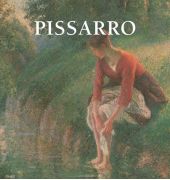 „Vater Pissaro“, wie seine Freunde ihn gern nannten, war wohl der nüchternste der Impressionisten. Vielleicht lag es an seinem Alter (welches weitaus fortgeschrittener war, als das seiner Kollegen Monet, Sisley, Bazille und Renoir) oder vielmehr an seiner Lebenserfahrung, die seine Werke sowohl in ihren Themen als auch in ihrer Komposition durchaus ruhig und schlicht erscheinen lassen. Ein Mann mit einfachem Geschmack, der es genoss, die Landbevölkerung in den Straßen zu malen, auch wenn er später mit seinen Stadtansichten Berühmtheit erlangen sollte, die er mit derselben Leidenschaft fertigte, die in ihm aufkam, wenn er wieder einen stürmischen Himmel oder den vom Frost gezeichneten Morgen auf die Leinwand bannte. ... Далее
„Vater Pissaro“, wie seine Freunde ihn gern nannten, war wohl der nüchternste der Impressionisten. Vielleicht lag es an seinem Alter (welches weitaus fortgeschrittener war, als das seiner Kollegen Monet, Sisley, Bazille und Renoir) oder vielmehr an seiner Lebenserfahrung, die seine Werke sowohl in ihren Themen als auch in ihrer Komposition durchaus ruhig und schlicht erscheinen lassen. Ein Mann mit einfachem Geschmack, der es genoss, die Landbevölkerung in den Straßen zu malen, auch wenn er später mit seinen Stadtansichten Berühmtheit erlangen sollte, die er mit derselben Leidenschaft fertigte, die in ihm aufkam, wenn er wieder einen stürmischen Himmel oder den vom Frost gezeichneten Morgen auf die Leinwand bannte. ... Далее -
19.
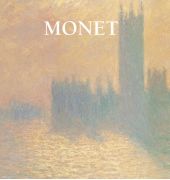 Als Impressionist zu gelten war für Monet eine Auszeichnung. Er war es aus tiefer Überzeugung und blieb es bis an das Ende seines langen Lebens. Er begnügte sich mit einem einzigen Genre, dem der Landschaftsmalerei. Hier aber brachte er es zu einer Vollkommenheit, an die keiner seiner Zeitgenossen heranreichte. Im Sommer jenes Jahres kam es zu gemeinsamen Malübungen mit Boudin (1824 bis 1898) am Meeresstrand. “Mit der Zeit gingen mir die Augen auf und ich begann, die Natur zu verstehen; zugleich lernte ich, sie zu lieben” – so erinnert sich Monet später an diese gemeinsamen Exerzitien. Er besucht nicht die Ecole des Beaux-Arts, sondern zieht die von Monsieur Suisse, einem ehemaligen Modell Davids, gegründete freie “Académie Suisse” vor. Hier war es möglich, für einen geringen Beitrag lebende Modelle zu malen und zu zeichnen. Die Farbskala der Bilder, die Monet 1871 und 1872 malte, ist nicht sehr breit; sie erinnert an die der Barbizon-Schule und an die Seestücke Boudins. Die Grundtöne sind braungelb und blaugrau. Im Jahr 1877 wurde die dritte Ausstellung der Impressionisten eröffnet, bei der Monet zum ersten Mal eine Bilderserie zeigte. Mit seinem Motiv, dem Bahnhof Saint-Lazare, setzte Monet nicht nur Manets Die Eisenbahn und seine eigenen Landschaftsbilder aus Argenteuil fort, er schloss sich darüber hinaus der bei den Künstlern wachsenden Tendenz an, sich von diesem Transportmittel faszinieren zu lassen. In seinem Wohnort Giverny wurden die Bilderserien Monets wichtigste Arbeitsmethode. In den 1890er Jahren entdeckte Monet London. Zwar begann er die Bilder allesamt in London, beendete viele von ihnen aber in Giverny. Für den Schriftsteller Octave Mirbeau (1848 bis 1917) war Monet ein Mensch, der Wunder vollbrachte: Mit Hilfe der Farben habe er auf der Leinwand das Sonnenlicht, etwas nahezu Unfassbares, nachgebildet und es um eine Unzahl prismatischer Facetten bereichert. Tatsächlich hat Monet das Potenzial der Farbe mit nahezu wissenschaftlicher Strenge bis zu seinen äußersten Konsequenzen getrieben; kein anderer Impressionist ist darin so weit gegangen wie er, und es ist wenig wahrscheinlich, dass man in dieser Richtung hätte noch weitergehen können. ... Далее
Als Impressionist zu gelten war für Monet eine Auszeichnung. Er war es aus tiefer Überzeugung und blieb es bis an das Ende seines langen Lebens. Er begnügte sich mit einem einzigen Genre, dem der Landschaftsmalerei. Hier aber brachte er es zu einer Vollkommenheit, an die keiner seiner Zeitgenossen heranreichte. Im Sommer jenes Jahres kam es zu gemeinsamen Malübungen mit Boudin (1824 bis 1898) am Meeresstrand. “Mit der Zeit gingen mir die Augen auf und ich begann, die Natur zu verstehen; zugleich lernte ich, sie zu lieben” – so erinnert sich Monet später an diese gemeinsamen Exerzitien. Er besucht nicht die Ecole des Beaux-Arts, sondern zieht die von Monsieur Suisse, einem ehemaligen Modell Davids, gegründete freie “Académie Suisse” vor. Hier war es möglich, für einen geringen Beitrag lebende Modelle zu malen und zu zeichnen. Die Farbskala der Bilder, die Monet 1871 und 1872 malte, ist nicht sehr breit; sie erinnert an die der Barbizon-Schule und an die Seestücke Boudins. Die Grundtöne sind braungelb und blaugrau. Im Jahr 1877 wurde die dritte Ausstellung der Impressionisten eröffnet, bei der Monet zum ersten Mal eine Bilderserie zeigte. Mit seinem Motiv, dem Bahnhof Saint-Lazare, setzte Monet nicht nur Manets Die Eisenbahn und seine eigenen Landschaftsbilder aus Argenteuil fort, er schloss sich darüber hinaus der bei den Künstlern wachsenden Tendenz an, sich von diesem Transportmittel faszinieren zu lassen. In seinem Wohnort Giverny wurden die Bilderserien Monets wichtigste Arbeitsmethode. In den 1890er Jahren entdeckte Monet London. Zwar begann er die Bilder allesamt in London, beendete viele von ihnen aber in Giverny. Für den Schriftsteller Octave Mirbeau (1848 bis 1917) war Monet ein Mensch, der Wunder vollbrachte: Mit Hilfe der Farben habe er auf der Leinwand das Sonnenlicht, etwas nahezu Unfassbares, nachgebildet und es um eine Unzahl prismatischer Facetten bereichert. Tatsächlich hat Monet das Potenzial der Farbe mit nahezu wissenschaftlicher Strenge bis zu seinen äußersten Konsequenzen getrieben; kein anderer Impressionist ist darin so weit gegangen wie er, und es ist wenig wahrscheinlich, dass man in dieser Richtung hätte noch weitergehen können. ... Далее -
20.
 Degas bezog seine wichtigsten Motive aus dem lebendigen Paris der Epoche und lernte die künftigen Impressionisten wahrscheinlich erst im Café Guerbois kennen. Im Jahr 1852 erhielt er ein Juradiplom, und 1853 begann er eine Malerausbildung bei Louis-Ernest Barrias. Ab 1854 reiste Degas regelmäßig nach Italien, zunächst nach Neapel, dann nach Rom und Florenz, wo er sich intensiv dem Studium der Alten Meister widmete. In den sechziger und siebziger Jahren wurde er zum Maler von Jockeys, Pferden und Pferderennen. Sein fabelhaftes Malergedächtnis merkte sich die Besonderheiten ihrer Bewegungen, wo immer er sie beobachten konnte. Das Pferd wurde für ihn zur Inkarnation der Geschwindigkeit. Um die Mitte der 1860-Jahre machte Degas eine neue Entdeckung: Ballett und Oper. Diese Institutionen entwickelten sich für ihn nun zum beherrschenden Thema. Er zeigt das erste, ganz dem Tanz gewidmete Bild: Ballettsaal der Oper in der Rue Le Peletier. Die Komposition ist sorgfältig ausgewogen, die Personengruppen links und rechts ergänzen einander, aber jede einzelne Tänzerin ist ganz in ihre eigenen Übungen versunken, jede bewegt sich unabhängig von allen anderen. In diesen Institutionen fand er die zweite Domäne seines künstlerischen Schaffens, die ihn bis an sein Lebensende faszinieren sollte. ... Далее
Degas bezog seine wichtigsten Motive aus dem lebendigen Paris der Epoche und lernte die künftigen Impressionisten wahrscheinlich erst im Café Guerbois kennen. Im Jahr 1852 erhielt er ein Juradiplom, und 1853 begann er eine Malerausbildung bei Louis-Ernest Barrias. Ab 1854 reiste Degas regelmäßig nach Italien, zunächst nach Neapel, dann nach Rom und Florenz, wo er sich intensiv dem Studium der Alten Meister widmete. In den sechziger und siebziger Jahren wurde er zum Maler von Jockeys, Pferden und Pferderennen. Sein fabelhaftes Malergedächtnis merkte sich die Besonderheiten ihrer Bewegungen, wo immer er sie beobachten konnte. Das Pferd wurde für ihn zur Inkarnation der Geschwindigkeit. Um die Mitte der 1860-Jahre machte Degas eine neue Entdeckung: Ballett und Oper. Diese Institutionen entwickelten sich für ihn nun zum beherrschenden Thema. Er zeigt das erste, ganz dem Tanz gewidmete Bild: Ballettsaal der Oper in der Rue Le Peletier. Die Komposition ist sorgfältig ausgewogen, die Personengruppen links und rechts ergänzen einander, aber jede einzelne Tänzerin ist ganz in ihre eigenen Übungen versunken, jede bewegt sich unabhängig von allen anderen. In diesen Institutionen fand er die zweite Domäne seines künstlerischen Schaffens, die ihn bis an sein Lebensende faszinieren sollte. ... Далее -
21.
 Cézannes glücklichste Zeit war seine frühe Jugend in der Provence, wo er zusammen mit Zola und einem anderen Freund in der Natur umherstreifte. Ermutigt durch Renoir, stellte er 1874 und 1877 zusammen mit den Impressionisten aus. Doch die ablehnende Haltung, mit der man seiner Kunst begegnete, verletzte ihn tief. Er malte gern Früchte, weil sie gehorsame Modelle waren, was seiner langsamen Arbeitsweise entgegenkam, dabei behielt er die dominante Farbe und den Charakter der Frucht bei, verstärkte aber den emotionalen Reiz der Form durch ein Spiel von reichen, fein aufeinander abgestimmten Farbwerten. Seine eigentliche Meisterschaft entfaltete er in den Stillleben. Cézanne verstand es, seine Malkunst mit Wissen zu bereichern, dem Wissen um die Dinge – dieser unabdingbaren Voraussetzung für alles schöpferische Bemühen. Kurz nach dem Tod seines Vaters zog er sich für immer auf sein Gut in der Provence zurück und war vermutlich dort der einsamste Maler seiner Zeit. Von Zeit zu Zeit überfiel ihn eine seltsame Melancholie, ja sogar eine düstere Hoffnungslosigkeit. Er konnte unberechenbar und schwierig sein, seine Leinwände zerstören oder sie zum Fenster seines Studios hinauswerfen, sie ganz einfach auf einer Wiese stehen lassen oder sie seinem Sohn geben, der sie zerschnitt und wie ein Puzzle wieder zusammensetzte. Zu Beginn des neuen Jahrhunderts holten die Bauern aus ihren Scheunen eine größere Menge von Stillleben und Landschaften, als sie hörten, dass ein Narr aus Paris dafür mit gutem Geld zahlte. Doch leider kam die Anerkennung zu spät. Er starb 1906 an einem Fieber, das er sich zugezogen hatte, als er beim Malen vom Regen überrascht wurde. ... Далее
Cézannes glücklichste Zeit war seine frühe Jugend in der Provence, wo er zusammen mit Zola und einem anderen Freund in der Natur umherstreifte. Ermutigt durch Renoir, stellte er 1874 und 1877 zusammen mit den Impressionisten aus. Doch die ablehnende Haltung, mit der man seiner Kunst begegnete, verletzte ihn tief. Er malte gern Früchte, weil sie gehorsame Modelle waren, was seiner langsamen Arbeitsweise entgegenkam, dabei behielt er die dominante Farbe und den Charakter der Frucht bei, verstärkte aber den emotionalen Reiz der Form durch ein Spiel von reichen, fein aufeinander abgestimmten Farbwerten. Seine eigentliche Meisterschaft entfaltete er in den Stillleben. Cézanne verstand es, seine Malkunst mit Wissen zu bereichern, dem Wissen um die Dinge – dieser unabdingbaren Voraussetzung für alles schöpferische Bemühen. Kurz nach dem Tod seines Vaters zog er sich für immer auf sein Gut in der Provence zurück und war vermutlich dort der einsamste Maler seiner Zeit. Von Zeit zu Zeit überfiel ihn eine seltsame Melancholie, ja sogar eine düstere Hoffnungslosigkeit. Er konnte unberechenbar und schwierig sein, seine Leinwände zerstören oder sie zum Fenster seines Studios hinauswerfen, sie ganz einfach auf einer Wiese stehen lassen oder sie seinem Sohn geben, der sie zerschnitt und wie ein Puzzle wieder zusammensetzte. Zu Beginn des neuen Jahrhunderts holten die Bauern aus ihren Scheunen eine größere Menge von Stillleben und Landschaften, als sie hörten, dass ein Narr aus Paris dafür mit gutem Geld zahlte. Doch leider kam die Anerkennung zu spät. Er starb 1906 an einem Fieber, das er sich zugezogen hatte, als er beim Malen vom Regen überrascht wurde. ... Далее -
22.
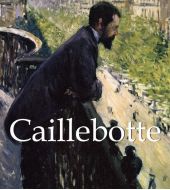 Bei seinen Zeitgenossen vor allem als Mäzen und Sammler bekannt, nimmt Caillebotte heute seinen rechtmäßigen Platz im Pantheon der Künstler ein – als Maler, der in seinen bahnbrechenden Werken in einzigartiger Weise den Realismus mit dem Impressionismus verbindet. Bemerkenswert ist die Verbindung von fotografischen Techniken, von der Perspektive und der akkuraten Abbildung der Realität mit der poetischen Freilichtmalerei des Impressionismus. Diese Monografie eröffnet dem Leser einen neuen Blick auf diesen faszinierenden Künstler, der Kunst und Realität in einer eigenen künstlerischen Sprache verband, während er die außerordentlichen Talente seiner Zeit förderte. ... Далее
Bei seinen Zeitgenossen vor allem als Mäzen und Sammler bekannt, nimmt Caillebotte heute seinen rechtmäßigen Platz im Pantheon der Künstler ein – als Maler, der in seinen bahnbrechenden Werken in einzigartiger Weise den Realismus mit dem Impressionismus verbindet. Bemerkenswert ist die Verbindung von fotografischen Techniken, von der Perspektive und der akkuraten Abbildung der Realität mit der poetischen Freilichtmalerei des Impressionismus. Diese Monografie eröffnet dem Leser einen neuen Blick auf diesen faszinierenden Künstler, der Kunst und Realität in einer eigenen künstlerischen Sprache verband, während er die außerordentlichen Talente seiner Zeit förderte. ... Далее -
23.
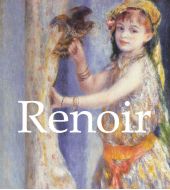 Pierre-Auguste Renoir war Augenzeuge vieler bedeutender Ereignisse. Sein jüngerer Bruder Edmond erzählte: “Seine Kohlezeichnungen an den Mauern brachten die Eltern auf den Gedanken, dass er ein malerisches Talent besitze, und sie schickten ihn in die Lehre zu einem Porzellanmaler. Er hat also Glück gehabt, was nicht so oft vorkommt.” Bald darauf entstand das erste Bild des künftigen Impressionisten. Er bestand 1862 die Aufnahmeprüfungen an der Ecole des Beaux-Arts und nahm sein Studium in der Werkstatt von Charles Gleyre auf. Viel später, als bereits ausgereifter Künstler, erhielt Renoir die Möglichkeit, das Schaffen von Rembrandt direkt in Holland, die Werke von Velázquez, Goya und El Greco in Spanien und die Raphaels in Italien kennen zu lernen. Aber die erste Ausstellung der Impressionisten war für Renoir der erste Schritt zur Behauptung seiner eigenen künstlerischen Sicht. Ab 1873 ließ er sich auf dem Montmartre nieder, wo er bis 1884 lebte. Dort fand er auch seine Familie und lernte in den 1870er Jahren seine treuesten Freunde kennen. Auf der dritten Impressionisten-Ausstellung im Jahr 1877 zeigte Renoir ein ganzes Panorama von Bildern (über 20 Arbeiten). Darunter waren viele Landschaften, die in Paris an der Seine, in der Umgebung der Stadt und im Garten Monets gemalt worden waren, Studien von Frauenköpfen und Blumensträußen, Portraits, aber auch Die Schaukel und Ball im Moulin de la Galette. Durand-Ruel veranstaltete 1883 auf dem Boulevard de la Madeleine in Paris die erste Einzelausstellung Renoirs, auf der 70 Werke gezeigt wurden. Damit begann für Renoir eine Glückssträhne. Seine Bilder wurden in London, Brüssel und auf der Siebten Internationalen Ausstellung bei Georges Petit im Jahre 1886 ausgestellt. In einem Brief schrieb der Maler: “Die Ausstellung von Petit ist eröffnet und soll Erfolg haben. Es ist ja so schwer, über sich selbst zu urteilen. Ich glaube, es ist mir gelungen, einen Schritt auf dem Weg zur Achtung des Publikums zu tun, einen kleinen Schritt. Aber immerhin.” ... Далее
Pierre-Auguste Renoir war Augenzeuge vieler bedeutender Ereignisse. Sein jüngerer Bruder Edmond erzählte: “Seine Kohlezeichnungen an den Mauern brachten die Eltern auf den Gedanken, dass er ein malerisches Talent besitze, und sie schickten ihn in die Lehre zu einem Porzellanmaler. Er hat also Glück gehabt, was nicht so oft vorkommt.” Bald darauf entstand das erste Bild des künftigen Impressionisten. Er bestand 1862 die Aufnahmeprüfungen an der Ecole des Beaux-Arts und nahm sein Studium in der Werkstatt von Charles Gleyre auf. Viel später, als bereits ausgereifter Künstler, erhielt Renoir die Möglichkeit, das Schaffen von Rembrandt direkt in Holland, die Werke von Velázquez, Goya und El Greco in Spanien und die Raphaels in Italien kennen zu lernen. Aber die erste Ausstellung der Impressionisten war für Renoir der erste Schritt zur Behauptung seiner eigenen künstlerischen Sicht. Ab 1873 ließ er sich auf dem Montmartre nieder, wo er bis 1884 lebte. Dort fand er auch seine Familie und lernte in den 1870er Jahren seine treuesten Freunde kennen. Auf der dritten Impressionisten-Ausstellung im Jahr 1877 zeigte Renoir ein ganzes Panorama von Bildern (über 20 Arbeiten). Darunter waren viele Landschaften, die in Paris an der Seine, in der Umgebung der Stadt und im Garten Monets gemalt worden waren, Studien von Frauenköpfen und Blumensträußen, Portraits, aber auch Die Schaukel und Ball im Moulin de la Galette. Durand-Ruel veranstaltete 1883 auf dem Boulevard de la Madeleine in Paris die erste Einzelausstellung Renoirs, auf der 70 Werke gezeigt wurden. Damit begann für Renoir eine Glückssträhne. Seine Bilder wurden in London, Brüssel und auf der Siebten Internationalen Ausstellung bei Georges Petit im Jahre 1886 ausgestellt. In einem Brief schrieb der Maler: “Die Ausstellung von Petit ist eröffnet und soll Erfolg haben. Es ist ja so schwer, über sich selbst zu urteilen. Ich glaube, es ist mir gelungen, einen Schritt auf dem Weg zur Achtung des Publikums zu tun, einen kleinen Schritt. Aber immerhin.” ... Далее -
24.
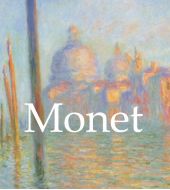 Als Impressionist zu gelten war für Monet eine Auszeichnung. Er war es aus tiefer Überzeugung und blieb es bis an das Ende seines langen Lebens. Er begnügte sich mit einem einzigen Genre, dem der Landschaftsmalerei. Hier aber brachte er es zu einer Vollkommenheit, an die keiner seiner Zeitgenossen heranreichte. Im Sommer jenes Jahres kam es zu gemeinsamen Malübungen mit Boudin (1824 bis 1898) am Meeresstrand. “Mit der Zeit gingen mir die Augen auf und ich begann, die Natur zu verstehen; zugleich lernte ich, sie zu lieben” – so erinnert sich Monet später an diese gemeinsamen Exerzitien. Er besucht nicht die Ecole des Beaux-Arts, sondern zieht die von Monsieur Suisse, einem ehemaligen Modell Davids, gegründete freie “Académie Suisse” vor. Hier war es möglich, für einen geringen Beitrag lebende Modelle zu malen und zu zeichnen. Die Farbskala der Bilder, die Monet 1871 und 1872 malte, ist nicht sehr breit; sie erinnert an die der Barbizon-Schule und an die Seestücke Boudins. Die Grundtöne sind braungelb und blaugrau. Im Jahr 1877 wurde die dritte Ausstellung der Impressionisten eröffnet, bei der Monet zum ersten Mal eine Bilderserie zeigte. Mit seinem Motiv, dem Bahnhof Saint-Lazare, setzte Monet nicht nur Manets Die Eisenbahn und seine eigenen Landschaftsbilder aus Argenteuil fort, er schloss sich darüber hinaus der bei den Künstlern wachsenden Tendenz an, sich von diesem Transportmittel faszinieren zu lassen. In seinem Wohnort Giverny wurden die Bilderserien Monets wichtigste Arbeitsmethode. In den 1890er Jahren entdeckte Monet London. Zwar begann er die Bilder allesamt in London, beendete viele von ihnen aber in Giverny. Für den Schriftsteller Octave Mirbeau (1848 bis 1917) war Monet ein Mensch, der Wunder vollbrachte: Mit Hilfe der Farben habe er auf der Leinwand das Sonnenlicht, etwas nahezu Unfassbares, nachgebildet und es um eine Unzahl prismatischer Facetten bereichert. Tatsächlich hat Monet das Potenzial der Farbe mit nahezu wissenschaftlicher Strenge bis zu seinen äußersten Konsequenzen getrieben; kein anderer Impressionist ist darin so weit gegangen wie er, und es ist wenig wahrscheinlich, dass man in dieser Richtung hätte noch weitergehen können. ... Далее
Als Impressionist zu gelten war für Monet eine Auszeichnung. Er war es aus tiefer Überzeugung und blieb es bis an das Ende seines langen Lebens. Er begnügte sich mit einem einzigen Genre, dem der Landschaftsmalerei. Hier aber brachte er es zu einer Vollkommenheit, an die keiner seiner Zeitgenossen heranreichte. Im Sommer jenes Jahres kam es zu gemeinsamen Malübungen mit Boudin (1824 bis 1898) am Meeresstrand. “Mit der Zeit gingen mir die Augen auf und ich begann, die Natur zu verstehen; zugleich lernte ich, sie zu lieben” – so erinnert sich Monet später an diese gemeinsamen Exerzitien. Er besucht nicht die Ecole des Beaux-Arts, sondern zieht die von Monsieur Suisse, einem ehemaligen Modell Davids, gegründete freie “Académie Suisse” vor. Hier war es möglich, für einen geringen Beitrag lebende Modelle zu malen und zu zeichnen. Die Farbskala der Bilder, die Monet 1871 und 1872 malte, ist nicht sehr breit; sie erinnert an die der Barbizon-Schule und an die Seestücke Boudins. Die Grundtöne sind braungelb und blaugrau. Im Jahr 1877 wurde die dritte Ausstellung der Impressionisten eröffnet, bei der Monet zum ersten Mal eine Bilderserie zeigte. Mit seinem Motiv, dem Bahnhof Saint-Lazare, setzte Monet nicht nur Manets Die Eisenbahn und seine eigenen Landschaftsbilder aus Argenteuil fort, er schloss sich darüber hinaus der bei den Künstlern wachsenden Tendenz an, sich von diesem Transportmittel faszinieren zu lassen. In seinem Wohnort Giverny wurden die Bilderserien Monets wichtigste Arbeitsmethode. In den 1890er Jahren entdeckte Monet London. Zwar begann er die Bilder allesamt in London, beendete viele von ihnen aber in Giverny. Für den Schriftsteller Octave Mirbeau (1848 bis 1917) war Monet ein Mensch, der Wunder vollbrachte: Mit Hilfe der Farben habe er auf der Leinwand das Sonnenlicht, etwas nahezu Unfassbares, nachgebildet und es um eine Unzahl prismatischer Facetten bereichert. Tatsächlich hat Monet das Potenzial der Farbe mit nahezu wissenschaftlicher Strenge bis zu seinen äußersten Konsequenzen getrieben; kein anderer Impressionist ist darin so weit gegangen wie er, und es ist wenig wahrscheinlich, dass man in dieser Richtung hätte noch weitergehen können. ... Далее -
25.
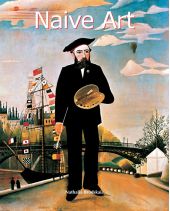 Naive art first became popular at the end of the 19th century. Until that time, this form of expression, created by untrained artists and characterised by spontaneity and simplicity, enjoyed little recognition from professional artists and art critics. Influenced by primitive arts, naive painting is distinguished by the fluidity of its lines, vivacity, and joyful colours, as well as by its rather clean-cut, simple shapes. Naive art counts among it artists: Henri Rousseau, Séraphine de Senlis, André Bauchant, and Camille Bombois. This movement has also found adherents abroad, including such prominent artists as Joan Miró, Guido Vedovato, Niko Pirosmani, and Ivan Generalic. ... Далее
Naive art first became popular at the end of the 19th century. Until that time, this form of expression, created by untrained artists and characterised by spontaneity and simplicity, enjoyed little recognition from professional artists and art critics. Influenced by primitive arts, naive painting is distinguished by the fluidity of its lines, vivacity, and joyful colours, as well as by its rather clean-cut, simple shapes. Naive art counts among it artists: Henri Rousseau, Séraphine de Senlis, André Bauchant, and Camille Bombois. This movement has also found adherents abroad, including such prominent artists as Joan Miró, Guido Vedovato, Niko Pirosmani, and Ivan Generalic. ... Далее -
26.
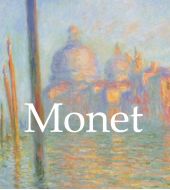 For Claude Monet the designation ‘impressionist’ always remained a source of pride. In spite of all the things critics have written about his work, Monet continued to be a true impressionist to the end of his very long life. He was so by deep conviction, and for his Impressionism he may have sacrificed many other opportunities that his enormous talent held out to him. Monet did not paint classical compositions with figures, and he did not become a portraitist, although his professional training included those skills. He chose a single genre for himself, landscape painting, and in that he achieved a degree of perfection none of his contemporaries managed to attain. Yet the little boy began by drawing caricatures. Boudin advised Monet to stop doing caricatures and to take up landscapes instead. The sea, the sky, animals, people, and trees are beautiful in the exact state in which nature created them – surrounded by air and light. Indeed, it was Boudin who passed on to Monet his conviction of the importance of working in the open air, which Monet would in turn transmit to his impressionist friends. Monet did not want to enrol at the Ecole des Beaux-Arts. He chose to attend a private school, L’Académie Suisse, established by an ex-model on the Quai d’Orfèvres near the Pont Saint-Michel. One could draw and paint from a live model there for a modest fee. This was where Monet met the future impressionist Camille Pissarro. Later in Gleyre’s studio, Monet met Auguste Renoir Alfred Sisley, and Frédéric Bazille. Monet considered it very important that Boudin be introduced to his new friends. He also told his friends of another painter he had found in Normandy. This was the remarkable Dutchman Jongkind. His landscapes were saturated with colour, and their sincerity, at times even their naïveté, was combined with subtle observation of the Normandy shore’s variable nature. At this time Monet’s landscapes were not yet characterized by great richness of colour. Rather, they recalled the tonalities of paintings by the Barbizon artists, and Boudin’s seascapes. He composed a range of colour based on yellow-brown or blue-grey. At the Third Impressionist Exhibition in 1877 Monet presented a series of paintings for the first time: seven views of the Saint-Lazare train station. He selected them from among twelve he had painted at the station. This motif in Monet’s work is in line not only with Manet’s Chemin de fer (The Railway) and with his own landscapes featuring trains and stations at Argenteuil, but also with a trend that surfaced after the railways first began to appear. In 1883, Monet had bought a house in the village of Giverny, near the little town of Vernon. At Giverny, series painting became one of his chief working procedures. Meadows became his permanent workplace. When a journalist, who had come from Vétheuil to interview Monet, asked him where his studio was, the painter answered, “My studio! I’ve never had a studio, and I can’t see why one would lock oneself up in a room. To draw, yes – to paint, no”. Then, broadly gesturing towards the Seine, the hills, and the silhouette of the little town, he declared, “There’s my real studio.”Monet began to go to London in the last decade of the nineteenth century. He began all his London paintings working directly from nature, but completed many of them afterwards, at Giverny. The series formed an indivisible whole, and the painter had to work on all his canvases at one time. A friend of Monet’s, the writer Octave Mirbeau, wrote that he had accomplished a miracle. With the help of colours he had succeeded in recreating on the canvas something almost impossible to capture: he was reproducing sunlight, enriching it with an infinite number of reflections. Alone among the impressionists, Claude Monet took an almost scientific study of the possibilities of colour to its limits; it is unlikely that one could have gone any further in that direction. ... Далее
For Claude Monet the designation ‘impressionist’ always remained a source of pride. In spite of all the things critics have written about his work, Monet continued to be a true impressionist to the end of his very long life. He was so by deep conviction, and for his Impressionism he may have sacrificed many other opportunities that his enormous talent held out to him. Monet did not paint classical compositions with figures, and he did not become a portraitist, although his professional training included those skills. He chose a single genre for himself, landscape painting, and in that he achieved a degree of perfection none of his contemporaries managed to attain. Yet the little boy began by drawing caricatures. Boudin advised Monet to stop doing caricatures and to take up landscapes instead. The sea, the sky, animals, people, and trees are beautiful in the exact state in which nature created them – surrounded by air and light. Indeed, it was Boudin who passed on to Monet his conviction of the importance of working in the open air, which Monet would in turn transmit to his impressionist friends. Monet did not want to enrol at the Ecole des Beaux-Arts. He chose to attend a private school, L’Académie Suisse, established by an ex-model on the Quai d’Orfèvres near the Pont Saint-Michel. One could draw and paint from a live model there for a modest fee. This was where Monet met the future impressionist Camille Pissarro. Later in Gleyre’s studio, Monet met Auguste Renoir Alfred Sisley, and Frédéric Bazille. Monet considered it very important that Boudin be introduced to his new friends. He also told his friends of another painter he had found in Normandy. This was the remarkable Dutchman Jongkind. His landscapes were saturated with colour, and their sincerity, at times even their naïveté, was combined with subtle observation of the Normandy shore’s variable nature. At this time Monet’s landscapes were not yet characterized by great richness of colour. Rather, they recalled the tonalities of paintings by the Barbizon artists, and Boudin’s seascapes. He composed a range of colour based on yellow-brown or blue-grey. At the Third Impressionist Exhibition in 1877 Monet presented a series of paintings for the first time: seven views of the Saint-Lazare train station. He selected them from among twelve he had painted at the station. This motif in Monet’s work is in line not only with Manet’s Chemin de fer (The Railway) and with his own landscapes featuring trains and stations at Argenteuil, but also with a trend that surfaced after the railways first began to appear. In 1883, Monet had bought a house in the village of Giverny, near the little town of Vernon. At Giverny, series painting became one of his chief working procedures. Meadows became his permanent workplace. When a journalist, who had come from Vétheuil to interview Monet, asked him where his studio was, the painter answered, “My studio! I’ve never had a studio, and I can’t see why one would lock oneself up in a room. To draw, yes – to paint, no”. Then, broadly gesturing towards the Seine, the hills, and the silhouette of the little town, he declared, “There’s my real studio.”Monet began to go to London in the last decade of the nineteenth century. He began all his London paintings working directly from nature, but completed many of them afterwards, at Giverny. The series formed an indivisible whole, and the painter had to work on all his canvases at one time. A friend of Monet’s, the writer Octave Mirbeau, wrote that he had accomplished a miracle. With the help of colours he had succeeded in recreating on the canvas something almost impossible to capture: he was reproducing sunlight, enriching it with an infinite number of reflections. Alone among the impressionists, Claude Monet took an almost scientific study of the possibilities of colour to its limits; it is unlikely that one could have gone any further in that direction. ... Далее -
27.
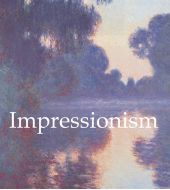 Impressionism has always been one of the public’s favourite styles of art and Impressionist works continue to enchant beholders with their amazing play of colours and forms. This book offers a well-chosen selection of the most impressive works of artists such as Degas, Monet, Pissarro, Renoir and Sisley. Mega Square Impressionism pays tribute to the subject’s popularity. ... Далее
Impressionism has always been one of the public’s favourite styles of art and Impressionist works continue to enchant beholders with their amazing play of colours and forms. This book offers a well-chosen selection of the most impressive works of artists such as Degas, Monet, Pissarro, Renoir and Sisley. Mega Square Impressionism pays tribute to the subject’s popularity. ... Далее -
28.
 Since his death 200 years ago, Cézanne has become the most famous painter of the nineteenth century. He was born in Aix-en-Provence in 1839 and the happiest period of his life was his early youth in Provence, in company with Emile Zolá, another Italian. Following Zolá’s example, Cézanne went to Paris in his twenty-first year. During the Franco-Prussian war he deserted the military, dividing his time between open-air painting and the studio. He said to Vollard, an art dealer, “I’m only a painter. Parisian wit gives me a pain. Painting nudes on the banks of the Arc [a river near Aix] is all I could ask for.” Encouraged by Renoir, one of the first to appreciate him, he exhibited with the impressionists in 1874 and in 1877. He was received with derision, which deeply hurt him. Cézanne’s ambition, in his own words, was “to make out of Impressionism something as solid and durable as the paintings of the museums.” His aim was to achieve the monumental in a modern language of glowing, vibrating tones. Cézanne wanted to retain the natural colour of an object and to harmonise it with the various influences of light and shade trying to destroy it; to work out a scale of tones expressing the mass and character of the form. Cézanne loved to paint fruit because it afforded him obedient models and he was a slow worker. He did not intend to simply copy an apple. He kept the dominant colour and the character of the fruit, but heightened the emotional appeal of the form by a scheme of rich and concordant tones. In his paintings of still-life he is a master. His fruit and vegetable compositions are truly dramatic; they have the weight, the nobility, the style of immortal forms. No other painter ever brought to a red apple a conviction so heated, sympathy so genuinely spiritual, or an observation so protracted. No other painter of equal ability ever reserved for still-life his strongest impulses. Cézanne restored to painting the pre-eminence of knowledge, the most essential quality to all creative effort. The death of his father in 1886 made him a rich man, but he made no change in his abstemious mode of living. Soon afterwards, Cézanne retired permanently to his estate in Provence. He was probably the loneliest of painters of his day. At times a curious melancholy attacked him, a black hopelessness. He grew more savage and exacting, destroying canvases, throwing them out of his studio into the trees, abandoning them in the fields, and giving them to his son to cut into puzzles, or to the people of Aix. At the beginning of the century, when Vollard arrived in Provence with intentions of buying on speculation all the Cézannes he could get hold of, the peasantry, hearing that a fool from Paris was actually handing out money for old linen, produced from barns a considerable number of still-lifes and landscapes. The old master of Aix was overcome with joy, but recognition came too late. In 1906 he died from a fever contracted while painting in a downpour of rain. ... Далее
Since his death 200 years ago, Cézanne has become the most famous painter of the nineteenth century. He was born in Aix-en-Provence in 1839 and the happiest period of his life was his early youth in Provence, in company with Emile Zolá, another Italian. Following Zolá’s example, Cézanne went to Paris in his twenty-first year. During the Franco-Prussian war he deserted the military, dividing his time between open-air painting and the studio. He said to Vollard, an art dealer, “I’m only a painter. Parisian wit gives me a pain. Painting nudes on the banks of the Arc [a river near Aix] is all I could ask for.” Encouraged by Renoir, one of the first to appreciate him, he exhibited with the impressionists in 1874 and in 1877. He was received with derision, which deeply hurt him. Cézanne’s ambition, in his own words, was “to make out of Impressionism something as solid and durable as the paintings of the museums.” His aim was to achieve the monumental in a modern language of glowing, vibrating tones. Cézanne wanted to retain the natural colour of an object and to harmonise it with the various influences of light and shade trying to destroy it; to work out a scale of tones expressing the mass and character of the form. Cézanne loved to paint fruit because it afforded him obedient models and he was a slow worker. He did not intend to simply copy an apple. He kept the dominant colour and the character of the fruit, but heightened the emotional appeal of the form by a scheme of rich and concordant tones. In his paintings of still-life he is a master. His fruit and vegetable compositions are truly dramatic; they have the weight, the nobility, the style of immortal forms. No other painter ever brought to a red apple a conviction so heated, sympathy so genuinely spiritual, or an observation so protracted. No other painter of equal ability ever reserved for still-life his strongest impulses. Cézanne restored to painting the pre-eminence of knowledge, the most essential quality to all creative effort. The death of his father in 1886 made him a rich man, but he made no change in his abstemious mode of living. Soon afterwards, Cézanne retired permanently to his estate in Provence. He was probably the loneliest of painters of his day. At times a curious melancholy attacked him, a black hopelessness. He grew more savage and exacting, destroying canvases, throwing them out of his studio into the trees, abandoning them in the fields, and giving them to his son to cut into puzzles, or to the people of Aix. At the beginning of the century, when Vollard arrived in Provence with intentions of buying on speculation all the Cézannes he could get hold of, the peasantry, hearing that a fool from Paris was actually handing out money for old linen, produced from barns a considerable number of still-lifes and landscapes. The old master of Aix was overcome with joy, but recognition came too late. In 1906 he died from a fever contracted while painting in a downpour of rain. ... Далее -
29.
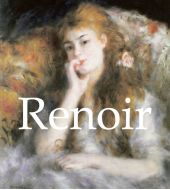 Pierre-Auguste Renoir was born in Limoges on 25 February 1841. In 1854, the boy’s parents took him from school and found a place for him in the Lévy brothers’ workshop, where he was to learn to paint porcelain. Renoir’s younger brother Edmond had this to say this about the move: “From what he drew in charcoal on the walls, they concluded that he had the ability for an artist’s profession. That was how our parents came to put him to learn the trade of porcelain painter.” One of the Lévys’ workers, Emile Laporte, painted in oils in his spare time. He suggested Renoir makes use of his canvases and paints. This offer resulted in the appearance of the first painting by the future impressionist. In 1862 Renoir passed the examinations and entered the Ecole des Beaux-Arts and, simultaneously, one of the independent studios, where instruction was given by Charles Gleyre, a professor at the Ecole des Beaux-Arts. The second, perhaps even the first, great event of this period in Renoir’s life was his meeting, in Gleyre’s studio, with those who were to become his best friends for the rest of his days and who shared his ideas about art. Much later, when he was already a mature artist, Renoir had the opportunity to see works by Rembrandt in Holland, Velázquez, Goya and El Greco in Spain, and Raphael in Italy. However, Renoir lived and breathed ideas of a new kind of art. He always found his inspirations in the Louvre. “For me, in the Gleyre era, the Louvre was Delacroix,” he confessed to Jean. For Renoir, the First Impressionist Exhibition was the moment his vision of art and the artist was affirmed. This period in Renoir’s life was marked by one further significant event. In 1873 he moved to Montmartre, to the house at 35 Rue Saint-Georges, where he lived until 1884. Renoir remained loyal to Montmartre for the rest of his life. Here he found his “plein-air” subjects, his models and even his family. It was in the 1870s that Renoir acquired the friends who would stay with him for the remainder of his days. One of them was the art-dealer Paul Durand-Ruel, who began to buy his paintings in 1872. In summer, Renoir continued to paint a great deal outdoors together with Monet. He would travel out to Argenteuil, where Monet rented a house for his family. Edouard Manet sometimes worked with them too. In 1877, at the Third Impressionist Exhibition, Renoir presented a panorama of over twenty paintings. They included landscapes created in Paris, on the Seine, outside the city and in Claude Monet’s garden; studies of women’s heads and bouquets of flowers; portraits of Sisley, the actress Jeanne Samary, the writer Alphonse Daudet and the politician Spuller; and also The Swing and The Ball at the Moulin de la Galette. Finally, in the 1880s Renoir hit a “winning streak”. He was commissioned by rich financiers, the owner of the Grands Magasins du Louvre and Senator Goujon. His paintings were exhibited in London and Brussels, as well as at the Seventh International Exhibition held at Georges Petit’s in Paris in 1886. In a letter to Durand-Ruel, then in New York, Renoir wrote: “The Petit exhibition has opened and is not doing badly, so they say. After all, it’s so hard to judge about yourself. I think I have managed to take a step forward towards public respect. A small step, but even that is something.” ... Далее
Pierre-Auguste Renoir was born in Limoges on 25 February 1841. In 1854, the boy’s parents took him from school and found a place for him in the Lévy brothers’ workshop, where he was to learn to paint porcelain. Renoir’s younger brother Edmond had this to say this about the move: “From what he drew in charcoal on the walls, they concluded that he had the ability for an artist’s profession. That was how our parents came to put him to learn the trade of porcelain painter.” One of the Lévys’ workers, Emile Laporte, painted in oils in his spare time. He suggested Renoir makes use of his canvases and paints. This offer resulted in the appearance of the first painting by the future impressionist. In 1862 Renoir passed the examinations and entered the Ecole des Beaux-Arts and, simultaneously, one of the independent studios, where instruction was given by Charles Gleyre, a professor at the Ecole des Beaux-Arts. The second, perhaps even the first, great event of this period in Renoir’s life was his meeting, in Gleyre’s studio, with those who were to become his best friends for the rest of his days and who shared his ideas about art. Much later, when he was already a mature artist, Renoir had the opportunity to see works by Rembrandt in Holland, Velázquez, Goya and El Greco in Spain, and Raphael in Italy. However, Renoir lived and breathed ideas of a new kind of art. He always found his inspirations in the Louvre. “For me, in the Gleyre era, the Louvre was Delacroix,” he confessed to Jean. For Renoir, the First Impressionist Exhibition was the moment his vision of art and the artist was affirmed. This period in Renoir’s life was marked by one further significant event. In 1873 he moved to Montmartre, to the house at 35 Rue Saint-Georges, where he lived until 1884. Renoir remained loyal to Montmartre for the rest of his life. Here he found his “plein-air” subjects, his models and even his family. It was in the 1870s that Renoir acquired the friends who would stay with him for the remainder of his days. One of them was the art-dealer Paul Durand-Ruel, who began to buy his paintings in 1872. In summer, Renoir continued to paint a great deal outdoors together with Monet. He would travel out to Argenteuil, where Monet rented a house for his family. Edouard Manet sometimes worked with them too. In 1877, at the Third Impressionist Exhibition, Renoir presented a panorama of over twenty paintings. They included landscapes created in Paris, on the Seine, outside the city and in Claude Monet’s garden; studies of women’s heads and bouquets of flowers; portraits of Sisley, the actress Jeanne Samary, the writer Alphonse Daudet and the politician Spuller; and also The Swing and The Ball at the Moulin de la Galette. Finally, in the 1880s Renoir hit a “winning streak”. He was commissioned by rich financiers, the owner of the Grands Magasins du Louvre and Senator Goujon. His paintings were exhibited in London and Brussels, as well as at the Seventh International Exhibition held at Georges Petit’s in Paris in 1886. In a letter to Durand-Ruel, then in New York, Renoir wrote: “The Petit exhibition has opened and is not doing badly, so they say. After all, it’s so hard to judge about yourself. I think I have managed to take a step forward towards public respect. A small step, but even that is something.” ... Далее -
30.
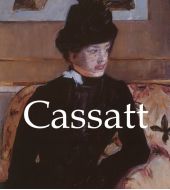 Mary was born in Pittsburgh. Her father was a banker of liberal educational ideas and the entire family appears to have been sympathetic to French culture. Mary was no more than five or six years old when she first saw Paris, and she was still in her teens when she decided to become a painter. She went to Italy, on to Antwerp, then to Rome, andfinally returned to Paris where in 1874, she permanently settled. In 1872, Cassatt sent her first work to the Salon, others followed in the succeeding years until 1875, when a portrait of her sister was rejected. She divined that the jury had not been satisfied with the background, so she re-painted it several times until, in the next Salon, the same portrait was accepted. At this moment Degas asked her to exhibit with him and his friends, the Impressionist Group, then rising into view, and she accepted with joy. She admired Manet, Courbet and Degas, and hated conventional art. Cassatt’s biographer stressed the intellectuality and sentiment apparent in her work, as well as the emotion and distinction with which she has painted her favourite models: babies and their mothers. He then speaks of her predominant interest in draughtsmanship and her gift for linear pattern, a gift greatly strengthened by her study of Japanese art and her emulation of its style in the colour prints she made. While her style may partake of the style of others, her draughtsmanship, her composition, her light, and her colour are, indeed, her own. There are qualities of tenderness in her work which could have been put there, perhaps, only by a woman. The qualities which make her work of lasting value are those put there by an outstanding painter. ... Далее
Mary was born in Pittsburgh. Her father was a banker of liberal educational ideas and the entire family appears to have been sympathetic to French culture. Mary was no more than five or six years old when she first saw Paris, and she was still in her teens when she decided to become a painter. She went to Italy, on to Antwerp, then to Rome, andfinally returned to Paris where in 1874, she permanently settled. In 1872, Cassatt sent her first work to the Salon, others followed in the succeeding years until 1875, when a portrait of her sister was rejected. She divined that the jury had not been satisfied with the background, so she re-painted it several times until, in the next Salon, the same portrait was accepted. At this moment Degas asked her to exhibit with him and his friends, the Impressionist Group, then rising into view, and she accepted with joy. She admired Manet, Courbet and Degas, and hated conventional art. Cassatt’s biographer stressed the intellectuality and sentiment apparent in her work, as well as the emotion and distinction with which she has painted her favourite models: babies and their mothers. He then speaks of her predominant interest in draughtsmanship and her gift for linear pattern, a gift greatly strengthened by her study of Japanese art and her emulation of its style in the colour prints she made. While her style may partake of the style of others, her draughtsmanship, her composition, her light, and her colour are, indeed, her own. There are qualities of tenderness in her work which could have been put there, perhaps, only by a woman. The qualities which make her work of lasting value are those put there by an outstanding painter. ... Далее -
31.
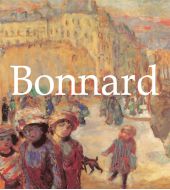 Pierre Bonnard was the leader of a group of Post-Impressionist painters who called themselves the Nabis, from the Hebrew word meaning “prophet”. Bonnard, Vuillard, Roussel and Denis, the most distinguished of the Nabis, revolutionised decorative painting during one of the richest periods in the history of French painting. Bonnard’s works are striking for their strong colours and candidness. ... Далее
Pierre Bonnard was the leader of a group of Post-Impressionist painters who called themselves the Nabis, from the Hebrew word meaning “prophet”. Bonnard, Vuillard, Roussel and Denis, the most distinguished of the Nabis, revolutionised decorative painting during one of the richest periods in the history of French painting. Bonnard’s works are striking for their strong colours and candidness. ... Далее -
32.
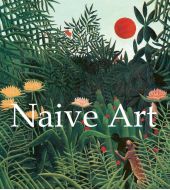 Until the end of the 19th century Naïve Art, created by untrained artists and characterised by spontaneity and simplicity, enjoyed little recognition from professional artists and art critics. Naïve painting is often distinguished by its clarity of line, vivacity and joyful colours, as well as by its rather clean-cut, simple shapes, as represented by French artists such as Henri Rousseau, Séraphine de Senlis, André Bauchant and Camille Bombois. However, this movement has also found adherents elsewhere, including Joan Miró (who was influenced by some of its qualities), Guido Vedovato, Niko Pirosmani, and Ivan Generalic. ... Далее
Until the end of the 19th century Naïve Art, created by untrained artists and characterised by spontaneity and simplicity, enjoyed little recognition from professional artists and art critics. Naïve painting is often distinguished by its clarity of line, vivacity and joyful colours, as well as by its rather clean-cut, simple shapes, as represented by French artists such as Henri Rousseau, Séraphine de Senlis, André Bauchant and Camille Bombois. However, this movement has also found adherents elsewhere, including Joan Miró (who was influenced by some of its qualities), Guido Vedovato, Niko Pirosmani, and Ivan Generalic. ... Далее -
33.
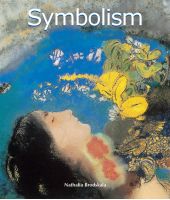 Symbolism appeared in France and Europe between the 1880s and the beginning of the 20th century. The Symbolists, fascinated with ancient mythology, attempted to escape the reign of rational thought imposed by science. They wished to transcend the world of the visible and the rational in order to attain the world of pure thought, constantly flirting with the limits of the unconscious. The French Gustave Moreau, Odilon Redon, the Belgians Fernand Khnopff and Félicien Rops, the English Edward Burne-Jones and Dante Gabriel Rossetti, and the Dutch Jan Toorop are the most representative artists of the movement. ... Далее
Symbolism appeared in France and Europe between the 1880s and the beginning of the 20th century. The Symbolists, fascinated with ancient mythology, attempted to escape the reign of rational thought imposed by science. They wished to transcend the world of the visible and the rational in order to attain the world of pure thought, constantly flirting with the limits of the unconscious. The French Gustave Moreau, Odilon Redon, the Belgians Fernand Khnopff and Félicien Rops, the English Edward Burne-Jones and Dante Gabriel Rossetti, and the Dutch Jan Toorop are the most representative artists of the movement. ... Далее -
34.
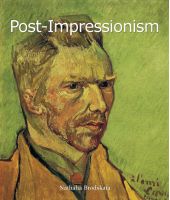 Whilst Impressionism marked the first steps toward modern painting by revolutionising an artistic medium stifled by academic conventions, Post-Impressionism, even more revolutionary, completely liberated colour and opened it to new, unknown horizons. Anchored in his epoch, relying on the new chromatic studies of Michel Eugène Chevreul, Georges Seurat transcribed the chemist’s theory of colours into tiny points that created an entire image. With his heavy strokes, Van Gogh illustrated the midday sun, whilst Cézanne renounced perspective. Rich in its variety and in the singularity of its artists, Post-Impressionism was a passage taken by all the well-known figures of 20th century painting – it is here presented, for the great pleasure of the reader, by Nathalia Brodskaïa. ... Далее
Whilst Impressionism marked the first steps toward modern painting by revolutionising an artistic medium stifled by academic conventions, Post-Impressionism, even more revolutionary, completely liberated colour and opened it to new, unknown horizons. Anchored in his epoch, relying on the new chromatic studies of Michel Eugène Chevreul, Georges Seurat transcribed the chemist’s theory of colours into tiny points that created an entire image. With his heavy strokes, Van Gogh illustrated the midday sun, whilst Cézanne renounced perspective. Rich in its variety and in the singularity of its artists, Post-Impressionism was a passage taken by all the well-known figures of 20th century painting – it is here presented, for the great pleasure of the reader, by Nathalia Brodskaïa. ... Далее -
35.
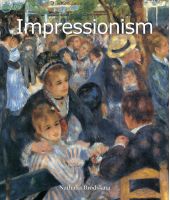 “I paint what I see and not what it pleases others to see.” What other words than these of Édouard Manet, seemingly so different from the sentiments of Monet or Renoir, could best define the Impressionist movement? Without a doubt, this singularity was explained when, shortly before his death, Claude Monet wrote: “I remain sorry to have been the cause of the name given to a group the majority of which did not have anything Impressionist.” In this work, Nathalia Brodskaïa examines the contradictions of this late 19th-century movement through the paradox of a group who, while forming a coherent ensemble, favoured the affirmation of artistic individuals. Between academic art and the birth of modern, non-figurative painting, the road to recognition was long. Analysing the founding elements of the movement, the author follows, through the works of each of the artists, how the demand for individuality gave rise to modern painting. ... Далее
“I paint what I see and not what it pleases others to see.” What other words than these of Édouard Manet, seemingly so different from the sentiments of Monet or Renoir, could best define the Impressionist movement? Without a doubt, this singularity was explained when, shortly before his death, Claude Monet wrote: “I remain sorry to have been the cause of the name given to a group the majority of which did not have anything Impressionist.” In this work, Nathalia Brodskaïa examines the contradictions of this late 19th-century movement through the paradox of a group who, while forming a coherent ensemble, favoured the affirmation of artistic individuals. Between academic art and the birth of modern, non-figurative painting, the road to recognition was long. Analysing the founding elements of the movement, the author follows, through the works of each of the artists, how the demand for individuality gave rise to modern painting. ... Далее -
36.
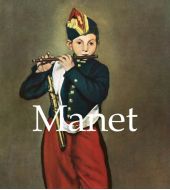 Manet es uno de los artistas más famosos de la segunda mitad del siglo XIX, ligado por lo general a los impresionistas, aunque en realidad no era uno de ellos. Tuvo gran influencia en la pintura francesa, en parte por la elección de sus temas, que sacaba de la vida cotidiana, pero también por el uso de los colores puros y por su técnica rápida y libre. En su propia obra se materializó la transición entre el realismo de Courbet y los impresionistas. Nació en la alta burguesía, decidió convertirse en pintor después de no haber podido ingresar en la Academia Naval. Estudió con Thomas Couture, un pintor de la Academia, pero fue gracias a los numerosos viajes que realizó por Europa desde 1852 que comenzó a establecer lo que se convertiría en su propio estilo. Sus primeras pinturas fueron sobre todo retratos y escenas de género, inspiradas por su amor por los maestros españoles como Velázquez y Goya. En 1863 presentó su obra maestra Desayuno en la hierba en el Salon des Refusés. Su obra comenzó una lucha entre los defensores del arte académico y los jóvenes artistas “refusés” (rechazados). Manet se convirtió en líder de esta nueva generación de artistas. Desde 1864, el Salón oficial aceptó sus pinturas, que todavía causaban fuertes protestas por obras como Olimpia en 1865. En 1866, el escritor Zolá publicó un artículo en el que defendía la obra de Manet. Por aquel entonces, Manet era amigo de todos los futuros maestros del impresionismo: Edgar Degas, Claude Monet, Auguste Renoir, Alfred Sisley, Camille Pissarro y Paul Cézanne; influyó en el trabajo de todos, aunque no se le puede considerar estrictamente como uno de ellos. De hecho, en 1874 se negó a presentar sus pinturas en la primera exhibición impresionista. Su última aparición en el Salón oficial fue en 1882, con La barra del Folies-Bergère, una de sus pinturas más famosas. Aquejado de gangrena en 1883, pintó naturalezas muertas con flores hasta que estuvo demasiado débil para trabajar. Murió dejando un legado de gran cantidad de dibujos y pinturas. ... Далее
Manet es uno de los artistas más famosos de la segunda mitad del siglo XIX, ligado por lo general a los impresionistas, aunque en realidad no era uno de ellos. Tuvo gran influencia en la pintura francesa, en parte por la elección de sus temas, que sacaba de la vida cotidiana, pero también por el uso de los colores puros y por su técnica rápida y libre. En su propia obra se materializó la transición entre el realismo de Courbet y los impresionistas. Nació en la alta burguesía, decidió convertirse en pintor después de no haber podido ingresar en la Academia Naval. Estudió con Thomas Couture, un pintor de la Academia, pero fue gracias a los numerosos viajes que realizó por Europa desde 1852 que comenzó a establecer lo que se convertiría en su propio estilo. Sus primeras pinturas fueron sobre todo retratos y escenas de género, inspiradas por su amor por los maestros españoles como Velázquez y Goya. En 1863 presentó su obra maestra Desayuno en la hierba en el Salon des Refusés. Su obra comenzó una lucha entre los defensores del arte académico y los jóvenes artistas “refusés” (rechazados). Manet se convirtió en líder de esta nueva generación de artistas. Desde 1864, el Salón oficial aceptó sus pinturas, que todavía causaban fuertes protestas por obras como Olimpia en 1865. En 1866, el escritor Zolá publicó un artículo en el que defendía la obra de Manet. Por aquel entonces, Manet era amigo de todos los futuros maestros del impresionismo: Edgar Degas, Claude Monet, Auguste Renoir, Alfred Sisley, Camille Pissarro y Paul Cézanne; influyó en el trabajo de todos, aunque no se le puede considerar estrictamente como uno de ellos. De hecho, en 1874 se negó a presentar sus pinturas en la primera exhibición impresionista. Su última aparición en el Salón oficial fue en 1882, con La barra del Folies-Bergère, una de sus pinturas más famosas. Aquejado de gangrena en 1883, pintó naturalezas muertas con flores hasta que estuvo demasiado débil para trabajar. Murió dejando un legado de gran cantidad de dibujos y pinturas. ... Далее -
37.
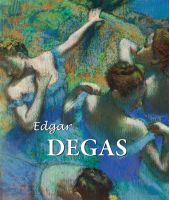 Degas was closest to Renoir in the impressionist’s circle, for both favoured the animated Parisian life of their day as a motif in their paintings. Degas did not attend Gleyre’s studio; most likely he first met the future impressionists at the Café Guerbois. He started his apprenticeship in 1853 at the studio of Louis-Ernest Barrias and, beginning in 1854, studied under Louis Lamothe, who revered Ingres above all others, and transmitted his adoration for this master to Edgar Degas. Starting in 1854 Degas travelled frequently to Italy: first to Naples, where he made the acquaintance of his numerous cousins, and then to Rome and Florence, where he copied tirelessly from the Old Masters. His drawings and sketches already revealed very clear preferences: Raphael, Leonardo da Vinci, Michelangelo, and Mantegna, but also Benozzo Gozzoli, Ghirlandaio, Titian, Fra Angelico, Uccello, and Botticelli. During the 1860s and 1870s he became a painter of racecourses, horses and jockeys. His fabulous painter’s memory retained the particularities of movement of horses wherever he saw them. After his first rather complex compositions depicting racecourses, Degas learned the art of translating the nobility and elegance of horses, their nervous movements, and the formal beauty of their musculature. Around the middle of the 1860s Degas made yet another discovery. In 1866 he painted his first composition with ballet as a subject, Mademoiselle Fiocre dans le ballet de la Source (Mademoiselle Fiocre in the Ballet ‘The Spring’) (New York, Brooklyn Museum). Degas had always been a devotee of the theatre, but from now on it would become more and more the focus of his art. Degas’ first painting devoted solely to the ballet was Le Foyer de la danse à l’Opéra de la rue Le Peletier (The Dancing Anteroom at the Opera on Rue Le Peletier) (Paris, Musée d’Orsay). In a carefully constructed composition, with groups of figures balancing one another to the left and the right, each ballet dancer is involved in her own activity, each one is moving in a separate manner from the others. Extended observation and an immense number of sketches were essential to executing such a task. This is why Degas moved from the theatre on to the rehearsal halls, where the dancers practised and took their lessons. This was how Degas arrived at the second sphere of that immediate, everyday life that was to interest him. The ballet would remain his passion until the end of his days. ... Далее
Degas was closest to Renoir in the impressionist’s circle, for both favoured the animated Parisian life of their day as a motif in their paintings. Degas did not attend Gleyre’s studio; most likely he first met the future impressionists at the Café Guerbois. He started his apprenticeship in 1853 at the studio of Louis-Ernest Barrias and, beginning in 1854, studied under Louis Lamothe, who revered Ingres above all others, and transmitted his adoration for this master to Edgar Degas. Starting in 1854 Degas travelled frequently to Italy: first to Naples, where he made the acquaintance of his numerous cousins, and then to Rome and Florence, where he copied tirelessly from the Old Masters. His drawings and sketches already revealed very clear preferences: Raphael, Leonardo da Vinci, Michelangelo, and Mantegna, but also Benozzo Gozzoli, Ghirlandaio, Titian, Fra Angelico, Uccello, and Botticelli. During the 1860s and 1870s he became a painter of racecourses, horses and jockeys. His fabulous painter’s memory retained the particularities of movement of horses wherever he saw them. After his first rather complex compositions depicting racecourses, Degas learned the art of translating the nobility and elegance of horses, their nervous movements, and the formal beauty of their musculature. Around the middle of the 1860s Degas made yet another discovery. In 1866 he painted his first composition with ballet as a subject, Mademoiselle Fiocre dans le ballet de la Source (Mademoiselle Fiocre in the Ballet ‘The Spring’) (New York, Brooklyn Museum). Degas had always been a devotee of the theatre, but from now on it would become more and more the focus of his art. Degas’ first painting devoted solely to the ballet was Le Foyer de la danse à l’Opéra de la rue Le Peletier (The Dancing Anteroom at the Opera on Rue Le Peletier) (Paris, Musée d’Orsay). In a carefully constructed composition, with groups of figures balancing one another to the left and the right, each ballet dancer is involved in her own activity, each one is moving in a separate manner from the others. Extended observation and an immense number of sketches were essential to executing such a task. This is why Degas moved from the theatre on to the rehearsal halls, where the dancers practised and took their lessons. This was how Degas arrived at the second sphere of that immediate, everyday life that was to interest him. The ballet would remain his passion until the end of his days. ... Далее -
38.
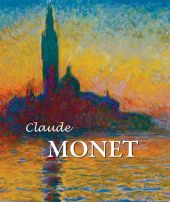 For Claude Monet the designation ‘impressionist’ always remained a source of pride. In spite of all the things critics have written about his work, Monet continued to be a true impressionist to the end of his very long life. He was so by deep conviction, and for his Impressionism he may have sacrificed many other opportunities that his enormous talent held out to him. Monet did not paint classical compositions with figures, and he did not become a portraitist, although his professional training included those skills. He chose a single genre for himself, landscape painting, and in that he achieved a degree of perfection none of his contemporaries managed to attain. Yet the little boy began by drawing caricatures. Boudin advised Monet to stop doing caricatures and to take up landscapes instead. The sea, the sky, animals, people, and trees are beautiful in the exact state in which nature created them – surrounded by air and light. Indeed, it was Boudin who passed on to Monet his conviction of the importance of working in the open air, which Monet would in turn transmit to his impressionist friends. Monet did not want to enrol at the Ecole des Beaux-Arts. He chose to attend a private school, L’Académie Suisse, established by an ex-model on the Quai d’Orfèvres near the Pont Saint-Michel. One could draw and paint from a live model there for a modest fee. This was where Monet met the future impressionist Camille Pissarro. Later in Gleyre’s studio, Monet met Auguste Renoir Alfred Sisley, and Frédéric Bazille. Monet considered it very important that Boudin be introduced to his new friends. He also told his friends of another painter he had found in Normandy. This was the remarkable Dutchman Jongkind. His landscapes were saturated with colour, and their sincerity, at times even their naïveté, was combined with subtle observation of the Normandy shore’s variable nature. At this time Monet’s landscapes were not yet characterized by great richness of colour. Rather, they recalled the tonalities of paintings by the Barbizon artists, and Boudin’s seascapes. He composed a range of colour based on yellow-brown or blue-grey. At the Third Impressionist Exhibition in 1877 Monet presented a series of paintings for the first time: seven views of the Saint-Lazare train station. He selected them from among twelve he had painted at the station. This motif in Monet’s work is in line not only with Manet’s Chemin de fer (The Railway) and with his own landscapes featuring trains and stations at Argenteuil, but also with a trend that surfaced after the railways first began to appear. In 1883, Monet had bought a house in the village of Giverny, near the little town of Vernon. At Giverny, series painting became one of his chief working procedures. Meadows became his permanent workplace. When a journalist, who had come from Vétheuil to interview Monet, asked him where his studio was, the painter answered, “My studio! I’ve never had a studio, and I can’t see why one would lock oneself up in a room. To draw, yes – to paint, no”. Then, broadly gesturing towards the Seine, the hills, and the silhouette of the little town, he declared, “There’s my real studio.”Monet began to go to London in the last decade of the nineteenth century. He began all his London paintings working directly from nature, but completed many of them afterwards, at Giverny. The series formed an indivisible whole, and the painter had to work on all his canvases at one time. A friend of Monet’s, the writer Octave Mirbeau, wrote that he had accomplished a miracle. With the help of colours he had succeeded in recreating on the canvas something almost impossible to capture: he was reproducing sunlight, enriching it with an infinite number of reflections. Alone among the impressionists, Claude Monet took an almost scientific study of the possibilities of colour to its limits; it is unlikely that one could have gone any further in that direction. ... Далее
For Claude Monet the designation ‘impressionist’ always remained a source of pride. In spite of all the things critics have written about his work, Monet continued to be a true impressionist to the end of his very long life. He was so by deep conviction, and for his Impressionism he may have sacrificed many other opportunities that his enormous talent held out to him. Monet did not paint classical compositions with figures, and he did not become a portraitist, although his professional training included those skills. He chose a single genre for himself, landscape painting, and in that he achieved a degree of perfection none of his contemporaries managed to attain. Yet the little boy began by drawing caricatures. Boudin advised Monet to stop doing caricatures and to take up landscapes instead. The sea, the sky, animals, people, and trees are beautiful in the exact state in which nature created them – surrounded by air and light. Indeed, it was Boudin who passed on to Monet his conviction of the importance of working in the open air, which Monet would in turn transmit to his impressionist friends. Monet did not want to enrol at the Ecole des Beaux-Arts. He chose to attend a private school, L’Académie Suisse, established by an ex-model on the Quai d’Orfèvres near the Pont Saint-Michel. One could draw and paint from a live model there for a modest fee. This was where Monet met the future impressionist Camille Pissarro. Later in Gleyre’s studio, Monet met Auguste Renoir Alfred Sisley, and Frédéric Bazille. Monet considered it very important that Boudin be introduced to his new friends. He also told his friends of another painter he had found in Normandy. This was the remarkable Dutchman Jongkind. His landscapes were saturated with colour, and their sincerity, at times even their naïveté, was combined with subtle observation of the Normandy shore’s variable nature. At this time Monet’s landscapes were not yet characterized by great richness of colour. Rather, they recalled the tonalities of paintings by the Barbizon artists, and Boudin’s seascapes. He composed a range of colour based on yellow-brown or blue-grey. At the Third Impressionist Exhibition in 1877 Monet presented a series of paintings for the first time: seven views of the Saint-Lazare train station. He selected them from among twelve he had painted at the station. This motif in Monet’s work is in line not only with Manet’s Chemin de fer (The Railway) and with his own landscapes featuring trains and stations at Argenteuil, but also with a trend that surfaced after the railways first began to appear. In 1883, Monet had bought a house in the village of Giverny, near the little town of Vernon. At Giverny, series painting became one of his chief working procedures. Meadows became his permanent workplace. When a journalist, who had come from Vétheuil to interview Monet, asked him where his studio was, the painter answered, “My studio! I’ve never had a studio, and I can’t see why one would lock oneself up in a room. To draw, yes – to paint, no”. Then, broadly gesturing towards the Seine, the hills, and the silhouette of the little town, he declared, “There’s my real studio.”Monet began to go to London in the last decade of the nineteenth century. He began all his London paintings working directly from nature, but completed many of them afterwards, at Giverny. The series formed an indivisible whole, and the painter had to work on all his canvases at one time. A friend of Monet’s, the writer Octave Mirbeau, wrote that he had accomplished a miracle. With the help of colours he had succeeded in recreating on the canvas something almost impossible to capture: he was reproducing sunlight, enriching it with an infinite number of reflections. Alone among the impressionists, Claude Monet took an almost scientific study of the possibilities of colour to its limits; it is unlikely that one could have gone any further in that direction. ... Далее -
39.
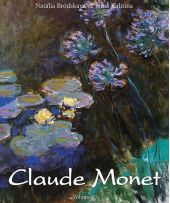 With Impression, Sunrise, exhibited in 1874, Claude Monet (1840–1926) took part in the creation of the Impressionist movement that introduced the 19 th century to modern art. All his life, he captured natural movements around him and translated them into visual sensations. A complex man and an exceptional artist, Monet is internationally famous for his poetic paintings of waterlilies and beautiful landscapes. He leaves behind the most well-known masterpieces that still fascinate art lovers all over the world. In this two-volume illustrated work, Natalia Brodskaya and Nina Kalitina invite us on a journey across time to discover the history of Impressionism and Monet; a movement and an artist forever bound together. Specialists of 19 th and 20 th century art, the authors shed light on the birth of modernity in art, a true revolution responsible for the thriving art scene of the 20 th century. ... Далее
With Impression, Sunrise, exhibited in 1874, Claude Monet (1840–1926) took part in the creation of the Impressionist movement that introduced the 19 th century to modern art. All his life, he captured natural movements around him and translated them into visual sensations. A complex man and an exceptional artist, Monet is internationally famous for his poetic paintings of waterlilies and beautiful landscapes. He leaves behind the most well-known masterpieces that still fascinate art lovers all over the world. In this two-volume illustrated work, Natalia Brodskaya and Nina Kalitina invite us on a journey across time to discover the history of Impressionism and Monet; a movement and an artist forever bound together. Specialists of 19 th and 20 th century art, the authors shed light on the birth of modernity in art, a true revolution responsible for the thriving art scene of the 20 th century. ... Далее -
40.
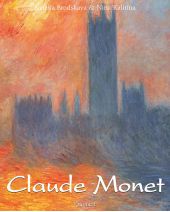 With Impression, Sunrise, exhibited in 1874, Claude Monet (1840–1926) took part in the creation of the Impressionist movement that introduced the 19 th century to modern art. All his life, he captured natural movements around him and translated them into visual sensations. A complex man and an exceptional artist, Monet is internationally famous for his poetic paintings of waterlilies and beautiful landscapes. He leaves behind the most well-known masterpieces that still fascinate art lovers all over the world. In this two-volume illustrated work, Natalia Brodskaya and Nina Kalitina invite us on a journey across time to discover the history of Impressionism and Monet; a movement and an artist forever bound together. Specialists of 19 th and 20 th century art, the authors shed light on the birth of modernity in art, a true revolution responsible for the thriving art scene of the 20 th century. ... Далее
With Impression, Sunrise, exhibited in 1874, Claude Monet (1840–1926) took part in the creation of the Impressionist movement that introduced the 19 th century to modern art. All his life, he captured natural movements around him and translated them into visual sensations. A complex man and an exceptional artist, Monet is internationally famous for his poetic paintings of waterlilies and beautiful landscapes. He leaves behind the most well-known masterpieces that still fascinate art lovers all over the world. In this two-volume illustrated work, Natalia Brodskaya and Nina Kalitina invite us on a journey across time to discover the history of Impressionism and Monet; a movement and an artist forever bound together. Specialists of 19 th and 20 th century art, the authors shed light on the birth of modernity in art, a true revolution responsible for the thriving art scene of the 20 th century. ... Далее -
41.
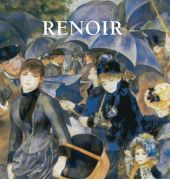 Pierre-Auguste Renoir nació en Limoges, el 25 de febrero de 1841. En 1854, sus padres lo sacaron de la escuela y le consiguieron un sitio en el taller de los hermanos Lévy, donde aprendió a pintar porcelana. El hermano menor de Renoir, Edmond, opinó al respecto: “A partir de lo que pintaba al carbón en las paredes concluyeron que tenía habilidad para las artes. Así fue como nuestros padres lo pusieron a aprender el oficio de pintor de porcelana”. Uno de los trabajadores de los Lévy, Emile Laporte, pintaba al óleo en su tiempo libre. Él le sugirió a Renoir que usara sus lienzos y pinturas. Este ofrecimiento tuvo como resultado la primera pintura del futuro impresionista. En 1862, Renoir pasó sus exámenes, ingresó en la Escuela de Bellas Artes y, al mismo tiempo, en uno de los estudios independientes donde enseñaba Charles Gleyre, un profesor de la Escuela. El segundo, o tal vez incluso el primero de los grandes sucesos de este periodo en la vida de Renoir fue reunirse, en el estudio de Gleyre, con aquellos que se convertirían en sus mejores amigos durante el resto de su vida y que compartirían sus ideas sobre el arte. Mucho tiempo después, cuando ya era un artista maduro, Renoir tuvo la oportunidad de ver obras de Rembrandt en Holanda, de Velázquez, Goya y El Greco en España y de Rafael en Italia. Sin embargo, Renoir vivió y respiró la idea de un nuevo tipo de arte. Siempre encontró inspiración en el Louvre. “Para mí, en la era de Gleyre, el Louvre era Delacroix”, le confesó a su hijo. Para Renoir, la primera exhibición impresionista fue el momento en que se afirmó su visión del arte y del artista. Este periodo de la vida de Renoir estuvo marcado por otro acontecimiento significativo. En 1873 se mudó a Montmartre, a la casa número 35 de Rue Saint-Georges, donde vivió hasta 1884. Renoir siguió siendo leal a Montmartre durante el resto de su vida. Aquí encontró sus temas “plein-air”, sus modelos y hasta su familia. Fue en la década de 1870 cuando Renoir conoció a los amigos que lo acompañarían el resto de su vida. Uno de ellos fue el comerciante de arte Paul Durand-Ruel, que comenzó a comprar sus pinturas en 1872. En verano, Renoir siguió pintando muchas escenas de exteriores, junto con Monet. Viajó a Argenteuil, donde Monet alquiló una casa para su familia. Edouard Manet también trabajaba con ellos algunas veces. En 1877, en la tercera exhibición impresionista, Renoir presentó un panorama de más de veinte pinturas entre las que se encontraban paisajes creados en París, en el Sena, fuera de la ciudad y en los jardines de Claude Monet; estudios de cabezas femeninas y ramos de flores; retratos de Sisley, de la actriz Jeanne Samary, del escritor Alphonse Daudet y del político Spuller; además de las obras El columpio y El baile en el Moulin de la Galette. Finalmente, en la década de 1880, Renoir entró en una racha de buena suerte. Unos ricos empresarios, el propietario de Grands Magasins du Louvre y el senador Goujon, le encargaron unos trabajos. Sus pinturas se exhibieron en Londres y Bruselas, así como en la Séptima Exhibición Internacional llevada a cabo en la galería de Georges Petit en París, en 1886. En una carta a Durand-Ruel, que entonces se encontraba en Nueva York, Renoir escribió: “Ya se inauguró la exhibición de Petit y no va tan mal, o al menos eso dicen. Después de todo, es difícil juzgarse a sí mismo. Creo que he logrado dar un paso para ganar el respeto del público. Es un pequeño paso, pero es algo”. ... Далее
Pierre-Auguste Renoir nació en Limoges, el 25 de febrero de 1841. En 1854, sus padres lo sacaron de la escuela y le consiguieron un sitio en el taller de los hermanos Lévy, donde aprendió a pintar porcelana. El hermano menor de Renoir, Edmond, opinó al respecto: “A partir de lo que pintaba al carbón en las paredes concluyeron que tenía habilidad para las artes. Así fue como nuestros padres lo pusieron a aprender el oficio de pintor de porcelana”. Uno de los trabajadores de los Lévy, Emile Laporte, pintaba al óleo en su tiempo libre. Él le sugirió a Renoir que usara sus lienzos y pinturas. Este ofrecimiento tuvo como resultado la primera pintura del futuro impresionista. En 1862, Renoir pasó sus exámenes, ingresó en la Escuela de Bellas Artes y, al mismo tiempo, en uno de los estudios independientes donde enseñaba Charles Gleyre, un profesor de la Escuela. El segundo, o tal vez incluso el primero de los grandes sucesos de este periodo en la vida de Renoir fue reunirse, en el estudio de Gleyre, con aquellos que se convertirían en sus mejores amigos durante el resto de su vida y que compartirían sus ideas sobre el arte. Mucho tiempo después, cuando ya era un artista maduro, Renoir tuvo la oportunidad de ver obras de Rembrandt en Holanda, de Velázquez, Goya y El Greco en España y de Rafael en Italia. Sin embargo, Renoir vivió y respiró la idea de un nuevo tipo de arte. Siempre encontró inspiración en el Louvre. “Para mí, en la era de Gleyre, el Louvre era Delacroix”, le confesó a su hijo. Para Renoir, la primera exhibición impresionista fue el momento en que se afirmó su visión del arte y del artista. Este periodo de la vida de Renoir estuvo marcado por otro acontecimiento significativo. En 1873 se mudó a Montmartre, a la casa número 35 de Rue Saint-Georges, donde vivió hasta 1884. Renoir siguió siendo leal a Montmartre durante el resto de su vida. Aquí encontró sus temas “plein-air”, sus modelos y hasta su familia. Fue en la década de 1870 cuando Renoir conoció a los amigos que lo acompañarían el resto de su vida. Uno de ellos fue el comerciante de arte Paul Durand-Ruel, que comenzó a comprar sus pinturas en 1872. En verano, Renoir siguió pintando muchas escenas de exteriores, junto con Monet. Viajó a Argenteuil, donde Monet alquiló una casa para su familia. Edouard Manet también trabajaba con ellos algunas veces. En 1877, en la tercera exhibición impresionista, Renoir presentó un panorama de más de veinte pinturas entre las que se encontraban paisajes creados en París, en el Sena, fuera de la ciudad y en los jardines de Claude Monet; estudios de cabezas femeninas y ramos de flores; retratos de Sisley, de la actriz Jeanne Samary, del escritor Alphonse Daudet y del político Spuller; además de las obras El columpio y El baile en el Moulin de la Galette. Finalmente, en la década de 1880, Renoir entró en una racha de buena suerte. Unos ricos empresarios, el propietario de Grands Magasins du Louvre y el senador Goujon, le encargaron unos trabajos. Sus pinturas se exhibieron en Londres y Bruselas, así como en la Séptima Exhibición Internacional llevada a cabo en la galería de Georges Petit en París, en 1886. En una carta a Durand-Ruel, que entonces se encontraba en Nueva York, Renoir escribió: “Ya se inauguró la exhibición de Petit y no va tan mal, o al menos eso dicen. Después de todo, es difícil juzgarse a sí mismo. Creo que he logrado dar un paso para ganar el respeto del público. Es un pequeño paso, pero es algo”. ... Далее -
42.
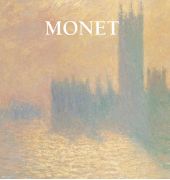 Para Claude Monet, el que se le considerara “impresionista” fue siempre un motivo de orgullo. A pesar de todas las críticas que se han hecho a su trabajo, siguió siendo un verdadero impresionista hasta el final de su muy larga vida. Lo era por convicción profunda y, por el impresionismo, pudo haber sacrificado muchas otras oportunidades que su inmenso talento le ofrecía. Monet no pintaba composiciones clásicas con figuras y nunca fue retratista, aunque su entrenamiento profesional incluía estas habilidades. Eligió un solo género y lo hizo suyo: el paisajismo, y en él logró un grado de perfección que ninguno de sus contemporáneos pudo conseguir. Sin embargo, cuando era niño, comenzó por dibujar caricaturas. Boudin aconsejó a Monet que dejara de hacer caricaturas y se dedicara a los paisajes. El mar, el cielo, los animales, las personas y los árboles son hermosos en el estado en que la naturaleza los creó, rodeados de aire y luz. De hecho, fue Boudin quien trasmitió a Monet su convicción de la importancia de trabajar al aire libre, que a su vez, Monet transmitiría a sus amigos impresionistas. Monet no quiso asistir a la Escuela de Bellas Artes. Eligió estudiar en una escuela privada, L’Académie Suisse, fundada por un ex-modelo en Quai d’Orfèvres, cerca del puente Saint-Michel. Ahí era posible dibujar y pintar modelos vivos por una tarifa modesta. Ahí conoció también al futuro impresionista Camille Pissarro. Más tarde, en el estudio de Gleyre, Monet conoció a Auguste Renoir, Alfred Sisley y Frédéric Bazille. Monet consideraba muy importante presentar a Boudin a sus nuevos amigos. También le habló a sus amigos de otro pintor que había encontrado en Normandía. Se trataba del holandés Jongkind. Sus paisajes estaban saturados de color y su sinceridad, que en ocasiones rayaba en inocencia, combinaba la sutil observación de la naturaleza cambiante de la costa normanda. En aquella época, los paisajes de Monet aún no se caracterizaban por una gran riqueza de color. Más bien recordaban las tonalidades de pinturas de los artistas de la escuela de Barbizon y las marinas de Boudin. Compuso un rango de colores basados en amarillo a marrón o en azul a gris. En la tercera exhibición impresionista en 1877, Monet presentó una serie de pinturas por primera vez: siete vistas de la estación ferroviaria de Saint-Lazare. Las seleccionó entre doce que había pintado en la estación. Este motivo en el trabajo de Monet es coherente no sólo con la obra Chemin de fer (El ferrocarril) de Manet y con sus propios paisajes en los que aparecían trenes y estaciones en Argenteuil, sino también con una tendencia que surgió tras la aparición de los primeros ferrocarriles. En 1883, Monet compró una casa en el poblado de Giverny, cerca del pequeño pueblo de Vernon. En Giverny, pintar series se convirtió en una de sus ocupaciones principales. Los prados se convirtieron en su lugar de trabajo permanente. Cuando un periodista que había llegado desde When Vétheuil a entrevistar a Monet le preguntó dónde estaba su estudio, el pintor le respondió: “¡Mi estudio! Nunca he tenido uno y no veo la razón por la que alguien quiera encerrarse en una habitación. Para dibujar, sí, pero para pintar, no”. Entonces hizo un gesto amplio para abarcar el Sena, las colinas y la silueta de un pequeño pueblo y declaró: “Este es mi verdadero estudio”. Monet empezó a ir a Londres en la última década del siglo XIX. Comenzó todas sus pinturas de Londres copiando directo de la naturaleza, pero completó muchas de ellas después, en Giverny. La serie formó un todo indivisible y el pintor tuvo que trabajar en cada uno de sus lienzos en algún momento. Un amigo de Monet, el escritor Octave Mirbeau, escribió que había logrado un milagro. Con aquellos colores logró recrear en el lienzo algo casi imposible de capturar: reprodujo la luz del sol, enriqueciéndola con un número infinito de reflejos. Como ningún otro de los impresionistas, Claude Monet adoptó una perspectiva casi científica de las posibilidades del color y la llevó hasta el límite; es poco probable que alguien más lograra llegar tan lejos como él en esa dirección. ... Далее
Para Claude Monet, el que se le considerara “impresionista” fue siempre un motivo de orgullo. A pesar de todas las críticas que se han hecho a su trabajo, siguió siendo un verdadero impresionista hasta el final de su muy larga vida. Lo era por convicción profunda y, por el impresionismo, pudo haber sacrificado muchas otras oportunidades que su inmenso talento le ofrecía. Monet no pintaba composiciones clásicas con figuras y nunca fue retratista, aunque su entrenamiento profesional incluía estas habilidades. Eligió un solo género y lo hizo suyo: el paisajismo, y en él logró un grado de perfección que ninguno de sus contemporáneos pudo conseguir. Sin embargo, cuando era niño, comenzó por dibujar caricaturas. Boudin aconsejó a Monet que dejara de hacer caricaturas y se dedicara a los paisajes. El mar, el cielo, los animales, las personas y los árboles son hermosos en el estado en que la naturaleza los creó, rodeados de aire y luz. De hecho, fue Boudin quien trasmitió a Monet su convicción de la importancia de trabajar al aire libre, que a su vez, Monet transmitiría a sus amigos impresionistas. Monet no quiso asistir a la Escuela de Bellas Artes. Eligió estudiar en una escuela privada, L’Académie Suisse, fundada por un ex-modelo en Quai d’Orfèvres, cerca del puente Saint-Michel. Ahí era posible dibujar y pintar modelos vivos por una tarifa modesta. Ahí conoció también al futuro impresionista Camille Pissarro. Más tarde, en el estudio de Gleyre, Monet conoció a Auguste Renoir, Alfred Sisley y Frédéric Bazille. Monet consideraba muy importante presentar a Boudin a sus nuevos amigos. También le habló a sus amigos de otro pintor que había encontrado en Normandía. Se trataba del holandés Jongkind. Sus paisajes estaban saturados de color y su sinceridad, que en ocasiones rayaba en inocencia, combinaba la sutil observación de la naturaleza cambiante de la costa normanda. En aquella época, los paisajes de Monet aún no se caracterizaban por una gran riqueza de color. Más bien recordaban las tonalidades de pinturas de los artistas de la escuela de Barbizon y las marinas de Boudin. Compuso un rango de colores basados en amarillo a marrón o en azul a gris. En la tercera exhibición impresionista en 1877, Monet presentó una serie de pinturas por primera vez: siete vistas de la estación ferroviaria de Saint-Lazare. Las seleccionó entre doce que había pintado en la estación. Este motivo en el trabajo de Monet es coherente no sólo con la obra Chemin de fer (El ferrocarril) de Manet y con sus propios paisajes en los que aparecían trenes y estaciones en Argenteuil, sino también con una tendencia que surgió tras la aparición de los primeros ferrocarriles. En 1883, Monet compró una casa en el poblado de Giverny, cerca del pequeño pueblo de Vernon. En Giverny, pintar series se convirtió en una de sus ocupaciones principales. Los prados se convirtieron en su lugar de trabajo permanente. Cuando un periodista que había llegado desde When Vétheuil a entrevistar a Monet le preguntó dónde estaba su estudio, el pintor le respondió: “¡Mi estudio! Nunca he tenido uno y no veo la razón por la que alguien quiera encerrarse en una habitación. Para dibujar, sí, pero para pintar, no”. Entonces hizo un gesto amplio para abarcar el Sena, las colinas y la silueta de un pequeño pueblo y declaró: “Este es mi verdadero estudio”. Monet empezó a ir a Londres en la última década del siglo XIX. Comenzó todas sus pinturas de Londres copiando directo de la naturaleza, pero completó muchas de ellas después, en Giverny. La serie formó un todo indivisible y el pintor tuvo que trabajar en cada uno de sus lienzos en algún momento. Un amigo de Monet, el escritor Octave Mirbeau, escribió que había logrado un milagro. Con aquellos colores logró recrear en el lienzo algo casi imposible de capturar: reprodujo la luz del sol, enriqueciéndola con un número infinito de reflejos. Como ningún otro de los impresionistas, Claude Monet adoptó una perspectiva casi científica de las posibilidades del color y la llevó hasta el límite; es poco probable que alguien más lograra llegar tan lejos como él en esa dirección. ... Далее -
43.
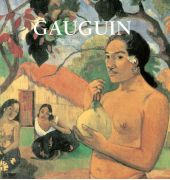 Paul Gauguin fue primero un marino y luego un exitoso corredor de bolsa en París. En 1874 comenzó a pintar los fines de semana, como pasatiempo. Nueve años después, tras la caída de la bolsa de valores, se sintió lo bastante confiado en su habilidad para ganarse la vida pintando, que renunció a su puesto y se dedicó a la pintura de tiempo completo. Siguiendo el ejemplo de Cézanne, Gauguin pintó naturalezas muertas desde el principio de su vida artística. Incluso poseía una naturaleza muerta de Cézanne, que aparece en el cuadro de Gauguin Retrato de Marie Lagadu. El año de 1891 fue crucial para Gauguin. En ese año dejó Francia y se marchó a Tahití, donde permaneció hasta 1893. Su estancia en este país determinó su vida y trayectoria futuras, ya que, en 1895, después de pasar una temporada en Francia, volvió a Tahití para siempre. En Tahití, Gauguin descubrió el arte primitivo, con sus formas planas y los colores violentos de una naturaleza salvaje. Con sinceridad absoluta, los transfirió a sus lienzos. A partir de ese momento, sus pinturas reflejaron este estilo: una simplificación radical del dibujo, colores brillantes, puros y vivos, una composición de tipo ornamental y una deliberada falta de contraste en los planos. Gauguin bautizó su estilo como “simbolismo sintético”. ... Далее
Paul Gauguin fue primero un marino y luego un exitoso corredor de bolsa en París. En 1874 comenzó a pintar los fines de semana, como pasatiempo. Nueve años después, tras la caída de la bolsa de valores, se sintió lo bastante confiado en su habilidad para ganarse la vida pintando, que renunció a su puesto y se dedicó a la pintura de tiempo completo. Siguiendo el ejemplo de Cézanne, Gauguin pintó naturalezas muertas desde el principio de su vida artística. Incluso poseía una naturaleza muerta de Cézanne, que aparece en el cuadro de Gauguin Retrato de Marie Lagadu. El año de 1891 fue crucial para Gauguin. En ese año dejó Francia y se marchó a Tahití, donde permaneció hasta 1893. Su estancia en este país determinó su vida y trayectoria futuras, ya que, en 1895, después de pasar una temporada en Francia, volvió a Tahití para siempre. En Tahití, Gauguin descubrió el arte primitivo, con sus formas planas y los colores violentos de una naturaleza salvaje. Con sinceridad absoluta, los transfirió a sus lienzos. A partir de ese momento, sus pinturas reflejaron este estilo: una simplificación radical del dibujo, colores brillantes, puros y vivos, una composición de tipo ornamental y una deliberada falta de contraste en los planos. Gauguin bautizó su estilo como “simbolismo sintético”. ... Далее -
44.
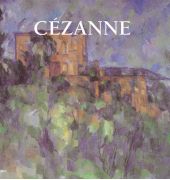 Desde su muerte, hace 100 años, Cézanne se ha convertido en el pintor más famoso del siglo XIX. Nació en Aix-en-Provence en 1839 y el periodo más feliz de su vida fue su primera juventud en Provenza, en compañía de Emile Zolá. Siguiendo el ejemplo de Zolá, al cumplir los veintiún años, Cézanne se marchó a París. Durante la guerra franco-prusiana desertó de la milicia, y dividió su tiempo entre pintar al aire libre y estudiar. Al comerciante de arte Vollard le dijo: “Sólo soy un pintor. El ingenio parisino me fastidia. Lo único que quiero es pintar desnudos en las orillas del Arc [un río cercano a Aix]”. Animado por Renoir, uno de los primeros en apreciarlo, exhibió con los impresionistas en 1874 y en 1877. Su obra fue recibida con desdén, lo que lo hirió profundamente. La ambición de Cézanne en sus propias palabras, era “hacer del impresionismo algo tan sólido y durable como las pinturas de los museos”. Su objetivo era lograr algo monumental en un lenguaje moderno de tonos brillantes y vibrantes. Cézanne quería retener el color natural de un objeto y armonizarlo con las diversas influencias de luz y sombra que intentaban destruirlo; buscaba una escala de tonos que expresara la masa y el carácter de la forma. A Cézanne le gustaba pintar frutas porque se trataba de modelos pacientes y él trabajaba lentamente. No pretendía sólo copiar una manzana. Mantenía el color dominante y el carácter de la fruta, pero subrayaba el atractivo emocional de la forma con un conjunto de tonos ricos y concordantes. En sus pinturas de naturalezas muertas era un maestro. Sus composiciones de vegetales y frutas son verdaderamente dramáticas; tienen peso, nobleza, el estilo de las formas inmortales. Ningún otro pintor logró darle a una manzana roja una convicción tan cálida, una simpatía tan genuinamente espiritual o una observación tan prolongada. Ningún otro pintor de habilidad comparable reservó sus más fuertes impulsos para las naturalezas muertas. Cézanne devolvió a la pintura la preeminencia del conocimiento, la calidad más esencial de todo esfuerzo creativo. La muerte de su padre, en 1886, lo convirtió en un hombre rico, pero no por eso cambió su estilo de vida austero. Poco después, Cézanne se retiró de forma permanente a su propiedad en Provenza. Probablemente se trató del más solitario de los pintores de su época. Por momentos le atacaba una peculiar melancolía, una oscura desesperanza. Se volvió irascible y exigente, destruía los lienzos y los arrojaba fuera de su estudio, hacia los árboles, los abandonaba en los campos, se los daba a su hijo para que los cortara e hiciera con ellos rompecabezas o se los regalaba a la gente de Aix. A principios de siglo, cuando Vollard llegó a Provenza con intenciones de adquirir todo lo que pudiera del material de Cézanne, los campesinos, que se enteraron de que un loco de París estaba pagando por aquellos viejos lienzos, sacaron de los graneros una considerable cantidad de naturalezas muertas y paisajes. El viejo maestro de Aix se sintió abrumado por la alegría, pero el reconocimiento le llegó demasiado tarde. Murió en 1906 de una fiebre que contrajo mientras pintaba en la lluvia. ... Далее
Desde su muerte, hace 100 años, Cézanne se ha convertido en el pintor más famoso del siglo XIX. Nació en Aix-en-Provence en 1839 y el periodo más feliz de su vida fue su primera juventud en Provenza, en compañía de Emile Zolá. Siguiendo el ejemplo de Zolá, al cumplir los veintiún años, Cézanne se marchó a París. Durante la guerra franco-prusiana desertó de la milicia, y dividió su tiempo entre pintar al aire libre y estudiar. Al comerciante de arte Vollard le dijo: “Sólo soy un pintor. El ingenio parisino me fastidia. Lo único que quiero es pintar desnudos en las orillas del Arc [un río cercano a Aix]”. Animado por Renoir, uno de los primeros en apreciarlo, exhibió con los impresionistas en 1874 y en 1877. Su obra fue recibida con desdén, lo que lo hirió profundamente. La ambición de Cézanne en sus propias palabras, era “hacer del impresionismo algo tan sólido y durable como las pinturas de los museos”. Su objetivo era lograr algo monumental en un lenguaje moderno de tonos brillantes y vibrantes. Cézanne quería retener el color natural de un objeto y armonizarlo con las diversas influencias de luz y sombra que intentaban destruirlo; buscaba una escala de tonos que expresara la masa y el carácter de la forma. A Cézanne le gustaba pintar frutas porque se trataba de modelos pacientes y él trabajaba lentamente. No pretendía sólo copiar una manzana. Mantenía el color dominante y el carácter de la fruta, pero subrayaba el atractivo emocional de la forma con un conjunto de tonos ricos y concordantes. En sus pinturas de naturalezas muertas era un maestro. Sus composiciones de vegetales y frutas son verdaderamente dramáticas; tienen peso, nobleza, el estilo de las formas inmortales. Ningún otro pintor logró darle a una manzana roja una convicción tan cálida, una simpatía tan genuinamente espiritual o una observación tan prolongada. Ningún otro pintor de habilidad comparable reservó sus más fuertes impulsos para las naturalezas muertas. Cézanne devolvió a la pintura la preeminencia del conocimiento, la calidad más esencial de todo esfuerzo creativo. La muerte de su padre, en 1886, lo convirtió en un hombre rico, pero no por eso cambió su estilo de vida austero. Poco después, Cézanne se retiró de forma permanente a su propiedad en Provenza. Probablemente se trató del más solitario de los pintores de su época. Por momentos le atacaba una peculiar melancolía, una oscura desesperanza. Se volvió irascible y exigente, destruía los lienzos y los arrojaba fuera de su estudio, hacia los árboles, los abandonaba en los campos, se los daba a su hijo para que los cortara e hiciera con ellos rompecabezas o se los regalaba a la gente de Aix. A principios de siglo, cuando Vollard llegó a Provenza con intenciones de adquirir todo lo que pudiera del material de Cézanne, los campesinos, que se enteraron de que un loco de París estaba pagando por aquellos viejos lienzos, sacaron de los graneros una considerable cantidad de naturalezas muertas y paisajes. El viejo maestro de Aix se sintió abrumado por la alegría, pero el reconocimiento le llegó demasiado tarde. Murió en 1906 de una fiebre que contrajo mientras pintaba en la lluvia. ... Далее -
45.
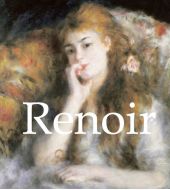 Pierre-Auguste Renoir nació en Limoges, el 25 de febrero de 1841. En 1854, sus padres lo sacaron de la escuela y le consiguieron un sitio en el taller de los hermanos Lévy, donde aprendió a pintar porcelana. El hermano menor de Renoir, Edmond, opinó al respecto: “A partir de lo que pintaba al carbón en las paredes concluyeron que tenía habilidad para las artes. Así fue como nuestros padres lo pusieron a aprender el oficio de pintor de porcelana”. Uno de los trabajadores de los Lévy, Emile Laporte, pintaba al óleo en su tiempo libre. Él le sugirió a Renoir que usara sus lienzos y pinturas. Este ofrecimiento tuvo como resultado la primera pintura del futuro impresionista. En 1862, Renoir pasó sus exámenes, ingresó en la Escuela de Bellas Artes y, al mismo tiempo, en uno de los estudios independientes donde enseñaba Charles Gleyre, un profesor de la Escuela. El segundo, o tal vez incluso el primero de los grandes sucesos de este periodo en la vida de Renoir fue reunirse, en el estudio de Gleyre, con aquellos que se convertirían en sus mejores amigos durante el resto de su vida y que compartirían sus ideas sobre el arte. Mucho tiempo después, cuando ya era un artista maduro, Renoir tuvo la oportunidad de ver obras de Rembrandt en Holanda, de Velázquez, Goya y El Greco en España y de Rafael en Italia. Sin embargo, Renoir vivió y respiró la idea de un nuevo tipo de arte. Siempre encontró inspiración en el Louvre. “Para mí, en la era de Gleyre, el Louvre era Delacroix”, le confesó a su hijo. Para Renoir, la primera exhibición impresionista fue el momento en que se afirmó su visión del arte y del artista. Este periodo de la vida de Renoir estuvo marcado por otro acontecimiento significativo. En 1873 se mudó a Montmartre, a la casa número 35 de Rue Saint-Georges, donde vivió hasta 1884. Renoir siguió siendo leal a Montmartre durante el resto de su vida. Aquí encontró sus temas “plein-air”, sus modelos y hasta su familia. Fue en la década de 1870 cuando Renoir conoció a los amigos que lo acompañarían el resto de su vida. Uno de ellos fue el comerciante de arte Paul Durand-Ruel, que comenzó a comprar sus pinturas en 1872. En verano, Renoir siguió pintando muchas escenas de exteriores, junto con Monet. Viajó a Argenteuil, donde Monet alquiló una casa para su familia. Edouard Manet también trabajaba con ellos algunas veces. En 1877, en la tercera exhibición impresionista, Renoir presentó un panorama de más de veinte pinturas entre las que se encontraban paisajes creados en París, en el Sena, fuera de la ciudad y en los jardines de Claude Monet; estudios de cabezas femeninas y ramos de flores; retratos de Sisley, de la actriz Jeanne Samary, del escritor Alphonse Daudet y del político Spuller; además de las obras El columpio y El baile en el Moulin de la Galette. Finalmente, en la década de 1880, Renoir entró en una racha de buena suerte. Unos ricos empresarios, el propietario de Grands Magasins du Louvre y el senador Goujon, le encargaron unos trabajos. Sus pinturas se exhibieron en Londres y Bruselas, así como en la Séptima Exhibición Internacional llevada a cabo en la galería de Georges Petit en París, en 1886. En una carta a Durand-Ruel, que entonces se encontraba en Nueva York, Renoir escribió: “Ya se inauguró la exhibición de Petit y no va tan mal, o al menos eso dicen. Después de todo, es difícil juzgarse a sí mismo. Creo que he logrado dar un paso para ganar el respeto del público. Es un pequeño paso, pero es algo”. ... Далее
Pierre-Auguste Renoir nació en Limoges, el 25 de febrero de 1841. En 1854, sus padres lo sacaron de la escuela y le consiguieron un sitio en el taller de los hermanos Lévy, donde aprendió a pintar porcelana. El hermano menor de Renoir, Edmond, opinó al respecto: “A partir de lo que pintaba al carbón en las paredes concluyeron que tenía habilidad para las artes. Así fue como nuestros padres lo pusieron a aprender el oficio de pintor de porcelana”. Uno de los trabajadores de los Lévy, Emile Laporte, pintaba al óleo en su tiempo libre. Él le sugirió a Renoir que usara sus lienzos y pinturas. Este ofrecimiento tuvo como resultado la primera pintura del futuro impresionista. En 1862, Renoir pasó sus exámenes, ingresó en la Escuela de Bellas Artes y, al mismo tiempo, en uno de los estudios independientes donde enseñaba Charles Gleyre, un profesor de la Escuela. El segundo, o tal vez incluso el primero de los grandes sucesos de este periodo en la vida de Renoir fue reunirse, en el estudio de Gleyre, con aquellos que se convertirían en sus mejores amigos durante el resto de su vida y que compartirían sus ideas sobre el arte. Mucho tiempo después, cuando ya era un artista maduro, Renoir tuvo la oportunidad de ver obras de Rembrandt en Holanda, de Velázquez, Goya y El Greco en España y de Rafael en Italia. Sin embargo, Renoir vivió y respiró la idea de un nuevo tipo de arte. Siempre encontró inspiración en el Louvre. “Para mí, en la era de Gleyre, el Louvre era Delacroix”, le confesó a su hijo. Para Renoir, la primera exhibición impresionista fue el momento en que se afirmó su visión del arte y del artista. Este periodo de la vida de Renoir estuvo marcado por otro acontecimiento significativo. En 1873 se mudó a Montmartre, a la casa número 35 de Rue Saint-Georges, donde vivió hasta 1884. Renoir siguió siendo leal a Montmartre durante el resto de su vida. Aquí encontró sus temas “plein-air”, sus modelos y hasta su familia. Fue en la década de 1870 cuando Renoir conoció a los amigos que lo acompañarían el resto de su vida. Uno de ellos fue el comerciante de arte Paul Durand-Ruel, que comenzó a comprar sus pinturas en 1872. En verano, Renoir siguió pintando muchas escenas de exteriores, junto con Monet. Viajó a Argenteuil, donde Monet alquiló una casa para su familia. Edouard Manet también trabajaba con ellos algunas veces. En 1877, en la tercera exhibición impresionista, Renoir presentó un panorama de más de veinte pinturas entre las que se encontraban paisajes creados en París, en el Sena, fuera de la ciudad y en los jardines de Claude Monet; estudios de cabezas femeninas y ramos de flores; retratos de Sisley, de la actriz Jeanne Samary, del escritor Alphonse Daudet y del político Spuller; además de las obras El columpio y El baile en el Moulin de la Galette. Finalmente, en la década de 1880, Renoir entró en una racha de buena suerte. Unos ricos empresarios, el propietario de Grands Magasins du Louvre y el senador Goujon, le encargaron unos trabajos. Sus pinturas se exhibieron en Londres y Bruselas, así como en la Séptima Exhibición Internacional llevada a cabo en la galería de Georges Petit en París, en 1886. En una carta a Durand-Ruel, que entonces se encontraba en Nueva York, Renoir escribió: “Ya se inauguró la exhibición de Petit y no va tan mal, o al menos eso dicen. Después de todo, es difícil juzgarse a sí mismo. Creo que he logrado dar un paso para ganar el respeto del público. Es un pequeño paso, pero es algo”. ... Далее -
46.
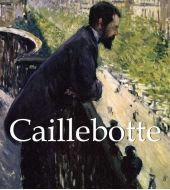 Bei seinen Zeitgenossen vor allem als Mäzen und Sammler bekannt, nimmt Caillebotte heute seinen rechtmäßigen Platz im Pantheon der Künstler ein – als Maler, der in seinen bahnbrechenden Werken in einzigartiger Weise den Realismus mit dem Impressionismus verbindet. Bemerkenswert ist die Verbindung von fotografischen Techniken, von der Perspektive und der akkuraten Abbildung der Realität mit der poetischen Freilichtmalerei des Impressionismus. Diese Monografie eröffnet dem Leser einen neuen Blick auf diesen faszinierenden Künstler, der Kunst und Realität in einer eigenen künstlerischen Sprache verband, während er die außerordentlichen Talente seiner Zeit förderte. ... Далее
Bei seinen Zeitgenossen vor allem als Mäzen und Sammler bekannt, nimmt Caillebotte heute seinen rechtmäßigen Platz im Pantheon der Künstler ein – als Maler, der in seinen bahnbrechenden Werken in einzigartiger Weise den Realismus mit dem Impressionismus verbindet. Bemerkenswert ist die Verbindung von fotografischen Techniken, von der Perspektive und der akkuraten Abbildung der Realität mit der poetischen Freilichtmalerei des Impressionismus. Diese Monografie eröffnet dem Leser einen neuen Blick auf diesen faszinierenden Künstler, der Kunst und Realität in einer eigenen künstlerischen Sprache verband, während er die außerordentlichen Talente seiner Zeit förderte. ... Далее -
47.
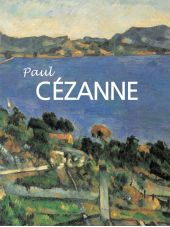 Since his death 200 years ago, Cézanne has become the most famous painter of the nineteenth century. He was born in Aix-en-Provence in 1839 and the happiest period of his life was his early youth in Provence, in company with Emile Zolá, another Italian. Following Zolá’s example, Cézanne went to Paris in his twenty-first year. During the Franco-Prussian war he deserted the military, dividing his time between open-air painting and the studio. He said to Vollard, an art dealer, “I’m only a painter. Parisian wit gives me a pain. Painting nudes on the banks of the Arc [a river near Aix] is all I could ask for.” Encouraged by Renoir, one of the first to appreciate him, he exhibited with the impressionists in 1874 and in 1877. He was received with derision, which deeply hurt him. Cézanne’s ambition, in his own words, was “to make out of Impressionism something as solid and durable as the paintings of the museums.” His aim was to achieve the monumental in a modern language of glowing, vibrating tones. Cézanne wanted to retain the natural colour of an object and to harmonise it with the various influences of light and shade trying to destroy it; to work out a scale of tones expressing the mass and character of the form. Cézanne loved to paint fruit because it afforded him obedient models and he was a slow worker. He did not intend to simply copy an apple. He kept the dominant colour and the character of the fruit, but heightened the emotional appeal of the form by a scheme of rich and concordant tones. In his paintings of still-life he is a master. His fruit and vegetable compositions are truly dramatic; they have the weight, the nobility, the style of immortal forms. No other painter ever brought to a red apple a conviction so heated, sympathy so genuinely spiritual, or an observation so protracted. No other painter of equal ability ever reserved for still-life his strongest impulses. Cézanne restored to painting the pre-eminence of knowledge, the most essential quality to all creative effort. The death of his father in 1886 made him a rich man, but he made no change in his abstemious mode of living. Soon afterwards, Cézanne retired permanently to his estate in Provence. He was probably the loneliest of painters of his day. At times a curious melancholy attacked him, a black hopelessness. He grew more savage and exacting, destroying canvases, throwing them out of his studio into the trees, abandoning them in the fields, and giving them to his son to cut into puzzles, or to the people of Aix. At the beginning of the century, when Vollard arrived in Provence with intentions of buying on speculation all the Cézannes he could get hold of, the peasantry, hearing that a fool from Paris was actually handing out money for old linen, produced from barns a considerable number of still-lifes and landscapes. The old master of Aix was overcome with joy, but recognition came too late. In 1906 he died from a fever contracted while painting in a downpour of rain. ... Далее
Since his death 200 years ago, Cézanne has become the most famous painter of the nineteenth century. He was born in Aix-en-Provence in 1839 and the happiest period of his life was his early youth in Provence, in company with Emile Zolá, another Italian. Following Zolá’s example, Cézanne went to Paris in his twenty-first year. During the Franco-Prussian war he deserted the military, dividing his time between open-air painting and the studio. He said to Vollard, an art dealer, “I’m only a painter. Parisian wit gives me a pain. Painting nudes on the banks of the Arc [a river near Aix] is all I could ask for.” Encouraged by Renoir, one of the first to appreciate him, he exhibited with the impressionists in 1874 and in 1877. He was received with derision, which deeply hurt him. Cézanne’s ambition, in his own words, was “to make out of Impressionism something as solid and durable as the paintings of the museums.” His aim was to achieve the monumental in a modern language of glowing, vibrating tones. Cézanne wanted to retain the natural colour of an object and to harmonise it with the various influences of light and shade trying to destroy it; to work out a scale of tones expressing the mass and character of the form. Cézanne loved to paint fruit because it afforded him obedient models and he was a slow worker. He did not intend to simply copy an apple. He kept the dominant colour and the character of the fruit, but heightened the emotional appeal of the form by a scheme of rich and concordant tones. In his paintings of still-life he is a master. His fruit and vegetable compositions are truly dramatic; they have the weight, the nobility, the style of immortal forms. No other painter ever brought to a red apple a conviction so heated, sympathy so genuinely spiritual, or an observation so protracted. No other painter of equal ability ever reserved for still-life his strongest impulses. Cézanne restored to painting the pre-eminence of knowledge, the most essential quality to all creative effort. The death of his father in 1886 made him a rich man, but he made no change in his abstemious mode of living. Soon afterwards, Cézanne retired permanently to his estate in Provence. He was probably the loneliest of painters of his day. At times a curious melancholy attacked him, a black hopelessness. He grew more savage and exacting, destroying canvases, throwing them out of his studio into the trees, abandoning them in the fields, and giving them to his son to cut into puzzles, or to the people of Aix. At the beginning of the century, when Vollard arrived in Provence with intentions of buying on speculation all the Cézannes he could get hold of, the peasantry, hearing that a fool from Paris was actually handing out money for old linen, produced from barns a considerable number of still-lifes and landscapes. The old master of Aix was overcome with joy, but recognition came too late. In 1906 he died from a fever contracted while painting in a downpour of rain. ... Далее -
48.
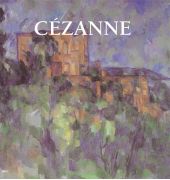 Since his death 200 years ago, Cézanne has become the most famous painter of the nineteenth century. He was born in Aix-en-Provence in 1839 and the happiest period of his life was his early youth in Provence, in company with Emile Zolá, another Italian. Following Zolá’s example, Cézanne went to Paris in his twenty-first year. During the Franco-Prussian war he deserted the military, dividing his time between open-air painting and the studio. He said to Vollard, an art dealer, “I’m only a painter. Parisian wit gives me a pain. Painting nudes on the banks of the Arc [a river near Aix] is all I could ask for.” Encouraged by Renoir, one of the first to appreciate him, he exhibited with the impressionists in 1874 and in 1877. He was received with derision, which deeply hurt him. Cézanne’s ambition, in his own words, was “to make out of Impressionism something as solid and durable as the paintings of the museums.” His aim was to achieve the monumental in a modern language of glowing, vibrating tones. Cézanne wanted to retain the natural colour of an object and to harmonise it with the various influences of light and shade trying to destroy it; to work out a scale of tones expressing the mass and character of the form. Cézanne loved to paint fruit because it afforded him obedient models and he was a slow worker. He did not intend to simply copy an apple. He kept the dominant colour and the character of the fruit, but heightened the emotional appeal of the form by a scheme of rich and concordant tones. In his paintings of still-life he is a master. His fruit and vegetable compositions are truly dramatic; they have the weight, the nobility, the style of immortal forms. No other painter ever brought to a red apple a conviction so heated, sympathy so genuinely spiritual, or an observation so protracted. No other painter of equal ability ever reserved for still-life his strongest impulses. Cézanne restored to painting the pre-eminence of knowledge, the most essential quality to all creative effort. The death of his father in 1886 made him a rich man, but he made no change in his abstemious mode of living. Soon afterwards, Cézanne retired permanently to his estate in Provence. He was probably the loneliest of painters of his day. At times a curious melancholy attacked him, a black hopelessness. He grew more savage and exacting, destroying canvases, throwing them out of his studio into the trees, abandoning them in the fields, and giving them to his son to cut into puzzles, or to the people of Aix. At the beginning of the century, when Vollard arrived in Provence with intentions of buying on speculation all the Cézannes he could get hold of, the peasantry, hearing that a fool from Paris was actually handing out money for old linen, produced from barns a considerable number of still-lifes and landscapes. The old master of Aix was overcome with joy, but recognition came too late. In 1906 he died from a fever contracted while painting in a downpour of rain. ... Далее
Since his death 200 years ago, Cézanne has become the most famous painter of the nineteenth century. He was born in Aix-en-Provence in 1839 and the happiest period of his life was his early youth in Provence, in company with Emile Zolá, another Italian. Following Zolá’s example, Cézanne went to Paris in his twenty-first year. During the Franco-Prussian war he deserted the military, dividing his time between open-air painting and the studio. He said to Vollard, an art dealer, “I’m only a painter. Parisian wit gives me a pain. Painting nudes on the banks of the Arc [a river near Aix] is all I could ask for.” Encouraged by Renoir, one of the first to appreciate him, he exhibited with the impressionists in 1874 and in 1877. He was received with derision, which deeply hurt him. Cézanne’s ambition, in his own words, was “to make out of Impressionism something as solid and durable as the paintings of the museums.” His aim was to achieve the monumental in a modern language of glowing, vibrating tones. Cézanne wanted to retain the natural colour of an object and to harmonise it with the various influences of light and shade trying to destroy it; to work out a scale of tones expressing the mass and character of the form. Cézanne loved to paint fruit because it afforded him obedient models and he was a slow worker. He did not intend to simply copy an apple. He kept the dominant colour and the character of the fruit, but heightened the emotional appeal of the form by a scheme of rich and concordant tones. In his paintings of still-life he is a master. His fruit and vegetable compositions are truly dramatic; they have the weight, the nobility, the style of immortal forms. No other painter ever brought to a red apple a conviction so heated, sympathy so genuinely spiritual, or an observation so protracted. No other painter of equal ability ever reserved for still-life his strongest impulses. Cézanne restored to painting the pre-eminence of knowledge, the most essential quality to all creative effort. The death of his father in 1886 made him a rich man, but he made no change in his abstemious mode of living. Soon afterwards, Cézanne retired permanently to his estate in Provence. He was probably the loneliest of painters of his day. At times a curious melancholy attacked him, a black hopelessness. He grew more savage and exacting, destroying canvases, throwing them out of his studio into the trees, abandoning them in the fields, and giving them to his son to cut into puzzles, or to the people of Aix. At the beginning of the century, when Vollard arrived in Provence with intentions of buying on speculation all the Cézannes he could get hold of, the peasantry, hearing that a fool from Paris was actually handing out money for old linen, produced from barns a considerable number of still-lifes and landscapes. The old master of Aix was overcome with joy, but recognition came too late. In 1906 he died from a fever contracted while painting in a downpour of rain. ... Далее -
49.
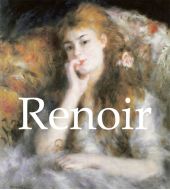 Pierre-Auguste Renoir was born in Limoges on 25 February 1841. In 1854, the boy’s parents took him from school and found a place for him in the Lévy brothers’ workshop, where he was to learn to paint porcelain. Renoir’s younger brother Edmond had this to say this about the move: “From what he drew in charcoal on the walls, they concluded that he had the ability for an artist’s profession. That was how our parents came to put him to learn the trade of porcelain painter.” One of the Lévys’ workers, Emile Laporte, painted in oils in his spare time. He suggested Renoir makes use of his canvases and paints. This offer resulted in the appearance of the first painting by the future impressionist. In 1862 Renoir passed the examinations and entered the Ecole des Beaux-Arts and, simultaneously, one of the independent studios, where instruction was given by Charles Gleyre, a professor at the Ecole des Beaux-Arts. The second, perhaps even the first, great event of this period in Renoir’s life was his meeting, in Gleyre’s studio, with those who were to become his best friends for the rest of his days and who shared his ideas about art. Much later, when he was already a mature artist, Renoir had the opportunity to see works by Rembrandt in Holland, Velázquez, Goya and El Greco in Spain, and Raphael in Italy. However, Renoir lived and breathed ideas of a new kind of art. He always found his inspirations in the Louvre. “For me, in the Gleyre era, the Louvre was Delacroix,” he confessed to Jean. For Renoir, the First Impressionist Exhibition was the moment his vision of art and the artist was affirmed. This period in Renoir’s life was marked by one further significant event. In 1873 he moved to Montmartre, to the house at 35 Rue Saint-Georges, where he lived until 1884. Renoir remained loyal to Montmartre for the rest of his life. Here he found his “plein-air” subjects, his models and even his family. It was in the 1870s that Renoir acquired the friends who would stay with him for the remainder of his days. One of them was the art-dealer Paul Durand-Ruel, who began to buy his paintings in 1872. In summer, Renoir continued to paint a great deal outdoors together with Monet. He would travel out to Argenteuil, where Monet rented a house for his family. Edouard Manet sometimes worked with them too. In 1877, at the Third Impressionist Exhibition, Renoir presented a panorama of over twenty paintings. They included landscapes created in Paris, on the Seine, outside the city and in Claude Monet’s garden; studies of women’s heads and bouquets of flowers; portraits of Sisley, the actress Jeanne Samary, the writer Alphonse Daudet and the politician Spuller; and also The Swing and The Ball at the Moulin de la Galette. Finally, in the 1880s Renoir hit a “winning streak”. He was commissioned by rich financiers, the owner of the Grands Magasins du Louvre and Senator Goujon. His paintings were exhibited in London and Brussels, as well as at the Seventh International Exhibition held at Georges Petit’s in Paris in 1886. In a letter to Durand-Ruel, then in New York, Renoir wrote: “The Petit exhibition has opened and is not doing badly, so they say. After all, it’s so hard to judge about yourself. I think I have managed to take a step forward towards public respect. A small step, but even that is something.” ... Далее
Pierre-Auguste Renoir was born in Limoges on 25 February 1841. In 1854, the boy’s parents took him from school and found a place for him in the Lévy brothers’ workshop, where he was to learn to paint porcelain. Renoir’s younger brother Edmond had this to say this about the move: “From what he drew in charcoal on the walls, they concluded that he had the ability for an artist’s profession. That was how our parents came to put him to learn the trade of porcelain painter.” One of the Lévys’ workers, Emile Laporte, painted in oils in his spare time. He suggested Renoir makes use of his canvases and paints. This offer resulted in the appearance of the first painting by the future impressionist. In 1862 Renoir passed the examinations and entered the Ecole des Beaux-Arts and, simultaneously, one of the independent studios, where instruction was given by Charles Gleyre, a professor at the Ecole des Beaux-Arts. The second, perhaps even the first, great event of this period in Renoir’s life was his meeting, in Gleyre’s studio, with those who were to become his best friends for the rest of his days and who shared his ideas about art. Much later, when he was already a mature artist, Renoir had the opportunity to see works by Rembrandt in Holland, Velázquez, Goya and El Greco in Spain, and Raphael in Italy. However, Renoir lived and breathed ideas of a new kind of art. He always found his inspirations in the Louvre. “For me, in the Gleyre era, the Louvre was Delacroix,” he confessed to Jean. For Renoir, the First Impressionist Exhibition was the moment his vision of art and the artist was affirmed. This period in Renoir’s life was marked by one further significant event. In 1873 he moved to Montmartre, to the house at 35 Rue Saint-Georges, where he lived until 1884. Renoir remained loyal to Montmartre for the rest of his life. Here he found his “plein-air” subjects, his models and even his family. It was in the 1870s that Renoir acquired the friends who would stay with him for the remainder of his days. One of them was the art-dealer Paul Durand-Ruel, who began to buy his paintings in 1872. In summer, Renoir continued to paint a great deal outdoors together with Monet. He would travel out to Argenteuil, where Monet rented a house for his family. Edouard Manet sometimes worked with them too. In 1877, at the Third Impressionist Exhibition, Renoir presented a panorama of over twenty paintings. They included landscapes created in Paris, on the Seine, outside the city and in Claude Monet’s garden; studies of women’s heads and bouquets of flowers; portraits of Sisley, the actress Jeanne Samary, the writer Alphonse Daudet and the politician Spuller; and also The Swing and The Ball at the Moulin de la Galette. Finally, in the 1880s Renoir hit a “winning streak”. He was commissioned by rich financiers, the owner of the Grands Magasins du Louvre and Senator Goujon. His paintings were exhibited in London and Brussels, as well as at the Seventh International Exhibition held at Georges Petit’s in Paris in 1886. In a letter to Durand-Ruel, then in New York, Renoir wrote: “The Petit exhibition has opened and is not doing badly, so they say. After all, it’s so hard to judge about yourself. I think I have managed to take a step forward towards public respect. A small step, but even that is something.” ... Далее -
50.
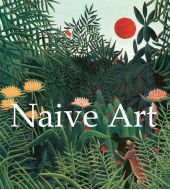 Until the end of the 19th century Naïve Art, created by untrained artists and characterised by spontaneity and simplicity, enjoyed little recognition from professional artists and art critics. Naïve painting is often distinguished by its clarity of line, vivacity and joyful colours, as well as by its rather clean-cut, simple shapes, as represented by French artists such as Henri Rousseau, Séraphine de Senlis, André Bauchant and Camille Bombois. However, this movement has also found adherents elsewhere, including Joan Miró (who was influenced by some of its qualities), Guido Vedovato, Niko Pirosmani, and Ivan Generalic. ... Далее
Until the end of the 19th century Naïve Art, created by untrained artists and characterised by spontaneity and simplicity, enjoyed little recognition from professional artists and art critics. Naïve painting is often distinguished by its clarity of line, vivacity and joyful colours, as well as by its rather clean-cut, simple shapes, as represented by French artists such as Henri Rousseau, Séraphine de Senlis, André Bauchant and Camille Bombois. However, this movement has also found adherents elsewhere, including Joan Miró (who was influenced by some of its qualities), Guido Vedovato, Niko Pirosmani, and Ivan Generalic. ... Далее -
51.
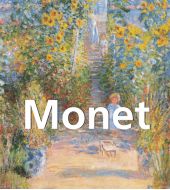 For Claude Monet the designation ‘impressionist’ always remained a source of pride. In spite of all the things critics have written about his work, Monet continued to be a true impressionist to the end of his very long life. He was so by deep conviction, and for his Impressionism he may have sacrificed many other opportunities that his enormous talent held out to him. Monet did not paint classical compositions with figures, and he did not become a portraitist, although his professional training included those skills. He chose a single genre for himself, landscape painting, and in that he achieved a degree of perfection none of his contemporaries managed to attain. Yet the little boy began by drawing caricatures. Boudin advised Monet to stop doing caricatures and to take up landscapes instead. The sea, the sky, animals, people, and trees are beautiful in the exact state in which nature created them – surrounded by air and light. Indeed, it was Boudin who passed on to Monet his conviction of the importance of working in the open air, which Monet would in turn transmit to his impressionist friends. Monet did not want to enrol at the Ecole des Beaux-Arts. He chose to attend a private school, L’Académie Suisse, established by an ex-model on the Quai d’Orfèvres near the Pont Saint-Michel. One could draw and paint from a live model there for a modest fee. This was where Monet met the future impressionist Camille Pissarro. Later in Gleyre’s studio, Monet met Auguste Renoir Alfred Sisley, and Frédéric Bazille. Monet considered it very important that Boudin be introduced to his new friends. He also told his friends of another painter he had found in Normandy. This was the remarkable Dutchman Jongkind. His landscapes were saturated with colour, and their sincerity, at times even their naïveté, was combined with subtle observation of the Normandy shore’s variable nature. At this time Monet’s landscapes were not yet characterized by great richness of colour. Rather, they recalled the tonalities of paintings by the Barbizon artists, and Boudin’s seascapes. He composed a range of colour based on yellow-brown or blue-grey. At the Third Impressionist Exhibition in 1877 Monet presented a series of paintings for the first time: seven views of the Saint-Lazare train station. He selected them from among twelve he had painted at the station. This motif in Monet’s work is in line not only with Manet’s Chemin de fer (The Railway) and with his own landscapes featuring trains and stations at Argenteuil, but also with a trend that surfaced after the railways first began to appear. In 1883, Monet had bought a house in the village of Giverny, near the little town of Vernon. At Giverny, series painting became one of his chief working procedures. Meadows became his permanent workplace. When a journalist, who had come from Vétheuil to interview Monet, asked him where his studio was, the painter answered, “My studio! I’ve never had a studio, and I can’t see why one would lock oneself up in a room. To draw, yes – to paint, no”. Then, broadly gesturing towards the Seine, the hills, and the silhouette of the little town, he declared, “There’s my real studio.”Monet began to go to London in the last decade of the nineteenth century. He began all his London paintings working directly from nature, but completed many of them afterwards, at Giverny. The series formed an indivisible whole, and the painter had to work on all his canvases at one time. A friend of Monet’s, the writer Octave Mirbeau, wrote that he had accomplished a miracle. With the help of colours he had succeeded in recreating on the canvas something almost impossible to capture: he was reproducing sunlight, enriching it with an infinite number of reflections. Alone among the impressionists, Claude Monet took an almost scientific study of the possibilities of colour to its limits; it is unlikely that one could have gone any further in that direction. ... Далее
For Claude Monet the designation ‘impressionist’ always remained a source of pride. In spite of all the things critics have written about his work, Monet continued to be a true impressionist to the end of his very long life. He was so by deep conviction, and for his Impressionism he may have sacrificed many other opportunities that his enormous talent held out to him. Monet did not paint classical compositions with figures, and he did not become a portraitist, although his professional training included those skills. He chose a single genre for himself, landscape painting, and in that he achieved a degree of perfection none of his contemporaries managed to attain. Yet the little boy began by drawing caricatures. Boudin advised Monet to stop doing caricatures and to take up landscapes instead. The sea, the sky, animals, people, and trees are beautiful in the exact state in which nature created them – surrounded by air and light. Indeed, it was Boudin who passed on to Monet his conviction of the importance of working in the open air, which Monet would in turn transmit to his impressionist friends. Monet did not want to enrol at the Ecole des Beaux-Arts. He chose to attend a private school, L’Académie Suisse, established by an ex-model on the Quai d’Orfèvres near the Pont Saint-Michel. One could draw and paint from a live model there for a modest fee. This was where Monet met the future impressionist Camille Pissarro. Later in Gleyre’s studio, Monet met Auguste Renoir Alfred Sisley, and Frédéric Bazille. Monet considered it very important that Boudin be introduced to his new friends. He also told his friends of another painter he had found in Normandy. This was the remarkable Dutchman Jongkind. His landscapes were saturated with colour, and their sincerity, at times even their naïveté, was combined with subtle observation of the Normandy shore’s variable nature. At this time Monet’s landscapes were not yet characterized by great richness of colour. Rather, they recalled the tonalities of paintings by the Barbizon artists, and Boudin’s seascapes. He composed a range of colour based on yellow-brown or blue-grey. At the Third Impressionist Exhibition in 1877 Monet presented a series of paintings for the first time: seven views of the Saint-Lazare train station. He selected them from among twelve he had painted at the station. This motif in Monet’s work is in line not only with Manet’s Chemin de fer (The Railway) and with his own landscapes featuring trains and stations at Argenteuil, but also with a trend that surfaced after the railways first began to appear. In 1883, Monet had bought a house in the village of Giverny, near the little town of Vernon. At Giverny, series painting became one of his chief working procedures. Meadows became his permanent workplace. When a journalist, who had come from Vétheuil to interview Monet, asked him where his studio was, the painter answered, “My studio! I’ve never had a studio, and I can’t see why one would lock oneself up in a room. To draw, yes – to paint, no”. Then, broadly gesturing towards the Seine, the hills, and the silhouette of the little town, he declared, “There’s my real studio.”Monet began to go to London in the last decade of the nineteenth century. He began all his London paintings working directly from nature, but completed many of them afterwards, at Giverny. The series formed an indivisible whole, and the painter had to work on all his canvases at one time. A friend of Monet’s, the writer Octave Mirbeau, wrote that he had accomplished a miracle. With the help of colours he had succeeded in recreating on the canvas something almost impossible to capture: he was reproducing sunlight, enriching it with an infinite number of reflections. Alone among the impressionists, Claude Monet took an almost scientific study of the possibilities of colour to its limits; it is unlikely that one could have gone any further in that direction. ... Далее -
52.
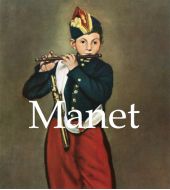 Manet is one of the most famous artists from the second half of the nineteenth century linked to the impressionists, although he was not really one of them. He had great influence on French painting partly because of the choice he made for his subjects from everyday life, the use of pure colours, and his fast and free technique. He made, in his own work, the transition between Courbet’s Realism and the work of the impressionists. Born a high bourgeois, he chose to become a painter after failing the entry to the Marine School. He studied with Thomas Couture, an Academic painter, but it was thanks to the numerous travels he made around Europe from 1852 that he started to find out what would become his own style. His first paintings were mostly portraits and genre scenes, inspired by his love for Spanish masters like Velázquez and Goya. In 1863 he presented his masterpiece Luncheon on the Grass at the Salon des Refusés. His work started a fight between the defenders of Academic art and the young “refusés” artists. Manet became the leader of this new generation of artists. From 1864, the official Salon accepted his paintings, still provoking loud protests over works such as Olympia in 1865. In 1866, the writer Zolá wrote an article defending Manet’s work. At that time, Manet was friends with all the future great impressionist masters: Edgar Degas, Claude Monet, Auguste Renoir, Alfred Sisley, Camille Pissarro and Paul Cézanne, and he influenced their work, even though he cannot strictly be counted as one of them. In 1874 indeed, he refused to present his paintings in the First Impressionist Exhibition. His last appearance in the official Salon was in 1882 with A Bar at the Folies-Bergère, one of his most famous works. Suffering from gangrene during the year 1883, he painted flower still-lifes until he became too weak to work. He died leaving behind a great number of drawings and paintings. ... Далее
Manet is one of the most famous artists from the second half of the nineteenth century linked to the impressionists, although he was not really one of them. He had great influence on French painting partly because of the choice he made for his subjects from everyday life, the use of pure colours, and his fast and free technique. He made, in his own work, the transition between Courbet’s Realism and the work of the impressionists. Born a high bourgeois, he chose to become a painter after failing the entry to the Marine School. He studied with Thomas Couture, an Academic painter, but it was thanks to the numerous travels he made around Europe from 1852 that he started to find out what would become his own style. His first paintings were mostly portraits and genre scenes, inspired by his love for Spanish masters like Velázquez and Goya. In 1863 he presented his masterpiece Luncheon on the Grass at the Salon des Refusés. His work started a fight between the defenders of Academic art and the young “refusés” artists. Manet became the leader of this new generation of artists. From 1864, the official Salon accepted his paintings, still provoking loud protests over works such as Olympia in 1865. In 1866, the writer Zolá wrote an article defending Manet’s work. At that time, Manet was friends with all the future great impressionist masters: Edgar Degas, Claude Monet, Auguste Renoir, Alfred Sisley, Camille Pissarro and Paul Cézanne, and he influenced their work, even though he cannot strictly be counted as one of them. In 1874 indeed, he refused to present his paintings in the First Impressionist Exhibition. His last appearance in the official Salon was in 1882 with A Bar at the Folies-Bergère, one of his most famous works. Suffering from gangrene during the year 1883, he painted flower still-lifes until he became too weak to work. He died leaving behind a great number of drawings and paintings. ... Далее -
53.
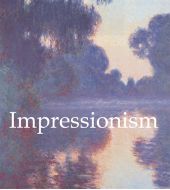 Impressionism has always been one of the public’s favourite styles of art and Impressionist works continue to enchant beholders with their amazing play of colours and forms. This book offers a well-chosen selection of the most impressive works of artists such as Degas, Monet, Pissarro, Renoir and Sisley. Mega Square Impressionism pays tribute to the subject’s popularity. ... Далее
Impressionism has always been one of the public’s favourite styles of art and Impressionist works continue to enchant beholders with their amazing play of colours and forms. This book offers a well-chosen selection of the most impressive works of artists such as Degas, Monet, Pissarro, Renoir and Sisley. Mega Square Impressionism pays tribute to the subject’s popularity. ... Далее -
54.
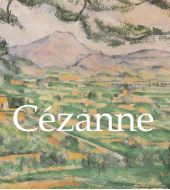 Since his death 200 years ago, Cézanne has become the most famous painter of the nineteenth century. He was born in Aix-en-Provence in 1839 and the happiest period of his life was his early youth in Provence, in company with Emile Zolá, another Italian. Following Zolá’s example, Cézanne went to Paris in his twenty-first year. During the Franco-Prussian war he deserted the military, dividing his time between open-air painting and the studio. He said to Vollard, an art dealer, “I’m only a painter. Parisian wit gives me a pain. Painting nudes on the banks of the Arc [a river near Aix] is all I could ask for.” Encouraged by Renoir, one of the first to appreciate him, he exhibited with the impressionists in 1874 and in 1877. He was received with derision, which deeply hurt him. Cézanne’s ambition, in his own words, was “to make out of Impressionism something as solid and durable as the paintings of the museums.” His aim was to achieve the monumental in a modern language of glowing, vibrating tones. Cézanne wanted to retain the natural colour of an object and to harmonise it with the various influences of light and shade trying to destroy it; to work out a scale of tones expressing the mass and character of the form. Cézanne loved to paint fruit because it afforded him obedient models and he was a slow worker. He did not intend to simply copy an apple. He kept the dominant colour and the character of the fruit, but heightened the emotional appeal of the form by a scheme of rich and concordant tones. In his paintings of still-life he is a master. His fruit and vegetable compositions are truly dramatic; they have the weight, the nobility, the style of immortal forms. No other painter ever brought to a red apple a conviction so heated, sympathy so genuinely spiritual, or an observation so protracted. No other painter of equal ability ever reserved for still-life his strongest impulses. Cézanne restored to painting the pre-eminence of knowledge, the most essential quality to all creative effort. The death of his father in 1886 made him a rich man, but he made no change in his abstemious mode of living. Soon afterwards, Cézanne retired permanently to his estate in Provence. He was probably the loneliest of painters of his day. At times a curious melancholy attacked him, a black hopelessness. He grew more savage and exacting, destroying canvases, throwing them out of his studio into the trees, abandoning them in the fields, and giving them to his son to cut into puzzles, or to the people of Aix. At the beginning of the century, when Vollard arrived in Provence with intentions of buying on speculation all the Cézannes he could get hold of, the peasantry, hearing that a fool from Paris was actually handing out money for old linen, produced from barns a considerable number of still-lifes and landscapes. The old master of Aix was overcome with joy, but recognition came too late. In 1906 he died from a fever contracted while painting in a downpour of rain. ... Далее
Since his death 200 years ago, Cézanne has become the most famous painter of the nineteenth century. He was born in Aix-en-Provence in 1839 and the happiest period of his life was his early youth in Provence, in company with Emile Zolá, another Italian. Following Zolá’s example, Cézanne went to Paris in his twenty-first year. During the Franco-Prussian war he deserted the military, dividing his time between open-air painting and the studio. He said to Vollard, an art dealer, “I’m only a painter. Parisian wit gives me a pain. Painting nudes on the banks of the Arc [a river near Aix] is all I could ask for.” Encouraged by Renoir, one of the first to appreciate him, he exhibited with the impressionists in 1874 and in 1877. He was received with derision, which deeply hurt him. Cézanne’s ambition, in his own words, was “to make out of Impressionism something as solid and durable as the paintings of the museums.” His aim was to achieve the monumental in a modern language of glowing, vibrating tones. Cézanne wanted to retain the natural colour of an object and to harmonise it with the various influences of light and shade trying to destroy it; to work out a scale of tones expressing the mass and character of the form. Cézanne loved to paint fruit because it afforded him obedient models and he was a slow worker. He did not intend to simply copy an apple. He kept the dominant colour and the character of the fruit, but heightened the emotional appeal of the form by a scheme of rich and concordant tones. In his paintings of still-life he is a master. His fruit and vegetable compositions are truly dramatic; they have the weight, the nobility, the style of immortal forms. No other painter ever brought to a red apple a conviction so heated, sympathy so genuinely spiritual, or an observation so protracted. No other painter of equal ability ever reserved for still-life his strongest impulses. Cézanne restored to painting the pre-eminence of knowledge, the most essential quality to all creative effort. The death of his father in 1886 made him a rich man, but he made no change in his abstemious mode of living. Soon afterwards, Cézanne retired permanently to his estate in Provence. He was probably the loneliest of painters of his day. At times a curious melancholy attacked him, a black hopelessness. He grew more savage and exacting, destroying canvases, throwing them out of his studio into the trees, abandoning them in the fields, and giving them to his son to cut into puzzles, or to the people of Aix. At the beginning of the century, when Vollard arrived in Provence with intentions of buying on speculation all the Cézannes he could get hold of, the peasantry, hearing that a fool from Paris was actually handing out money for old linen, produced from barns a considerable number of still-lifes and landscapes. The old master of Aix was overcome with joy, but recognition came too late. In 1906 he died from a fever contracted while painting in a downpour of rain. ... Далее -
55.
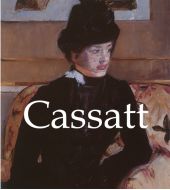 Mary was born in Pittsburgh. Her father was a banker of liberal educational ideas and the entire family appears to have been sympathetic to French culture. Mary was no more than five or six years old when she first saw Paris, and she was still in her teens when she decided to become a painter. She went to Italy, on to Antwerp, then to Rome, andfinally returned to Paris where in 1874, she permanently settled. In 1872, Cassatt sent her first work to the Salon, others followed in the succeeding years until 1875, when a portrait of her sister was rejected. She divined that the jury had not been satisfied with the background, so she re-painted it several times until, in the next Salon, the same portrait was accepted. At this moment Degas asked her to exhibit with him and his friends, the Impressionist Group, then rising into view, and she accepted with joy. She admired Manet, Courbet and Degas, and hated conventional art. Cassatt’s biographer stressed the intellectuality and sentiment apparent in her work, as well as the emotion and distinction with which she has painted her favourite models: babies and their mothers. He then speaks of her predominant interest in draughtsmanship and her gift for linear pattern, a gift greatly strengthened by her study of Japanese art and her emulation of its style in the colour prints she made. While her style may partake of the style of others, her draughtsmanship, her composition, her light, and her colour are, indeed, her own. There are qualities of tenderness in her work which could have been put there, perhaps, only by a woman. The qualities which make her work of lasting value are those put there by an outstanding painter. ... Далее
Mary was born in Pittsburgh. Her father was a banker of liberal educational ideas and the entire family appears to have been sympathetic to French culture. Mary was no more than five or six years old when she first saw Paris, and she was still in her teens when she decided to become a painter. She went to Italy, on to Antwerp, then to Rome, andfinally returned to Paris where in 1874, she permanently settled. In 1872, Cassatt sent her first work to the Salon, others followed in the succeeding years until 1875, when a portrait of her sister was rejected. She divined that the jury had not been satisfied with the background, so she re-painted it several times until, in the next Salon, the same portrait was accepted. At this moment Degas asked her to exhibit with him and his friends, the Impressionist Group, then rising into view, and she accepted with joy. She admired Manet, Courbet and Degas, and hated conventional art. Cassatt’s biographer stressed the intellectuality and sentiment apparent in her work, as well as the emotion and distinction with which she has painted her favourite models: babies and their mothers. He then speaks of her predominant interest in draughtsmanship and her gift for linear pattern, a gift greatly strengthened by her study of Japanese art and her emulation of its style in the colour prints she made. While her style may partake of the style of others, her draughtsmanship, her composition, her light, and her colour are, indeed, her own. There are qualities of tenderness in her work which could have been put there, perhaps, only by a woman. The qualities which make her work of lasting value are those put there by an outstanding painter. ... Далее -
56.
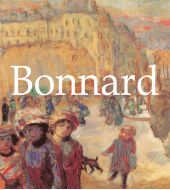 Pierre Bonnard was the leader of a group of Post-Impressionist painters who called themselves the Nabis, from the Hebrew word meaning “prophet”. Bonnard, Vuillard, Roussel and Denis, the most distinguished of the Nabis, revolutionised decorative painting during one of the richest periods in the history of French painting. Bonnard’s works are striking for their strong colours and candidness. ... Далее
Pierre Bonnard was the leader of a group of Post-Impressionist painters who called themselves the Nabis, from the Hebrew word meaning “prophet”. Bonnard, Vuillard, Roussel and Denis, the most distinguished of the Nabis, revolutionised decorative painting during one of the richest periods in the history of French painting. Bonnard’s works are striking for their strong colours and candidness. ... Далее -
57.
 For Claude Monet the designation ‘impressionist’ always remained a source of pride. In spite of all the things critics have written about his work, Monet continued to be a true impressionist to the end of his very long life. He was so by deep conviction, and for his Impressionism he may have sacrificed many other opportunities that his enormous talent held out to him. Monet did not paint classical compositions with figures, and he did not become a portraitist, although his professional training included those skills. He chose a single genre for himself, landscape painting, and in that he achieved a degree of perfection none of his contemporaries managed to attain. Yet the little boy began by drawing caricatures. Boudin advised Monet to stop doing caricatures and to take up landscapes instead. The sea, the sky, animals, people, and trees are beautiful in the exact state in which nature created them – surrounded by air and light. Indeed, it was Boudin who passed on to Monet his conviction of the importance of working in the open air, which Monet would in turn transmit to his impressionist friends. Monet did not want to enrol at the Ecole des Beaux-Arts. He chose to attend a private school, L’Académie Suisse, established by an ex-model on the Quai d’Orfèvres near the Pont Saint-Michel. One could draw and paint from a live model there for a modest fee. This was where Monet met the future impressionist Camille Pissarro. Later in Gleyre’s studio, Monet met Auguste Renoir Alfred Sisley, and Frédéric Bazille. Monet considered it very important that Boudin be introduced to his new friends. He also told his friends of another painter he had found in Normandy. This was the remarkable Dutchman Jongkind. His landscapes were saturated with colour, and their sincerity, at times even their naïveté, was combined with subtle observation of the Normandy shore’s variable nature. At this time Monet’s landscapes were not yet characterized by great richness of colour. Rather, they recalled the tonalities of paintings by the Barbizon artists, and Boudin’s seascapes. He composed a range of colour based on yellow-brown or blue-grey. At the Third Impressionist Exhibition in 1877 Monet presented a series of paintings for the first time: seven views of the Saint-Lazare train station. He selected them from among twelve he had painted at the station. This motif in Monet’s work is in line not only with Manet’s Chemin de fer (The Railway) and with his own landscapes featuring trains and stations at Argenteuil, but also with a trend that surfaced after the railways first began to appear. In 1883, Monet had bought a house in the village of Giverny, near the little town of Vernon. At Giverny, series painting became one of his chief working procedures. Meadows became his permanent workplace. When a journalist, who had come from Vétheuil to interview Monet, asked him where his studio was, the painter answered, “My studio! I’ve never had a studio, and I can’t see why one would lock oneself up in a room. To draw, yes – to paint, no”. Then, broadly gesturing towards the Seine, the hills, and the silhouette of the little town, he declared, “There’s my real studio.”Monet began to go to London in the last decade of the nineteenth century. He began all his London paintings working directly from nature, but completed many of them afterwards, at Giverny. The series formed an indivisible whole, and the painter had to work on all his canvases at one time. A friend of Monet’s, the writer Octave Mirbeau, wrote that he had accomplished a miracle. With the help of colours he had succeeded in recreating on the canvas something almost impossible to capture: he was reproducing sunlight, enriching it with an infinite number of reflections. Alone among the impressionists, Claude Monet took an almost scientific study of the possibilities of colour to its limits; it is unlikely that one could have gone any further in that direction. ... Далее
For Claude Monet the designation ‘impressionist’ always remained a source of pride. In spite of all the things critics have written about his work, Monet continued to be a true impressionist to the end of his very long life. He was so by deep conviction, and for his Impressionism he may have sacrificed many other opportunities that his enormous talent held out to him. Monet did not paint classical compositions with figures, and he did not become a portraitist, although his professional training included those skills. He chose a single genre for himself, landscape painting, and in that he achieved a degree of perfection none of his contemporaries managed to attain. Yet the little boy began by drawing caricatures. Boudin advised Monet to stop doing caricatures and to take up landscapes instead. The sea, the sky, animals, people, and trees are beautiful in the exact state in which nature created them – surrounded by air and light. Indeed, it was Boudin who passed on to Monet his conviction of the importance of working in the open air, which Monet would in turn transmit to his impressionist friends. Monet did not want to enrol at the Ecole des Beaux-Arts. He chose to attend a private school, L’Académie Suisse, established by an ex-model on the Quai d’Orfèvres near the Pont Saint-Michel. One could draw and paint from a live model there for a modest fee. This was where Monet met the future impressionist Camille Pissarro. Later in Gleyre’s studio, Monet met Auguste Renoir Alfred Sisley, and Frédéric Bazille. Monet considered it very important that Boudin be introduced to his new friends. He also told his friends of another painter he had found in Normandy. This was the remarkable Dutchman Jongkind. His landscapes were saturated with colour, and their sincerity, at times even their naïveté, was combined with subtle observation of the Normandy shore’s variable nature. At this time Monet’s landscapes were not yet characterized by great richness of colour. Rather, they recalled the tonalities of paintings by the Barbizon artists, and Boudin’s seascapes. He composed a range of colour based on yellow-brown or blue-grey. At the Third Impressionist Exhibition in 1877 Monet presented a series of paintings for the first time: seven views of the Saint-Lazare train station. He selected them from among twelve he had painted at the station. This motif in Monet’s work is in line not only with Manet’s Chemin de fer (The Railway) and with his own landscapes featuring trains and stations at Argenteuil, but also with a trend that surfaced after the railways first began to appear. In 1883, Monet had bought a house in the village of Giverny, near the little town of Vernon. At Giverny, series painting became one of his chief working procedures. Meadows became his permanent workplace. When a journalist, who had come from Vétheuil to interview Monet, asked him where his studio was, the painter answered, “My studio! I’ve never had a studio, and I can’t see why one would lock oneself up in a room. To draw, yes – to paint, no”. Then, broadly gesturing towards the Seine, the hills, and the silhouette of the little town, he declared, “There’s my real studio.”Monet began to go to London in the last decade of the nineteenth century. He began all his London paintings working directly from nature, but completed many of them afterwards, at Giverny. The series formed an indivisible whole, and the painter had to work on all his canvases at one time. A friend of Monet’s, the writer Octave Mirbeau, wrote that he had accomplished a miracle. With the help of colours he had succeeded in recreating on the canvas something almost impossible to capture: he was reproducing sunlight, enriching it with an infinite number of reflections. Alone among the impressionists, Claude Monet took an almost scientific study of the possibilities of colour to its limits; it is unlikely that one could have gone any further in that direction. ... Далее -
58.
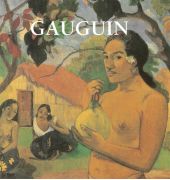 Paul Gauguin was first a sailor, then a successful stockbroker in Paris. In 1874 he began to paint at weekends as a Sunday painter. Nine years later, after a stock-market crash, he felt confident of his ability to earn a living for his family by painting and he resigned his position and took up the painter’s brush full time. Following the lead of Cézanne, Gauguin painted still-lifes from the very beginning of his artistic career. He even owned a still-life by Cézanne, which is shown in Gauguin’s painting Portrait of Marie Lagadu. The year 1891 was crucial for Gauguin. In that year he left France for Tahiti, where he stayed till 1893. This stay in Tahiti determined his future life and career, for in 1895, after a sojourn in France, he returned there for good. In Tahiti, Gauguin discovered primitive art, with its flat forms and violent colours, belonging to an untamed nature. With absolute sincerity, he transferred them onto his canvas. His paintings from then on reflected this style: a radical simplification of drawing; brilliant, pure, bright colours; an ornamental type composition; and a deliberate flatness of planes. Gauguin termed this style “synthetic symbolism”. ... Далее
Paul Gauguin was first a sailor, then a successful stockbroker in Paris. In 1874 he began to paint at weekends as a Sunday painter. Nine years later, after a stock-market crash, he felt confident of his ability to earn a living for his family by painting and he resigned his position and took up the painter’s brush full time. Following the lead of Cézanne, Gauguin painted still-lifes from the very beginning of his artistic career. He even owned a still-life by Cézanne, which is shown in Gauguin’s painting Portrait of Marie Lagadu. The year 1891 was crucial for Gauguin. In that year he left France for Tahiti, where he stayed till 1893. This stay in Tahiti determined his future life and career, for in 1895, after a sojourn in France, he returned there for good. In Tahiti, Gauguin discovered primitive art, with its flat forms and violent colours, belonging to an untamed nature. With absolute sincerity, he transferred them onto his canvas. His paintings from then on reflected this style: a radical simplification of drawing; brilliant, pure, bright colours; an ornamental type composition; and a deliberate flatness of planes. Gauguin termed this style “synthetic symbolism”. ... Далее -
59.
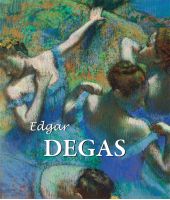 Degas was closest to Renoir in the impressionist’s circle, for both favoured the animated Parisian life of their day as a motif in their paintings. Degas did not attend Gleyre’s studio; most likely he first met the future impressionists at the Café Guerbois. He started his apprenticeship in 1853 at the studio of Louis-Ernest Barrias and, beginning in 1854, studied under Louis Lamothe, who revered Ingres above all others, and transmitted his adoration for this master to Edgar Degas. Starting in 1854 Degas travelled frequently to Italy: first to Naples, where he made the acquaintance of his numerous cousins, and then to Rome and Florence, where he copied tirelessly from the Old Masters. His drawings and sketches already revealed very clear preferences: Raphael, Leonardo da Vinci, Michelangelo, and Mantegna, but also Benozzo Gozzoli, Ghirlandaio, Titian, Fra Angelico, Uccello, and Botticelli. During the 1860s and 1870s he became a painter of racecourses, horses and jockeys. His fabulous painter’s memory retained the particularities of movement of horses wherever he saw them. After his first rather complex compositions depicting racecourses, Degas learned the art of translating the nobility and elegance of horses, their nervous movements, and the formal beauty of their musculature. Around the middle of the 1860s Degas made yet another discovery. In 1866 he painted his first composition with ballet as a subject, Mademoiselle Fiocre dans le ballet de la Source (Mademoiselle Fiocre in the Ballet ‘The Spring’) (New York, Brooklyn Museum). Degas had always been a devotee of the theatre, but from now on it would become more and more the focus of his art. Degas’ first painting devoted solely to the ballet was Le Foyer de la danse à l’Opéra de la rue Le Peletier (The Dancing Anteroom at the Opera on Rue Le Peletier) (Paris, Musée d’Orsay). In a carefully constructed composition, with groups of figures balancing one another to the left and the right, each ballet dancer is involved in her own activity, each one is moving in a separate manner from the others. Extended observation and an immense number of sketches were essential to executing such a task. This is why Degas moved from the theatre on to the rehearsal halls, where the dancers practised and took their lessons. This was how Degas arrived at the second sphere of that immediate, everyday life that was to interest him. The ballet would remain his passion until the end of his days. ... Далее
Degas was closest to Renoir in the impressionist’s circle, for both favoured the animated Parisian life of their day as a motif in their paintings. Degas did not attend Gleyre’s studio; most likely he first met the future impressionists at the Café Guerbois. He started his apprenticeship in 1853 at the studio of Louis-Ernest Barrias and, beginning in 1854, studied under Louis Lamothe, who revered Ingres above all others, and transmitted his adoration for this master to Edgar Degas. Starting in 1854 Degas travelled frequently to Italy: first to Naples, where he made the acquaintance of his numerous cousins, and then to Rome and Florence, where he copied tirelessly from the Old Masters. His drawings and sketches already revealed very clear preferences: Raphael, Leonardo da Vinci, Michelangelo, and Mantegna, but also Benozzo Gozzoli, Ghirlandaio, Titian, Fra Angelico, Uccello, and Botticelli. During the 1860s and 1870s he became a painter of racecourses, horses and jockeys. His fabulous painter’s memory retained the particularities of movement of horses wherever he saw them. After his first rather complex compositions depicting racecourses, Degas learned the art of translating the nobility and elegance of horses, their nervous movements, and the formal beauty of their musculature. Around the middle of the 1860s Degas made yet another discovery. In 1866 he painted his first composition with ballet as a subject, Mademoiselle Fiocre dans le ballet de la Source (Mademoiselle Fiocre in the Ballet ‘The Spring’) (New York, Brooklyn Museum). Degas had always been a devotee of the theatre, but from now on it would become more and more the focus of his art. Degas’ first painting devoted solely to the ballet was Le Foyer de la danse à l’Opéra de la rue Le Peletier (The Dancing Anteroom at the Opera on Rue Le Peletier) (Paris, Musée d’Orsay). In a carefully constructed composition, with groups of figures balancing one another to the left and the right, each ballet dancer is involved in her own activity, each one is moving in a separate manner from the others. Extended observation and an immense number of sketches were essential to executing such a task. This is why Degas moved from the theatre on to the rehearsal halls, where the dancers practised and took their lessons. This was how Degas arrived at the second sphere of that immediate, everyday life that was to interest him. The ballet would remain his passion until the end of his days. ... Далее -
60.
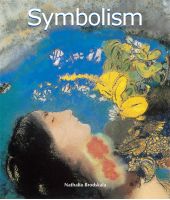 Symbolism appeared in France and Europe between the 1880s and the beginning of the 20th century. The Symbolists, fascinated with ancient mythology, attempted to escape the reign of rational thought imposed by science. They wished to transcend the world of the visible and the rational in order to attain the world of pure thought, constantly flirting with the limits of the unconscious. The French Gustave Moreau, Odilon Redon, the Belgians Fernand Khnopff and Félicien Rops, the English Edward Burne-Jones and Dante Gabriel Rossetti, and the Dutch Jan Toorop are the most representative artists of the movement. ... Далее
Symbolism appeared in France and Europe between the 1880s and the beginning of the 20th century. The Symbolists, fascinated with ancient mythology, attempted to escape the reign of rational thought imposed by science. They wished to transcend the world of the visible and the rational in order to attain the world of pure thought, constantly flirting with the limits of the unconscious. The French Gustave Moreau, Odilon Redon, the Belgians Fernand Khnopff and Félicien Rops, the English Edward Burne-Jones and Dante Gabriel Rossetti, and the Dutch Jan Toorop are the most representative artists of the movement. ... Далее -
61.
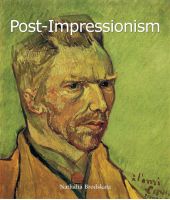 Whilst Impressionism marked the first steps toward modern painting by revolutionising an artistic medium stifled by academic conventions, Post-Impressionism, even more revolutionary, completely liberated colour and opened it to new, unknown horizons. Anchored in his epoch, relying on the new chromatic studies of Michel Eugène Chevreul, Georges Seurat transcribed the chemist’s theory of colours into tiny points that created an entire image. With his heavy strokes, Van Gogh illustrated the midday sun, whilst Cézanne renounced perspective. Rich in its variety and in the singularity of its artists, Post-Impressionism was a passage taken by all the well-known figures of 20th century painting – it is here presented, for the great pleasure of the reader, by Nathalia Brodskaïa. ... Далее
Whilst Impressionism marked the first steps toward modern painting by revolutionising an artistic medium stifled by academic conventions, Post-Impressionism, even more revolutionary, completely liberated colour and opened it to new, unknown horizons. Anchored in his epoch, relying on the new chromatic studies of Michel Eugène Chevreul, Georges Seurat transcribed the chemist’s theory of colours into tiny points that created an entire image. With his heavy strokes, Van Gogh illustrated the midday sun, whilst Cézanne renounced perspective. Rich in its variety and in the singularity of its artists, Post-Impressionism was a passage taken by all the well-known figures of 20th century painting – it is here presented, for the great pleasure of the reader, by Nathalia Brodskaïa. ... Далее -
62.
 A painter of the Impressionist movement, Alfred Sisley was born on October 30th 1839 in Paris but was of British origin. He died on January 29th 1899 in Moret-sur-Loing. Growing up in a musical family, he chose to pursue painting rather than the field of business. In 1862 he enrolled in Gleyre’s studio where he encountered Renoir, Monet, and Bazille. The four friends left their master’s studio in March 1863 to work outdoors, setting their easels to paint the forest scenes of Fontainebleau. Sisley tirelessly chose the sky and water as subjects for his paintings, animated as they were by the changing reflections of light, for his landscapes of the regions surrounding Paris, Louveciennes, and Marly-le-Roi. This was in keeping with the painting styles of Constable, Bonington, and Turnet. Even if he had been influenced by Monet’s work at some point, Sisley drew away from his friend’s style due to his own desire for his work to follow the structure of forms. Sensitive to the changing seasons, he liked to portray spring with its blooming orchards, but it was the wintry and snowy countryside which Sisley was particularly attracted to. His reserved temperament preferred mystery and silence to the splendour of Renoir’s sunny landscapes. ... Далее
A painter of the Impressionist movement, Alfred Sisley was born on October 30th 1839 in Paris but was of British origin. He died on January 29th 1899 in Moret-sur-Loing. Growing up in a musical family, he chose to pursue painting rather than the field of business. In 1862 he enrolled in Gleyre’s studio where he encountered Renoir, Monet, and Bazille. The four friends left their master’s studio in March 1863 to work outdoors, setting their easels to paint the forest scenes of Fontainebleau. Sisley tirelessly chose the sky and water as subjects for his paintings, animated as they were by the changing reflections of light, for his landscapes of the regions surrounding Paris, Louveciennes, and Marly-le-Roi. This was in keeping with the painting styles of Constable, Bonington, and Turnet. Even if he had been influenced by Monet’s work at some point, Sisley drew away from his friend’s style due to his own desire for his work to follow the structure of forms. Sensitive to the changing seasons, he liked to portray spring with its blooming orchards, but it was the wintry and snowy countryside which Sisley was particularly attracted to. His reserved temperament preferred mystery and silence to the splendour of Renoir’s sunny landscapes. ... Далее -
63.
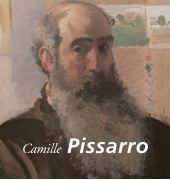 “Father Pissarro”, as his friends liked to call him, was the most restrained of the artists of the Impressionist movement. Perhaps it was his age, being older than his fellow artists Monet, Sisley, Bazille, and Renoir, or rather his maturity, which resulted in his works having such serene and sober subjects and compositions. A man of simple tastes, he enjoyed painting peasants going about their daily lives. However, Pissarro owes his belated fame to his urban landscapes, which he treated with the same passion he used to paint beautiful stormy skies and frost-whitened mornings. ... Далее
“Father Pissarro”, as his friends liked to call him, was the most restrained of the artists of the Impressionist movement. Perhaps it was his age, being older than his fellow artists Monet, Sisley, Bazille, and Renoir, or rather his maturity, which resulted in his works having such serene and sober subjects and compositions. A man of simple tastes, he enjoyed painting peasants going about their daily lives. However, Pissarro owes his belated fame to his urban landscapes, which he treated with the same passion he used to paint beautiful stormy skies and frost-whitened mornings. ... Далее -
64.
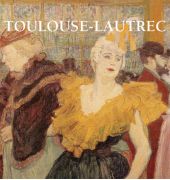 Lautrec studied with two of the most admired academic painters of the day, Léon Bonnat and Fernand Cormon. Lautrec’s time in the studios of Bonnat and Cormon had the advantage of introducing him to the nude as a subject. At that time life-drawing of the nude was the basis of all academic art training in nineteenth-century Paris. While still a student, Lautrec began to explore Parisian nightlife, which was to provide him with his greatest inspiration, and eventually undermined his health. Lautrec was an artist able to stamp his vision of the age in which he lived upon the imagination of future generations. Just as we see the English court of Charles I through the eyes of van Dyck and the Paris of Louis-Philippe through the eyes of Daumier, so we see the Paris of the 1890s and its most colourful personalities, through the eyes of Lautrec. The first great personality of Parisian nightlife whom Lautrec encountered – and a man who was to play an important role in helping Lautrec develop his artistic vision – was the cabaret singer Aristide Bruant. Bruant stood out as an heroic figure in what was the golden age of Parisian cabaret. Among the many other performers inspiring Lautrec in the 1890s were the dancers La Goulue and Valentin-le-Desossé (who both appear in the famous Moulin Rouge poster), and Jane Avril and Loïe Fuller, the singers Yvette Guilbert, May Belfort and Marcelle Lender, and the actress Réjane. Lautrec was, along with Degas, one of the great poets of the brothel. Degas explored the theme in the late 1870s in a series of monotype prints that are among his most remarkable and personal works. He depicts the somewhat ungainly posturing of the prostitutes and their clients with human warmth and a satirical humour that brings these prints closer to the art of Lautrec than anything else by Degas. However, the truthfulness with which Lautrec portrayed those aspects of life that most of his more respectable contemporaries preferred to sweep under the carpet naturally caused offence. The German critic Gensel probably spoke for many when he wrote: “There can of course be no talk of admiration for someone who is the master of the representation of all that is base and perverse. The only explanation as to how such filth – there can be no milder term for it – as Elles can be publicly exhibited without an outcry of indignations being heard is that one half of the general public does not understand the meaning of this cycle at all, and the other is ashamed of admitting that it does understand it.” ... Далее
Lautrec studied with two of the most admired academic painters of the day, Léon Bonnat and Fernand Cormon. Lautrec’s time in the studios of Bonnat and Cormon had the advantage of introducing him to the nude as a subject. At that time life-drawing of the nude was the basis of all academic art training in nineteenth-century Paris. While still a student, Lautrec began to explore Parisian nightlife, which was to provide him with his greatest inspiration, and eventually undermined his health. Lautrec was an artist able to stamp his vision of the age in which he lived upon the imagination of future generations. Just as we see the English court of Charles I through the eyes of van Dyck and the Paris of Louis-Philippe through the eyes of Daumier, so we see the Paris of the 1890s and its most colourful personalities, through the eyes of Lautrec. The first great personality of Parisian nightlife whom Lautrec encountered – and a man who was to play an important role in helping Lautrec develop his artistic vision – was the cabaret singer Aristide Bruant. Bruant stood out as an heroic figure in what was the golden age of Parisian cabaret. Among the many other performers inspiring Lautrec in the 1890s were the dancers La Goulue and Valentin-le-Desossé (who both appear in the famous Moulin Rouge poster), and Jane Avril and Loïe Fuller, the singers Yvette Guilbert, May Belfort and Marcelle Lender, and the actress Réjane. Lautrec was, along with Degas, one of the great poets of the brothel. Degas explored the theme in the late 1870s in a series of monotype prints that are among his most remarkable and personal works. He depicts the somewhat ungainly posturing of the prostitutes and their clients with human warmth and a satirical humour that brings these prints closer to the art of Lautrec than anything else by Degas. However, the truthfulness with which Lautrec portrayed those aspects of life that most of his more respectable contemporaries preferred to sweep under the carpet naturally caused offence. The German critic Gensel probably spoke for many when he wrote: “There can of course be no talk of admiration for someone who is the master of the representation of all that is base and perverse. The only explanation as to how such filth – there can be no milder term for it – as Elles can be publicly exhibited without an outcry of indignations being heard is that one half of the general public does not understand the meaning of this cycle at all, and the other is ashamed of admitting that it does understand it.” ... Далее -
65.
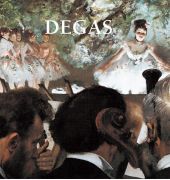 Degas was closest to Renoir in the impressionist’s circle, for both favoured the animated Parisian life of their day as a motif in their paintings. Degas did not attend Gleyre’s studio; most likely he first met the future impressionists at the Café Guerbois. He started his apprenticeship in 1853 at the studio of Louis-Ernest Barrias and, beginning in 1854, studied under Louis Lamothe, who revered Ingres above all others, and transmitted his adoration for this master to Edgar Degas. Starting in 1854 Degas travelled frequently to Italy: first to Naples, where he made the acquaintance of his numerous cousins, and then to Rome and Florence, where he copied tirelessly from the Old Masters. His drawings and sketches already revealed very clear preferences: Raphael, Leonardo da Vinci, Michelangelo, and Mantegna, but also Benozzo Gozzoli, Ghirlandaio, Titian, Fra Angelico, Uccello, and Botticelli. During the 1860s and 1870s he became a painter of racecourses, horses and jockeys. His fabulous painter’s memory retained the particularities of movement of horses wherever he saw them. After his first rather complex compositions depicting racecourses, Degas learned the art of translating the nobility and elegance of horses, their nervous movements, and the formal beauty of their musculature. Around the middle of the 1860s Degas made yet another discovery. In 1866 he painted his first composition with ballet as a subject, Mademoiselle Fiocre dans le ballet de la Source (Mademoiselle Fiocre in the Ballet ‘The Spring’) (New York, Brooklyn Museum). Degas had always been a devotee of the theatre, but from now on it would become more and more the focus of his art. Degas’ first painting devoted solely to the ballet was Le Foyer de la danse à l’Opéra de la rue Le Peletier (The Dancing Anteroom at the Opera on Rue Le Peletier) (Paris, Musée d’Orsay). In a carefully constructed composition, with groups of figures balancing one another to the left and the right, each ballet dancer is involved in her own activity, each one is moving in a separate manner from the others. Extended observation and an immense number of sketches were essential to executing such a task. This is why Degas moved from the theatre on to the rehearsal halls, where the dancers practised and took their lessons. This was how Degas arrived at the second sphere of that immediate, everyday life that was to interest him. The ballet would remain his passion until the end of his days. ... Далее
Degas was closest to Renoir in the impressionist’s circle, for both favoured the animated Parisian life of their day as a motif in their paintings. Degas did not attend Gleyre’s studio; most likely he first met the future impressionists at the Café Guerbois. He started his apprenticeship in 1853 at the studio of Louis-Ernest Barrias and, beginning in 1854, studied under Louis Lamothe, who revered Ingres above all others, and transmitted his adoration for this master to Edgar Degas. Starting in 1854 Degas travelled frequently to Italy: first to Naples, where he made the acquaintance of his numerous cousins, and then to Rome and Florence, where he copied tirelessly from the Old Masters. His drawings and sketches already revealed very clear preferences: Raphael, Leonardo da Vinci, Michelangelo, and Mantegna, but also Benozzo Gozzoli, Ghirlandaio, Titian, Fra Angelico, Uccello, and Botticelli. During the 1860s and 1870s he became a painter of racecourses, horses and jockeys. His fabulous painter’s memory retained the particularities of movement of horses wherever he saw them. After his first rather complex compositions depicting racecourses, Degas learned the art of translating the nobility and elegance of horses, their nervous movements, and the formal beauty of their musculature. Around the middle of the 1860s Degas made yet another discovery. In 1866 he painted his first composition with ballet as a subject, Mademoiselle Fiocre dans le ballet de la Source (Mademoiselle Fiocre in the Ballet ‘The Spring’) (New York, Brooklyn Museum). Degas had always been a devotee of the theatre, but from now on it would become more and more the focus of his art. Degas’ first painting devoted solely to the ballet was Le Foyer de la danse à l’Opéra de la rue Le Peletier (The Dancing Anteroom at the Opera on Rue Le Peletier) (Paris, Musée d’Orsay). In a carefully constructed composition, with groups of figures balancing one another to the left and the right, each ballet dancer is involved in her own activity, each one is moving in a separate manner from the others. Extended observation and an immense number of sketches were essential to executing such a task. This is why Degas moved from the theatre on to the rehearsal halls, where the dancers practised and took their lessons. This was how Degas arrived at the second sphere of that immediate, everyday life that was to interest him. The ballet would remain his passion until the end of his days. ... Далее -
66.
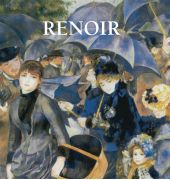 Pierre-Auguste Renoir was born in Limoges on 25 February 1841. In 1854, the boy’s parents took him from school and found a place for him in the Lévy brothers’ workshop, where he was to learn to paint porcelain. Renoir’s younger brother Edmond had this to say this about the move: “From what he drew in charcoal on the walls, they concluded that he had the ability for an artist’s profession. That was how our parents came to put him to learn the trade of porcelain painter.” One of the Lévys’ workers, Emile Laporte, painted in oils in his spare time. He suggested Renoir makes use of his canvases and paints. This offer resulted in the appearance of the first painting by the future impressionist. In 1862 Renoir passed the examinations and entered the Ecole des Beaux-Arts and, simultaneously, one of the independent studios, where instruction was given by Charles Gleyre, a professor at the Ecole des Beaux-Arts. The second, perhaps even the first, great event of this period in Renoir’s life was his meeting, in Gleyre’s studio, with those who were to become his best friends for the rest of his days and who shared his ideas about art. Much later, when he was already a mature artist, Renoir had the opportunity to see works by Rembrandt in Holland, Velázquez, Goya and El Greco in Spain, and Raphael in Italy. However, Renoir lived and breathed ideas of a new kind of art. He always found his inspirations in the Louvre. “For me, in the Gleyre era, the Louvre was Delacroix,” he confessed to Jean. For Renoir, the First Impressionist Exhibition was the moment his vision of art and the artist was affirmed. This period in Renoir’s life was marked by one further significant event. In 1873 he moved to Montmartre, to the house at 35 Rue Saint-Georges, where he lived until 1884. Renoir remained loyal to Montmartre for the rest of his life. Here he found his “plein-air” subjects, his models and even his family. It was in the 1870s that Renoir acquired the friends who would stay with him for the remainder of his days. One of them was the art-dealer Paul Durand-Ruel, who began to buy his paintings in 1872. In summer, Renoir continued to paint a great deal outdoors together with Monet. He would travel out to Argenteuil, where Monet rented a house for his family. Edouard Manet sometimes worked with them too. In 1877, at the Third Impressionist Exhibition, Renoir presented a panorama of over twenty paintings. They included landscapes created in Paris, on the Seine, outside the city and in Claude Monet’s garden; studies of women’s heads and bouquets of flowers; portraits of Sisley, the actress Jeanne Samary, the writer Alphonse Daudet and the politician Spuller; and also The Swing and The Ball at the Moulin de la Galette. Finally, in the 1880s Renoir hit a “winning streak”. He was commissioned by rich financiers, the owner of the Grands Magasins du Louvre and Senator Goujon. His paintings were exhibited in London and Brussels, as well as at the Seventh International Exhibition held at Georges Petit’s in Paris in 1886. In a letter to Durand-Ruel, then in New York, Renoir wrote: “The Petit exhibition has opened and is not doing badly, so they say. After all, it’s so hard to judge about yourself. I think I have managed to take a step forward towards public respect. A small step, but even that is something.” ... Далее
Pierre-Auguste Renoir was born in Limoges on 25 February 1841. In 1854, the boy’s parents took him from school and found a place for him in the Lévy brothers’ workshop, where he was to learn to paint porcelain. Renoir’s younger brother Edmond had this to say this about the move: “From what he drew in charcoal on the walls, they concluded that he had the ability for an artist’s profession. That was how our parents came to put him to learn the trade of porcelain painter.” One of the Lévys’ workers, Emile Laporte, painted in oils in his spare time. He suggested Renoir makes use of his canvases and paints. This offer resulted in the appearance of the first painting by the future impressionist. In 1862 Renoir passed the examinations and entered the Ecole des Beaux-Arts and, simultaneously, one of the independent studios, where instruction was given by Charles Gleyre, a professor at the Ecole des Beaux-Arts. The second, perhaps even the first, great event of this period in Renoir’s life was his meeting, in Gleyre’s studio, with those who were to become his best friends for the rest of his days and who shared his ideas about art. Much later, when he was already a mature artist, Renoir had the opportunity to see works by Rembrandt in Holland, Velázquez, Goya and El Greco in Spain, and Raphael in Italy. However, Renoir lived and breathed ideas of a new kind of art. He always found his inspirations in the Louvre. “For me, in the Gleyre era, the Louvre was Delacroix,” he confessed to Jean. For Renoir, the First Impressionist Exhibition was the moment his vision of art and the artist was affirmed. This period in Renoir’s life was marked by one further significant event. In 1873 he moved to Montmartre, to the house at 35 Rue Saint-Georges, where he lived until 1884. Renoir remained loyal to Montmartre for the rest of his life. Here he found his “plein-air” subjects, his models and even his family. It was in the 1870s that Renoir acquired the friends who would stay with him for the remainder of his days. One of them was the art-dealer Paul Durand-Ruel, who began to buy his paintings in 1872. In summer, Renoir continued to paint a great deal outdoors together with Monet. He would travel out to Argenteuil, where Monet rented a house for his family. Edouard Manet sometimes worked with them too. In 1877, at the Third Impressionist Exhibition, Renoir presented a panorama of over twenty paintings. They included landscapes created in Paris, on the Seine, outside the city and in Claude Monet’s garden; studies of women’s heads and bouquets of flowers; portraits of Sisley, the actress Jeanne Samary, the writer Alphonse Daudet and the politician Spuller; and also The Swing and The Ball at the Moulin de la Galette. Finally, in the 1880s Renoir hit a “winning streak”. He was commissioned by rich financiers, the owner of the Grands Magasins du Louvre and Senator Goujon. His paintings were exhibited in London and Brussels, as well as at the Seventh International Exhibition held at Georges Petit’s in Paris in 1886. In a letter to Durand-Ruel, then in New York, Renoir wrote: “The Petit exhibition has opened and is not doing badly, so they say. After all, it’s so hard to judge about yourself. I think I have managed to take a step forward towards public respect. A small step, but even that is something.” ... Далее -
67.
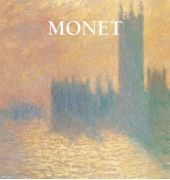 For Claude Monet the designation ‘impressionist’ always remained a source of pride. In spite of all the things critics have written about his work, Monet continued to be a true impressionist to the end of his very long life. He was so by deep conviction, and for his Impressionism he may have sacrificed many other opportunities that his enormous talent held out to him. Monet did not paint classical compositions with figures, and he did not become a portraitist, although his professional training included those skills. He chose a single genre for himself, landscape painting, and in that he achieved a degree of perfection none of his contemporaries managed to attain. Yet the little boy began by drawing caricatures. Boudin advised Monet to stop doing caricatures and to take up landscapes instead. The sea, the sky, animals, people, and trees are beautiful in the exact state in which nature created them – surrounded by air and light. Indeed, it was Boudin who passed on to Monet his conviction of the importance of working in the open air, which Monet would in turn transmit to his impressionist friends. Monet did not want to enrol at the Ecole des Beaux-Arts. He chose to attend a private school, L’Académie Suisse, established by an ex-model on the Quai d’Orfèvres near the Pont Saint-Michel. One could draw and paint from a live model there for a modest fee. This was where Monet met the future impressionist Camille Pissarro. Later in Gleyre’s studio, Monet met Auguste Renoir Alfred Sisley, and Frédéric Bazille. Monet considered it very important that Boudin be introduced to his new friends. He also told his friends of another painter he had found in Normandy. This was the remarkable Dutchman Jongkind. His landscapes were saturated with colour, and their sincerity, at times even their naïveté, was combined with subtle observation of the Normandy shore’s variable nature. At this time Monet’s landscapes were not yet characterized by great richness of colour. Rather, they recalled the tonalities of paintings by the Barbizon artists, and Boudin’s seascapes. He composed a range of colour based on yellow-brown or blue-grey. At the Third Impressionist Exhibition in 1877 Monet presented a series of paintings for the first time: seven views of the Saint-Lazare train station. He selected them from among twelve he had painted at the station. This motif in Monet’s work is in line not only with Manet’s Chemin de fer (The Railway) and with his own landscapes featuring trains and stations at Argenteuil, but also with a trend that surfaced after the railways first began to appear. In 1883, Monet had bought a house in the village of Giverny, near the little town of Vernon. At Giverny, series painting became one of his chief working procedures. Meadows became his permanent workplace. When a journalist, who had come from Vétheuil to interview Monet, asked him where his studio was, the painter answered, “My studio! I’ve never had a studio, and I can’t see why one would lock oneself up in a room. To draw, yes – to paint, no”. Then, broadly gesturing towards the Seine, the hills, and the silhouette of the little town, he declared, “There’s my real studio.”Monet began to go to London in the last decade of the nineteenth century. He began all his London paintings working directly from nature, but completed many of them afterwards, at Giverny. The series formed an indivisible whole, and the painter had to work on all his canvases at one time. A friend of Monet’s, the writer Octave Mirbeau, wrote that he had accomplished a miracle. With the help of colours he had succeeded in recreating on the canvas something almost impossible to capture: he was reproducing sunlight, enriching it with an infinite number of reflections. Alone among the impressionists, Claude Monet took an almost scientific study of the possibilities of colour to its limits; it is unlikely that one could have gone any further in that direction. ... Далее
For Claude Monet the designation ‘impressionist’ always remained a source of pride. In spite of all the things critics have written about his work, Monet continued to be a true impressionist to the end of his very long life. He was so by deep conviction, and for his Impressionism he may have sacrificed many other opportunities that his enormous talent held out to him. Monet did not paint classical compositions with figures, and he did not become a portraitist, although his professional training included those skills. He chose a single genre for himself, landscape painting, and in that he achieved a degree of perfection none of his contemporaries managed to attain. Yet the little boy began by drawing caricatures. Boudin advised Monet to stop doing caricatures and to take up landscapes instead. The sea, the sky, animals, people, and trees are beautiful in the exact state in which nature created them – surrounded by air and light. Indeed, it was Boudin who passed on to Monet his conviction of the importance of working in the open air, which Monet would in turn transmit to his impressionist friends. Monet did not want to enrol at the Ecole des Beaux-Arts. He chose to attend a private school, L’Académie Suisse, established by an ex-model on the Quai d’Orfèvres near the Pont Saint-Michel. One could draw and paint from a live model there for a modest fee. This was where Monet met the future impressionist Camille Pissarro. Later in Gleyre’s studio, Monet met Auguste Renoir Alfred Sisley, and Frédéric Bazille. Monet considered it very important that Boudin be introduced to his new friends. He also told his friends of another painter he had found in Normandy. This was the remarkable Dutchman Jongkind. His landscapes were saturated with colour, and their sincerity, at times even their naïveté, was combined with subtle observation of the Normandy shore’s variable nature. At this time Monet’s landscapes were not yet characterized by great richness of colour. Rather, they recalled the tonalities of paintings by the Barbizon artists, and Boudin’s seascapes. He composed a range of colour based on yellow-brown or blue-grey. At the Third Impressionist Exhibition in 1877 Monet presented a series of paintings for the first time: seven views of the Saint-Lazare train station. He selected them from among twelve he had painted at the station. This motif in Monet’s work is in line not only with Manet’s Chemin de fer (The Railway) and with his own landscapes featuring trains and stations at Argenteuil, but also with a trend that surfaced after the railways first began to appear. In 1883, Monet had bought a house in the village of Giverny, near the little town of Vernon. At Giverny, series painting became one of his chief working procedures. Meadows became his permanent workplace. When a journalist, who had come from Vétheuil to interview Monet, asked him where his studio was, the painter answered, “My studio! I’ve never had a studio, and I can’t see why one would lock oneself up in a room. To draw, yes – to paint, no”. Then, broadly gesturing towards the Seine, the hills, and the silhouette of the little town, he declared, “There’s my real studio.”Monet began to go to London in the last decade of the nineteenth century. He began all his London paintings working directly from nature, but completed many of them afterwards, at Giverny. The series formed an indivisible whole, and the painter had to work on all his canvases at one time. A friend of Monet’s, the writer Octave Mirbeau, wrote that he had accomplished a miracle. With the help of colours he had succeeded in recreating on the canvas something almost impossible to capture: he was reproducing sunlight, enriching it with an infinite number of reflections. Alone among the impressionists, Claude Monet took an almost scientific study of the possibilities of colour to its limits; it is unlikely that one could have gone any further in that direction. ... Далее -
68.
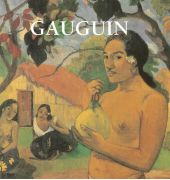 Paul Gauguin was first a sailor, then a successful stockbroker in Paris. In 1874 he began to paint at weekends as a Sunday painter. Nine years later, after a stock-market crash, he felt confident of his ability to earn a living for his family by painting and he resigned his position and took up the painter’s brush full time. Following the lead of Cézanne, Gauguin painted still-lifes from the very beginning of his artistic career. He even owned a still-life by Cézanne, which is shown in Gauguin’s painting Portrait of Marie Lagadu. The year 1891 was crucial for Gauguin. In that year he left France for Tahiti, where he stayed till 1893. This stay in Tahiti determined his future life and career, for in 1895, after a sojourn in France, he returned there for good. In Tahiti, Gauguin discovered primitive art, with its flat forms and violent colours, belonging to an untamed nature. With absolute sincerity, he transferred them onto his canvas. His paintings from then on reflected this style: a radical simplification of drawing; brilliant, pure, bright colours; an ornamental type composition; and a deliberate flatness of planes. Gauguin termed this style “synthetic symbolism”. ... Далее
Paul Gauguin was first a sailor, then a successful stockbroker in Paris. In 1874 he began to paint at weekends as a Sunday painter. Nine years later, after a stock-market crash, he felt confident of his ability to earn a living for his family by painting and he resigned his position and took up the painter’s brush full time. Following the lead of Cézanne, Gauguin painted still-lifes from the very beginning of his artistic career. He even owned a still-life by Cézanne, which is shown in Gauguin’s painting Portrait of Marie Lagadu. The year 1891 was crucial for Gauguin. In that year he left France for Tahiti, where he stayed till 1893. This stay in Tahiti determined his future life and career, for in 1895, after a sojourn in France, he returned there for good. In Tahiti, Gauguin discovered primitive art, with its flat forms and violent colours, belonging to an untamed nature. With absolute sincerity, he transferred them onto his canvas. His paintings from then on reflected this style: a radical simplification of drawing; brilliant, pure, bright colours; an ornamental type composition; and a deliberate flatness of planes. Gauguin termed this style “synthetic symbolism”. ... Далее -
69.
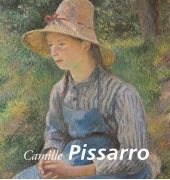 « Le père Pissarro », comme aimaient à l’appeler ses amis, était le plus sage des artistes impressionnistes. Peut être son âge, plus avancé que celui de ses camarades Monet, Sisley, Bazille et Renoir, ou plutot sa maturité, lui firent créer des œuvres sereines et sobres tant dans leur sujet que dans leur composition. Homme au goûts simples, il se plut à peindre des paysans sur les chemins, bien qu’il dut sa tardive notoriété à ses paysages urbains, traités avec la même passion que celle que faisaient jaillir en lui les ciels orageux et les matins blanchis par le givre. ... Далее
« Le père Pissarro », comme aimaient à l’appeler ses amis, était le plus sage des artistes impressionnistes. Peut être son âge, plus avancé que celui de ses camarades Monet, Sisley, Bazille et Renoir, ou plutot sa maturité, lui firent créer des œuvres sereines et sobres tant dans leur sujet que dans leur composition. Homme au goûts simples, il se plut à peindre des paysans sur les chemins, bien qu’il dut sa tardive notoriété à ses paysages urbains, traités avec la même passion que celle que faisaient jaillir en lui les ciels orageux et les matins blanchis par le givre. ... Далее -
70.
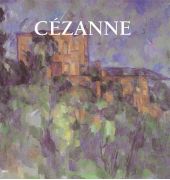 Since his death 200 years ago, Cézanne has become the most famous painter of the nineteenth century. He was born in Aix-en-Provence in 1839 and the happiest period of his life was his early youth in Provence, in company with Emile Zolá, another Italian. Following Zolá’s example, Cézanne went to Paris in his twenty-first year. During the Franco-Prussian war he deserted the military, dividing his time between open-air painting and the studio. He said to Vollard, an art dealer, “I’m only a painter. Parisian wit gives me a pain. Painting nudes on the banks of the Arc [a river near Aix] is all I could ask for.” Encouraged by Renoir, one of the first to appreciate him, he exhibited with the impressionists in 1874 and in 1877. He was received with derision, which deeply hurt him. Cézanne’s ambition, in his own words, was “to make out of Impressionism something as solid and durable as the paintings of the museums.” His aim was to achieve the monumental in a modern language of glowing, vibrating tones. Cézanne wanted to retain the natural colour of an object and to harmonise it with the various influences of light and shade trying to destroy it; to work out a scale of tones expressing the mass and character of the form. Cézanne loved to paint fruit because it afforded him obedient models and he was a slow worker. He did not intend to simply copy an apple. He kept the dominant colour and the character of the fruit, but heightened the emotional appeal of the form by a scheme of rich and concordant tones. In his paintings of still-life he is a master. His fruit and vegetable compositions are truly dramatic; they have the weight, the nobility, the style of immortal forms. No other painter ever brought to a red apple a conviction so heated, sympathy so genuinely spiritual, or an observation so protracted. No other painter of equal ability ever reserved for still-life his strongest impulses. Cézanne restored to painting the pre-eminence of knowledge, the most essential quality to all creative effort. The death of his father in 1886 made him a rich man, but he made no change in his abstemious mode of living. Soon afterwards, Cézanne retired permanently to his estate in Provence. He was probably the loneliest of painters of his day. At times a curious melancholy attacked him, a black hopelessness. He grew more savage and exacting, destroying canvases, throwing them out of his studio into the trees, abandoning them in the fields, and giving them to his son to cut into puzzles, or to the people of Aix. At the beginning of the century, when Vollard arrived in Provence with intentions of buying on speculation all the Cézannes he could get hold of, the peasantry, hearing that a fool from Paris was actually handing out money for old linen, produced from barns a considerable number of still-lifes and landscapes. The old master of Aix was overcome with joy, but recognition came too late. In 1906 he died from a fever contracted while painting in a downpour of rain. ... Далее
Since his death 200 years ago, Cézanne has become the most famous painter of the nineteenth century. He was born in Aix-en-Provence in 1839 and the happiest period of his life was his early youth in Provence, in company with Emile Zolá, another Italian. Following Zolá’s example, Cézanne went to Paris in his twenty-first year. During the Franco-Prussian war he deserted the military, dividing his time between open-air painting and the studio. He said to Vollard, an art dealer, “I’m only a painter. Parisian wit gives me a pain. Painting nudes on the banks of the Arc [a river near Aix] is all I could ask for.” Encouraged by Renoir, one of the first to appreciate him, he exhibited with the impressionists in 1874 and in 1877. He was received with derision, which deeply hurt him. Cézanne’s ambition, in his own words, was “to make out of Impressionism something as solid and durable as the paintings of the museums.” His aim was to achieve the monumental in a modern language of glowing, vibrating tones. Cézanne wanted to retain the natural colour of an object and to harmonise it with the various influences of light and shade trying to destroy it; to work out a scale of tones expressing the mass and character of the form. Cézanne loved to paint fruit because it afforded him obedient models and he was a slow worker. He did not intend to simply copy an apple. He kept the dominant colour and the character of the fruit, but heightened the emotional appeal of the form by a scheme of rich and concordant tones. In his paintings of still-life he is a master. His fruit and vegetable compositions are truly dramatic; they have the weight, the nobility, the style of immortal forms. No other painter ever brought to a red apple a conviction so heated, sympathy so genuinely spiritual, or an observation so protracted. No other painter of equal ability ever reserved for still-life his strongest impulses. Cézanne restored to painting the pre-eminence of knowledge, the most essential quality to all creative effort. The death of his father in 1886 made him a rich man, but he made no change in his abstemious mode of living. Soon afterwards, Cézanne retired permanently to his estate in Provence. He was probably the loneliest of painters of his day. At times a curious melancholy attacked him, a black hopelessness. He grew more savage and exacting, destroying canvases, throwing them out of his studio into the trees, abandoning them in the fields, and giving them to his son to cut into puzzles, or to the people of Aix. At the beginning of the century, when Vollard arrived in Provence with intentions of buying on speculation all the Cézannes he could get hold of, the peasantry, hearing that a fool from Paris was actually handing out money for old linen, produced from barns a considerable number of still-lifes and landscapes. The old master of Aix was overcome with joy, but recognition came too late. In 1906 he died from a fever contracted while painting in a downpour of rain. ... Далее -
71.
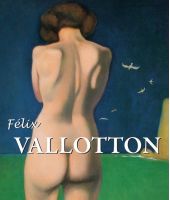 Félix Vallotton (1865-1925) war ein französischer Künstler der Jahrhundertwende, dessen Werke bürgerliche Konventionen hinterfragten und den Geschlechterkampf thematisierten. In kühl konstruierten Kulissen findet sich eine ästhetische Provokation, die sich die Moderne zum Vorbild nehmen sollte. Die Aufmerksamkeit seiner Zeitgenossen hatte Vallotton jedoch seinen von der japanischen Kunst inspirierten, bemerkenswert elegant komponierten Holzschnitten zu verdanken. ... Далее
Félix Vallotton (1865-1925) war ein französischer Künstler der Jahrhundertwende, dessen Werke bürgerliche Konventionen hinterfragten und den Geschlechterkampf thematisierten. In kühl konstruierten Kulissen findet sich eine ästhetische Provokation, die sich die Moderne zum Vorbild nehmen sollte. Die Aufmerksamkeit seiner Zeitgenossen hatte Vallotton jedoch seinen von der japanischen Kunst inspirierten, bemerkenswert elegant komponierten Holzschnitten zu verdanken. ... Далее -
72.
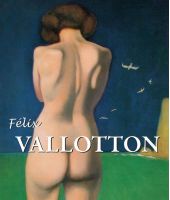 Félix Vallotton (1865-1925) war ein französischer Künstler der Jahrhundertwende, dessen Werke bürgerliche Konventionen hinterfragten und den Geschlechterkampf thematisierten. In kühl konstruierten Kulissen findet sich eine ästhetische Provokation, die sich die Moderne zum Vorbild nehmen sollte. Die Aufmerksamkeit seiner Zeitgenossen hatte Vallotton jedoch seinen von der japanischen Kunst inspirierten, bemerkenswert elegant komponierten Holzschnitten zu verdanken. ... Далее
Félix Vallotton (1865-1925) war ein französischer Künstler der Jahrhundertwende, dessen Werke bürgerliche Konventionen hinterfragten und den Geschlechterkampf thematisierten. In kühl konstruierten Kulissen findet sich eine ästhetische Provokation, die sich die Moderne zum Vorbild nehmen sollte. Die Aufmerksamkeit seiner Zeitgenossen hatte Vallotton jedoch seinen von der japanischen Kunst inspirierten, bemerkenswert elegant komponierten Holzschnitten zu verdanken. ... Далее -
73.
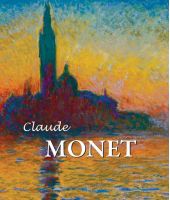 Als Impressionist zu gelten war für Monet eine Auszeichnung. Er war es aus tiefer Überzeugung und blieb es bis an das Ende seines langen Lebens. Er begnügte sich mit einem einzigen Genre, dem der Landschaftsmalerei. Hier aber brachte er es zu einer Vollkommenheit, an die keiner seiner Zeitgenossen heranreichte. Im Sommer jenes Jahres kam es zu gemeinsamen Malübungen mit Boudin (1824 bis 1898) am Meeresstrand. “Mit der Zeit gingen mir die Augen auf und ich begann, die Natur zu verstehen; zugleich lernte ich, sie zu lieben” – so erinnert sich Monet später an diese gemeinsamen Exerzitien. Er besucht nicht die Ecole des Beaux-Arts, sondern zieht die von Monsieur Suisse, einem ehemaligen Modell Davids, gegründete freie “Académie Suisse” vor. Hier war es möglich, für einen geringen Beitrag lebende Modelle zu malen und zu zeichnen. Die Farbskala der Bilder, die Monet 1871 und 1872 malte, ist nicht sehr breit; sie erinnert an die der Barbizon-Schule und an die Seestücke Boudins. Die Grundtöne sind braungelb und blaugrau. Im Jahr 1877 wurde die dritte Ausstellung der Impressionisten eröffnet, bei der Monet zum ersten Mal eine Bilderserie zeigte. Mit seinem Motiv, dem Bahnhof Saint-Lazare, setzte Monet nicht nur Manets Die Eisenbahn und seine eigenen Landschaftsbilder aus Argenteuil fort, er schloss sich darüber hinaus der bei den Künstlern wachsenden Tendenz an, sich von diesem Transportmittel faszinieren zu lassen. In seinem Wohnort Giverny wurden die Bilderserien Monets wichtigste Arbeitsmethode. In den 1890er Jahren entdeckte Monet London. Zwar begann er die Bilder allesamt in London, beendete viele von ihnen aber in Giverny. Für den Schriftsteller Octave Mirbeau (1848 bis 1917) war Monet ein Mensch, der Wunder vollbrachte: Mit Hilfe der Farben habe er auf der Leinwand das Sonnenlicht, etwas nahezu Unfassbares, nachgebildet und es um eine Unzahl prismatischer Facetten bereichert. Tatsächlich hat Monet das Potenzial der Farbe mit nahezu wissenschaftlicher Strenge bis zu seinen äußersten Konsequenzen getrieben; kein anderer Impressionist ist darin so weit gegangen wie er, und es ist wenig wahrscheinlich, dass man in dieser Richtung hätte noch weitergehen können. ... Далее
Als Impressionist zu gelten war für Monet eine Auszeichnung. Er war es aus tiefer Überzeugung und blieb es bis an das Ende seines langen Lebens. Er begnügte sich mit einem einzigen Genre, dem der Landschaftsmalerei. Hier aber brachte er es zu einer Vollkommenheit, an die keiner seiner Zeitgenossen heranreichte. Im Sommer jenes Jahres kam es zu gemeinsamen Malübungen mit Boudin (1824 bis 1898) am Meeresstrand. “Mit der Zeit gingen mir die Augen auf und ich begann, die Natur zu verstehen; zugleich lernte ich, sie zu lieben” – so erinnert sich Monet später an diese gemeinsamen Exerzitien. Er besucht nicht die Ecole des Beaux-Arts, sondern zieht die von Monsieur Suisse, einem ehemaligen Modell Davids, gegründete freie “Académie Suisse” vor. Hier war es möglich, für einen geringen Beitrag lebende Modelle zu malen und zu zeichnen. Die Farbskala der Bilder, die Monet 1871 und 1872 malte, ist nicht sehr breit; sie erinnert an die der Barbizon-Schule und an die Seestücke Boudins. Die Grundtöne sind braungelb und blaugrau. Im Jahr 1877 wurde die dritte Ausstellung der Impressionisten eröffnet, bei der Monet zum ersten Mal eine Bilderserie zeigte. Mit seinem Motiv, dem Bahnhof Saint-Lazare, setzte Monet nicht nur Manets Die Eisenbahn und seine eigenen Landschaftsbilder aus Argenteuil fort, er schloss sich darüber hinaus der bei den Künstlern wachsenden Tendenz an, sich von diesem Transportmittel faszinieren zu lassen. In seinem Wohnort Giverny wurden die Bilderserien Monets wichtigste Arbeitsmethode. In den 1890er Jahren entdeckte Monet London. Zwar begann er die Bilder allesamt in London, beendete viele von ihnen aber in Giverny. Für den Schriftsteller Octave Mirbeau (1848 bis 1917) war Monet ein Mensch, der Wunder vollbrachte: Mit Hilfe der Farben habe er auf der Leinwand das Sonnenlicht, etwas nahezu Unfassbares, nachgebildet und es um eine Unzahl prismatischer Facetten bereichert. Tatsächlich hat Monet das Potenzial der Farbe mit nahezu wissenschaftlicher Strenge bis zu seinen äußersten Konsequenzen getrieben; kein anderer Impressionist ist darin so weit gegangen wie er, und es ist wenig wahrscheinlich, dass man in dieser Richtung hätte noch weitergehen können. ... Далее -
74.
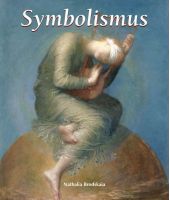 Der Symbolismus ist eine Erscheinung des Fin-de-Siècle, der seinen Anfang in den 1880er Jahren in Frankreich nahm und zu Anfang des 20. Jahrhunderts auch im übrigen Europa Fuß fasste. Die von der antiken Mythologie faszinierten Symbolisten versuchten, sich der von der Wissenschaft etablierten Herrschaft der Rationalität zu entziehen. Sie wollten die sichtbare Welt und die Vernunft überwinden, um zur Welt des reinen Denkens und der Ästhetik, ja sogar zum Unterbewusstsein, vorzudringen. Die Franzosen Gustave Moreau, Odilon Redon, die Belgier Fernand Khnopff und Félicien Rops, die Engländer Edward Burne-Jones und Dante Gabriel Rossetti sowie der Holländer Jan Toorop sind die herausragenden Repräsentanten dieser Kunstrichtung. ... Далее
Der Symbolismus ist eine Erscheinung des Fin-de-Siècle, der seinen Anfang in den 1880er Jahren in Frankreich nahm und zu Anfang des 20. Jahrhunderts auch im übrigen Europa Fuß fasste. Die von der antiken Mythologie faszinierten Symbolisten versuchten, sich der von der Wissenschaft etablierten Herrschaft der Rationalität zu entziehen. Sie wollten die sichtbare Welt und die Vernunft überwinden, um zur Welt des reinen Denkens und der Ästhetik, ja sogar zum Unterbewusstsein, vorzudringen. Die Franzosen Gustave Moreau, Odilon Redon, die Belgier Fernand Khnopff und Félicien Rops, die Engländer Edward Burne-Jones und Dante Gabriel Rossetti sowie der Holländer Jan Toorop sind die herausragenden Repräsentanten dieser Kunstrichtung. ... Далее -
75.
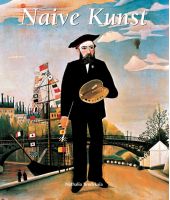 Die naive Kunst erlangte erstmals gegen Ende des 19. Jahrhunderts Popularität. Bis zu jener Zeit hatte sich diese von Autodidakten ohne formale Ausbildung praktizierte und durch Spontaneität und Einfachheit charakterisierte Ausdrucksform nur geringer Wertschätzung bei „professionellen“ Künstlern und Kunstkritikern erfreut. Die von der primitiven Kunst beeinflusste naive Malerei ist durch die Präzision ihrer Linienführung, ihre Lebendigkeit und fröhlichen Farben sowie durch klare und einfache Formen charakterisiert. Die naive Kunst wird in Frankreich durch Künstler wie Henri Rousseau, Séraphine de Senlis, André Bauchant und Camille Bombois vertreten. Sie hat aber auch in anderen Ländern namhafte Vertreter, etwa Joan Miró, Guido Vedovato, Niko Pirosmani und Ivan Generalic gefunden. ... Далее
Die naive Kunst erlangte erstmals gegen Ende des 19. Jahrhunderts Popularität. Bis zu jener Zeit hatte sich diese von Autodidakten ohne formale Ausbildung praktizierte und durch Spontaneität und Einfachheit charakterisierte Ausdrucksform nur geringer Wertschätzung bei „professionellen“ Künstlern und Kunstkritikern erfreut. Die von der primitiven Kunst beeinflusste naive Malerei ist durch die Präzision ihrer Linienführung, ihre Lebendigkeit und fröhlichen Farben sowie durch klare und einfache Formen charakterisiert. Die naive Kunst wird in Frankreich durch Künstler wie Henri Rousseau, Séraphine de Senlis, André Bauchant und Camille Bombois vertreten. Sie hat aber auch in anderen Ländern namhafte Vertreter, etwa Joan Miró, Guido Vedovato, Niko Pirosmani und Ivan Generalic gefunden. ... Далее -
76.
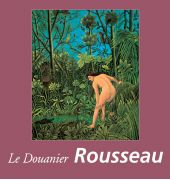 Le Douanier Rousseau (Henri Rousseau) (Laval, 1844 – Paris, 1910) Les galeries marchandes à Paris fleurissant, on créa en 1884, le Salon des Indépendants. Cette exposition sans jury fut organisée pour ceux qui étaient ou se considéraient professionnels – alors très nombreux -, mais qui ne pouvaient satisfaire les critères des salons officiels. C’est lors d’un des Salons des Indépendants qu’ Henri Rousseau créa la surprise. Rousseau occupait un poste à l’octroi de Paris, à Vanves. A ses moments libres, il peignait des toiles, tantôt sur la commande de ses voisins, tantôt en guise de paiement pour de la nourriture. Chaque année, de 1886 à sa mort en 1901, il exposa ses toiles au Salon des Indépendants. Là, il se présentait sans savoir-faire professionnel, mais avec le fier sentiment d’être peintre et d’avoir le droit de rivaliser avec n’importe quelle autorité. Rousseau est un des premiers de sa génération à s’être rendu compte de l’arrivée d’une nouvelle époque de liberté dans l’art, y compris celle de pouvoir accéder au rang de peintre, et ce, indépendamment de la manière de peindre et du niveau de formation artistique. Les œuvres du Douanier Rousseau aidèrent d’autres peintres, peut-être moins talentueux mais tout aussi originaux, à être remarqués et appréciés d’un public qui apprit à voir l’art d’une façon nouvelle. Avec lui, apparaît toute une série de découvertes. Désormais, qu’elles soient naïves ou primitives, les œuvres d’art étaient partout et il y aurait toujours un regard d’artiste pour les révéler. ... Далее
Le Douanier Rousseau (Henri Rousseau) (Laval, 1844 – Paris, 1910) Les galeries marchandes à Paris fleurissant, on créa en 1884, le Salon des Indépendants. Cette exposition sans jury fut organisée pour ceux qui étaient ou se considéraient professionnels – alors très nombreux -, mais qui ne pouvaient satisfaire les critères des salons officiels. C’est lors d’un des Salons des Indépendants qu’ Henri Rousseau créa la surprise. Rousseau occupait un poste à l’octroi de Paris, à Vanves. A ses moments libres, il peignait des toiles, tantôt sur la commande de ses voisins, tantôt en guise de paiement pour de la nourriture. Chaque année, de 1886 à sa mort en 1901, il exposa ses toiles au Salon des Indépendants. Là, il se présentait sans savoir-faire professionnel, mais avec le fier sentiment d’être peintre et d’avoir le droit de rivaliser avec n’importe quelle autorité. Rousseau est un des premiers de sa génération à s’être rendu compte de l’arrivée d’une nouvelle époque de liberté dans l’art, y compris celle de pouvoir accéder au rang de peintre, et ce, indépendamment de la manière de peindre et du niveau de formation artistique. Les œuvres du Douanier Rousseau aidèrent d’autres peintres, peut-être moins talentueux mais tout aussi originaux, à être remarqués et appréciés d’un public qui apprit à voir l’art d’une façon nouvelle. Avec lui, apparaît toute une série de découvertes. Désormais, qu’elles soient naïves ou primitives, les œuvres d’art étaient partout et il y aurait toujours un regard d’artiste pour les révéler. ... Далее -
77.
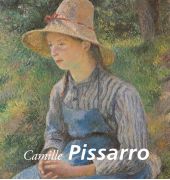 « Le père Pissarro », comme aimaient à l’appeler ses amis, était le plus sage des artistes impressionnistes. Peut être son âge, plus avancé que celui de ses camarades Monet, Sisley, Bazille et Renoir, ou plutot sa maturité, lui firent créer des œuvres sereines et sobres tant dans leur sujet que dans leur composition. Homme au goûts simples, il se plut à peindre des paysans sur les chemins, bien qu’il dut sa tardive notoriété à ses paysages urbains, traités avec la même passion que celle que faisaient jaillir en lui les ciels orageux et les matins blanchis par le givre. ... Далее
« Le père Pissarro », comme aimaient à l’appeler ses amis, était le plus sage des artistes impressionnistes. Peut être son âge, plus avancé que celui de ses camarades Monet, Sisley, Bazille et Renoir, ou plutot sa maturité, lui firent créer des œuvres sereines et sobres tant dans leur sujet que dans leur composition. Homme au goûts simples, il se plut à peindre des paysans sur les chemins, bien qu’il dut sa tardive notoriété à ses paysages urbains, traités avec la même passion que celle que faisaient jaillir en lui les ciels orageux et les matins blanchis par le givre. ... Далее -
78.
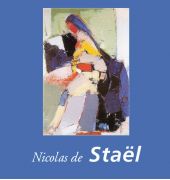 Nicolas de Staël, peintre français de famille russe, est né le 5 janvier 1914 à Saint-Pétersbourg et mort le 16 mars 1955 à Antibes. Son œuvre fut très fortement influencée par Cézanne, Van Gogh, Braque, Matisse et certains grands maîtres comme Rembrandt et Vermeer. Nicolas de Staël est surtout reconnu pour l’usage de couleurs telles que l’orange et le bleu. Il se suicide en 1955, comme Van Gogh, l’un de ses maîtres. ... Далее
Nicolas de Staël, peintre français de famille russe, est né le 5 janvier 1914 à Saint-Pétersbourg et mort le 16 mars 1955 à Antibes. Son œuvre fut très fortement influencée par Cézanne, Van Gogh, Braque, Matisse et certains grands maîtres comme Rembrandt et Vermeer. Nicolas de Staël est surtout reconnu pour l’usage de couleurs telles que l’orange et le bleu. Il se suicide en 1955, comme Van Gogh, l’un de ses maîtres. ... Далее -
79.
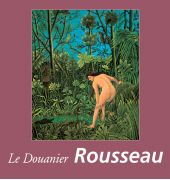 Le Douanier Rousseau (Henri Rousseau) (Laval, 1844 – Paris, 1910) Les galeries marchandes à Paris fleurissant, on créa en 1884, le Salon des Indépendants. Cette exposition sans jury fut organisée pour ceux qui étaient ou se considéraient professionnels – alors très nombreux -, mais qui ne pouvaient satisfaire les critères des salons officiels. C’est lors d’un des Salons des Indépendants qu’ Henri Rousseau créa la surprise. Rousseau occupait un poste à l’octroi de Paris, à Vanves. A ses moments libres, il peignait des toiles, tantôt sur la commande de ses voisins, tantôt en guise de paiement pour de la nourriture. Chaque année, de 1886 à sa mort en 1901, il exposa ses toiles au Salon des Indépendants. Là, il se présentait sans savoir-faire professionnel, mais avec le fier sentiment d’être peintre et d’avoir le droit de rivaliser avec n’importe quelle autorité. Rousseau est un des premiers de sa génération à s’être rendu compte de l’arrivée d’une nouvelle époque de liberté dans l’art, y compris celle de pouvoir accéder au rang de peintre, et ce, indépendamment de la manière de peindre et du niveau de formation artistique. Les œuvres du Douanier Rousseau aidèrent d’autres peintres, peut-être moins talentueux mais tout aussi originaux, à être remarqués et appréciés d’un public qui apprit à voir l’art d’une façon nouvelle. Avec lui, apparaît toute une série de découvertes. Désormais, qu’elles soient naïves ou primitives, les œuvres d’art étaient partout et il y aurait toujours un regard d’artiste pour les révéler. ... Далее
Le Douanier Rousseau (Henri Rousseau) (Laval, 1844 – Paris, 1910) Les galeries marchandes à Paris fleurissant, on créa en 1884, le Salon des Indépendants. Cette exposition sans jury fut organisée pour ceux qui étaient ou se considéraient professionnels – alors très nombreux -, mais qui ne pouvaient satisfaire les critères des salons officiels. C’est lors d’un des Salons des Indépendants qu’ Henri Rousseau créa la surprise. Rousseau occupait un poste à l’octroi de Paris, à Vanves. A ses moments libres, il peignait des toiles, tantôt sur la commande de ses voisins, tantôt en guise de paiement pour de la nourriture. Chaque année, de 1886 à sa mort en 1901, il exposa ses toiles au Salon des Indépendants. Là, il se présentait sans savoir-faire professionnel, mais avec le fier sentiment d’être peintre et d’avoir le droit de rivaliser avec n’importe quelle autorité. Rousseau est un des premiers de sa génération à s’être rendu compte de l’arrivée d’une nouvelle époque de liberté dans l’art, y compris celle de pouvoir accéder au rang de peintre, et ce, indépendamment de la manière de peindre et du niveau de formation artistique. Les œuvres du Douanier Rousseau aidèrent d’autres peintres, peut-être moins talentueux mais tout aussi originaux, à être remarqués et appréciés d’un public qui apprit à voir l’art d’une façon nouvelle. Avec lui, apparaît toute une série de découvertes. Désormais, qu’elles soient naïves ou primitives, les œuvres d’art étaient partout et il y aurait toujours un regard d’artiste pour les révéler. ... Далее -
80.
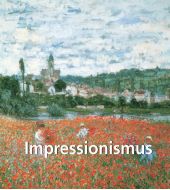 Der Impressionismus stand seit seiner Entstehung im Zentrum des Interesses eines breiten Publikums und impressionistische Werke verzaubern auch heute noch die Betrachter mit ihren erstaunlichen Farben und Formen. Dieses Buch bietet eine Auswahl der beeindruckendsten Werke von Künstlern wie Degas, Monet, Pissarro, Renoir und Sisley. Das handliche Mega Square Format ist der großen Beliebtheit dieser Epoche angepasst und macht es zu einem perfekten Geschenk. ... Далее
Der Impressionismus stand seit seiner Entstehung im Zentrum des Interesses eines breiten Publikums und impressionistische Werke verzaubern auch heute noch die Betrachter mit ihren erstaunlichen Farben und Formen. Dieses Buch bietet eine Auswahl der beeindruckendsten Werke von Künstlern wie Degas, Monet, Pissarro, Renoir und Sisley. Das handliche Mega Square Format ist der großen Beliebtheit dieser Epoche angepasst und macht es zu einem perfekten Geschenk. ... Далее -
81.
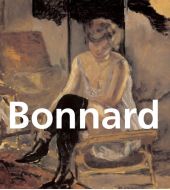 Pierre Bonnard était le chef d’un groupe de peintres post-impressionnistes. Ils se nommèrent eux-mêmes les Nabis, du mot hébreux signifiant ‘prophète’. Bonnard, Vuillard, Roussel, Denis, les plus illustres des Nabis, ont révolutionné l’esprit des techniques décoratives durant l’une des époques les plus riches de la peinture française. Influencés par Odilon Redon, Puvis de Chavannes, l’imagerie populaire ou les estampes japonaises, ces post-impressionnistes furent avant tout un groupe d’amis fréquentat les mêmes milieux culturels. L’individualisme croissant de leurs créations ébranla souvent l’unité du groupe. Bien que liés par une même philosophie, leurs oeuvres divergeaient nettement. Cet ouvrage permet de les comparer et de les mettre en perspective les unes avec les autres. Les oeuvres présentées dans cet ouvrage offrent une palette d’expressions merveilleusement poétiques : candide chez Bonnard, ornementale et mystérieuse chez Vuillard, doucement rêveuse chez Denis, âpre jusqu’à l’amertume chez Valloton, l’auteur nous fait partager la vie intime des artistes jusqu’à la source profonde de leurs dons créatifs. ... Далее
Pierre Bonnard était le chef d’un groupe de peintres post-impressionnistes. Ils se nommèrent eux-mêmes les Nabis, du mot hébreux signifiant ‘prophète’. Bonnard, Vuillard, Roussel, Denis, les plus illustres des Nabis, ont révolutionné l’esprit des techniques décoratives durant l’une des époques les plus riches de la peinture française. Influencés par Odilon Redon, Puvis de Chavannes, l’imagerie populaire ou les estampes japonaises, ces post-impressionnistes furent avant tout un groupe d’amis fréquentat les mêmes milieux culturels. L’individualisme croissant de leurs créations ébranla souvent l’unité du groupe. Bien que liés par une même philosophie, leurs oeuvres divergeaient nettement. Cet ouvrage permet de les comparer et de les mettre en perspective les unes avec les autres. Les oeuvres présentées dans cet ouvrage offrent une palette d’expressions merveilleusement poétiques : candide chez Bonnard, ornementale et mystérieuse chez Vuillard, doucement rêveuse chez Denis, âpre jusqu’à l’amertume chez Valloton, l’auteur nous fait partager la vie intime des artistes jusqu’à la source profonde de leurs dons créatifs. ... Далее -
82.
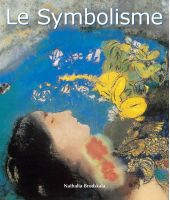 Entre 1880 et les premières années du XXe siècle, le Symbolisme voit le jour en France et en Europe. Les symbolistes, fascinés par les mythologies anciennes, tentent d’échapper au règne de la pensée rationaliste imposée par la science. Souhaitant dépasser le monde du visible et du sensible pour atteindre le monde de la pensée pure, ils flirtent constamment avec les limites de l’inconscient. Les Français Gustave Moreau et Odilon Redon, les Belges Fernand Khnopff et Félicien Rops, les Anglais Burne-Jones et Dante Gabriel Rossetti et enfin le Hollandais Jan Toorop sont les artistes les plus représentatifs de ce courant. ... Далее
Entre 1880 et les premières années du XXe siècle, le Symbolisme voit le jour en France et en Europe. Les symbolistes, fascinés par les mythologies anciennes, tentent d’échapper au règne de la pensée rationaliste imposée par la science. Souhaitant dépasser le monde du visible et du sensible pour atteindre le monde de la pensée pure, ils flirtent constamment avec les limites de l’inconscient. Les Français Gustave Moreau et Odilon Redon, les Belges Fernand Khnopff et Félicien Rops, les Anglais Burne-Jones et Dante Gabriel Rossetti et enfin le Hollandais Jan Toorop sont les artistes les plus représentatifs de ce courant. ... Далее -
83.
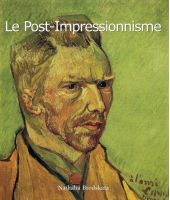 Si l’Impressionnisme marqua les premiers pas vers la peinture moderne en révolutionnant un milieu artistique étouffé par les conventions académiques, le Post-Impressionnisme, plus révolutionnaire encore, libéra totalement la couleur et lui ouvrit des horizons alors inconnus. Ancré dans son époque, s’appuyant sur les nouvelles études chromatiques de Chevreul, Georges Seurat transcrivit en pointillés la théorie des couleurs du chimiste. Dans sa touche épaisse, Van Gogh illustra le soleil du midi, tandis que Cézanne renonçait à la perspective. Riche de sa variété et de la singularité de ses artistes, le Post-Impressionnisme fut un passage obligé pour tous les grands noms de la peinture du XXe siècle, passage qu’emprunte ici, pour le plus grand plaisir du lecteur, Nathalia Brodskaïa. ... Далее
Si l’Impressionnisme marqua les premiers pas vers la peinture moderne en révolutionnant un milieu artistique étouffé par les conventions académiques, le Post-Impressionnisme, plus révolutionnaire encore, libéra totalement la couleur et lui ouvrit des horizons alors inconnus. Ancré dans son époque, s’appuyant sur les nouvelles études chromatiques de Chevreul, Georges Seurat transcrivit en pointillés la théorie des couleurs du chimiste. Dans sa touche épaisse, Van Gogh illustra le soleil du midi, tandis que Cézanne renonçait à la perspective. Riche de sa variété et de la singularité de ses artistes, le Post-Impressionnisme fut un passage obligé pour tous les grands noms de la peinture du XXe siècle, passage qu’emprunte ici, pour le plus grand plaisir du lecteur, Nathalia Brodskaïa. ... Далее -
84.
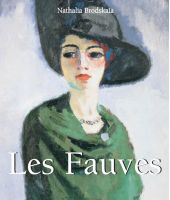 Apparu à l’aube du XXe siècle, le Fauvisme explosa sur la scène artistique lors du Salon d’automne de 1905 en un scandale retentissant. En jetant des couleurs pures sur la toile, les fauves défièrent les conventions artistiques. Matisse, Derain, Van Dongen ou encore Vlaminck expérimentèrent ainsi un nouveau langage chromatique en détournant la couleur de son signifié. Libérée de tout sens, la couleur saturée et appliquée en larges aplats devint leur principal matériau. Dans cet ouvrage, l’auteur entraîne le lecteur dans un tourbillon de couleurs vives et franches, et montre combien la violence des fauves laissa son empreinte sur le chemin de la modernité. ... Далее
Apparu à l’aube du XXe siècle, le Fauvisme explosa sur la scène artistique lors du Salon d’automne de 1905 en un scandale retentissant. En jetant des couleurs pures sur la toile, les fauves défièrent les conventions artistiques. Matisse, Derain, Van Dongen ou encore Vlaminck expérimentèrent ainsi un nouveau langage chromatique en détournant la couleur de son signifié. Libérée de tout sens, la couleur saturée et appliquée en larges aplats devint leur principal matériau. Dans cet ouvrage, l’auteur entraîne le lecteur dans un tourbillon de couleurs vives et franches, et montre combien la violence des fauves laissa son empreinte sur le chemin de la modernité. ... Далее -
85.
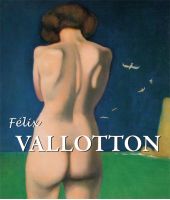
-
86.
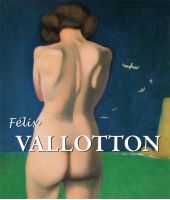 Félix Vallotton (1865-1925) was active at the turn of the century. Although he is best known for his striking and elegantly composed Japanese-inspired woodblock prints, Vallotton was also a skilled painter, creating works that arrestingly combined technical perfection with emotional realism. This seminal text provides readers with a fascinating assessment of the career of this revolutionary artist. ... Далее
Félix Vallotton (1865-1925) was active at the turn of the century. Although he is best known for his striking and elegantly composed Japanese-inspired woodblock prints, Vallotton was also a skilled painter, creating works that arrestingly combined technical perfection with emotional realism. This seminal text provides readers with a fascinating assessment of the career of this revolutionary artist. ... Далее -
87.
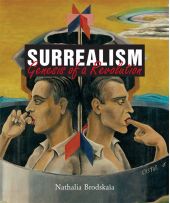 Surrealists appeared in the aftermath of World War I with a bang: revolution of thought, creativity, and the wish to break away from the past and all that was left in ruins.This refusal to integrate into the bourgeois society was also a leitmotiv of Dada artists, and André Breton asserted that Dada does not produce perspective. Surrealism emerged amidst such feeling. Surrealists and Dada artists often changed from one movement to another.They were united by their superior intellectualism and the common goal to break free from the norm. Describing the Surrealists with their aversive resistance to the system, the author brings a new approach which strives to be relative and truthful. Provocation and cultural revolution: aren’t Surrealists after all just a direct product of creative individualism in this unsettled period? ... Далее
Surrealists appeared in the aftermath of World War I with a bang: revolution of thought, creativity, and the wish to break away from the past and all that was left in ruins.This refusal to integrate into the bourgeois society was also a leitmotiv of Dada artists, and André Breton asserted that Dada does not produce perspective. Surrealism emerged amidst such feeling. Surrealists and Dada artists often changed from one movement to another.They were united by their superior intellectualism and the common goal to break free from the norm. Describing the Surrealists with their aversive resistance to the system, the author brings a new approach which strives to be relative and truthful. Provocation and cultural revolution: aren’t Surrealists after all just a direct product of creative individualism in this unsettled period? ... Далее -
88.
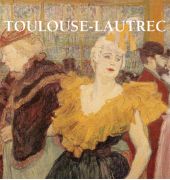 Lautrec studied with two of the most admired academic painters of the day, Léon Bonnat and Fernand Cormon. Lautrec’s time in the studios of Bonnat and Cormon had the advantage of introducing him to the nude as a subject. At that time life-drawing of the nude was the basis of all academic art training in nineteenth-century Paris. While still a student, Lautrec began to explore Parisian nightlife, which was to provide him with his greatest inspiration, and eventually undermined his health. Lautrec was an artist able to stamp his vision of the age in which he lived upon the imagination of future generations. Just as we see the English court of Charles I through the eyes of van Dyck and the Paris of Louis-Philippe through the eyes of Daumier, so we see the Paris of the 1890s and its most colourful personalities, through the eyes of Lautrec. The first great personality of Parisian nightlife whom Lautrec encountered – and a man who was to play an important role in helping Lautrec develop his artistic vision – was the cabaret singer Aristide Bruant. Bruant stood out as an heroic figure in what was the golden age of Parisian cabaret. Among the many other performers inspiring Lautrec in the 1890s were the dancers La Goulue and Valentin-le-Desossé (who both appear in the famous Moulin Rouge poster), and Jane Avril and Loïe Fuller, the singers Yvette Guilbert, May Belfort and Marcelle Lender, and the actress Réjane. Lautrec was, along with Degas, one of the great poets of the brothel. Degas explored the theme in the late 1870s in a series of monotype prints that are among his most remarkable and personal works. He depicts the somewhat ungainly posturing of the prostitutes and their clients with human warmth and a satirical humour that brings these prints closer to the art of Lautrec than anything else by Degas. However, the truthfulness with which Lautrec portrayed those aspects of life that most of his more respectable contemporaries preferred to sweep under the carpet naturally caused offence. The German critic Gensel probably spoke for many when he wrote: “There can of course be no talk of admiration for someone who is the master of the representation of all that is base and perverse. The only explanation as to how such filth – there can be no milder term for it – as Elles can be publicly exhibited without an outcry of indignations being heard is that one half of the general public does not understand the meaning of this cycle at all, and the other is ashamed of admitting that it does understand it.” ... Далее
Lautrec studied with two of the most admired academic painters of the day, Léon Bonnat and Fernand Cormon. Lautrec’s time in the studios of Bonnat and Cormon had the advantage of introducing him to the nude as a subject. At that time life-drawing of the nude was the basis of all academic art training in nineteenth-century Paris. While still a student, Lautrec began to explore Parisian nightlife, which was to provide him with his greatest inspiration, and eventually undermined his health. Lautrec was an artist able to stamp his vision of the age in which he lived upon the imagination of future generations. Just as we see the English court of Charles I through the eyes of van Dyck and the Paris of Louis-Philippe through the eyes of Daumier, so we see the Paris of the 1890s and its most colourful personalities, through the eyes of Lautrec. The first great personality of Parisian nightlife whom Lautrec encountered – and a man who was to play an important role in helping Lautrec develop his artistic vision – was the cabaret singer Aristide Bruant. Bruant stood out as an heroic figure in what was the golden age of Parisian cabaret. Among the many other performers inspiring Lautrec in the 1890s were the dancers La Goulue and Valentin-le-Desossé (who both appear in the famous Moulin Rouge poster), and Jane Avril and Loïe Fuller, the singers Yvette Guilbert, May Belfort and Marcelle Lender, and the actress Réjane. Lautrec was, along with Degas, one of the great poets of the brothel. Degas explored the theme in the late 1870s in a series of monotype prints that are among his most remarkable and personal works. He depicts the somewhat ungainly posturing of the prostitutes and their clients with human warmth and a satirical humour that brings these prints closer to the art of Lautrec than anything else by Degas. However, the truthfulness with which Lautrec portrayed those aspects of life that most of his more respectable contemporaries preferred to sweep under the carpet naturally caused offence. The German critic Gensel probably spoke for many when he wrote: “There can of course be no talk of admiration for someone who is the master of the representation of all that is base and perverse. The only explanation as to how such filth – there can be no milder term for it – as Elles can be publicly exhibited without an outcry of indignations being heard is that one half of the general public does not understand the meaning of this cycle at all, and the other is ashamed of admitting that it does understand it.” ... Далее -
89.
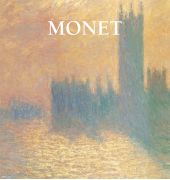 For Claude Monet the designation ‘impressionist’ always remained a source of pride. In spite of all the things critics have written about his work, Monet continued to be a true impressionist to the end of his very long life. He was so by deep conviction, and for his Impressionism he may have sacrificed many other opportunities that his enormous talent held out to him. Monet did not paint classical compositions with figures, and he did not become a portraitist, although his professional training included those skills. He chose a single genre for himself, landscape painting, and in that he achieved a degree of perfection none of his contemporaries managed to attain. Yet the little boy began by drawing caricatures. Boudin advised Monet to stop doing caricatures and to take up landscapes instead. The sea, the sky, animals, people, and trees are beautiful in the exact state in which nature created them – surrounded by air and light. Indeed, it was Boudin who passed on to Monet his conviction of the importance of working in the open air, which Monet would in turn transmit to his impressionist friends. Monet did not want to enrol at the Ecole des Beaux-Arts. He chose to attend a private school, L’Académie Suisse, established by an ex-model on the Quai d’Orfèvres near the Pont Saint-Michel. One could draw and paint from a live model there for a modest fee. This was where Monet met the future impressionist Camille Pissarro. Later in Gleyre’s studio, Monet met Auguste Renoir Alfred Sisley, and Frédéric Bazille. Monet considered it very important that Boudin be introduced to his new friends. He also told his friends of another painter he had found in Normandy. This was the remarkable Dutchman Jongkind. His landscapes were saturated with colour, and their sincerity, at times even their naïveté, was combined with subtle observation of the Normandy shore’s variable nature. At this time Monet’s landscapes were not yet characterized by great richness of colour. Rather, they recalled the tonalities of paintings by the Barbizon artists, and Boudin’s seascapes. He composed a range of colour based on yellow-brown or blue-grey. At the Third Impressionist Exhibition in 1877 Monet presented a series of paintings for the first time: seven views of the Saint-Lazare train station. He selected them from among twelve he had painted at the station. This motif in Monet’s work is in line not only with Manet’s Chemin de fer (The Railway) and with his own landscapes featuring trains and stations at Argenteuil, but also with a trend that surfaced after the railways first began to appear. In 1883, Monet had bought a house in the village of Giverny, near the little town of Vernon. At Giverny, series painting became one of his chief working procedures. Meadows became his permanent workplace. When a journalist, who had come from Vétheuil to interview Monet, asked him where his studio was, the painter answered, “My studio! I’ve never had a studio, and I can’t see why one would lock oneself up in a room. To draw, yes – to paint, no”. Then, broadly gesturing towards the Seine, the hills, and the silhouette of the little town, he declared, “There’s my real studio.”Monet began to go to London in the last decade of the nineteenth century. He began all his London paintings working directly from nature, but completed many of them afterwards, at Giverny. The series formed an indivisible whole, and the painter had to work on all his canvases at one time. A friend of Monet’s, the writer Octave Mirbeau, wrote that he had accomplished a miracle. With the help of colours he had succeeded in recreating on the canvas something almost impossible to capture: he was reproducing sunlight, enriching it with an infinite number of reflections. Alone among the impressionists, Claude Monet took an almost scientific study of the possibilities of colour to its limits; it is unlikely that one could have gone any further in that direction. ... Далее
For Claude Monet the designation ‘impressionist’ always remained a source of pride. In spite of all the things critics have written about his work, Monet continued to be a true impressionist to the end of his very long life. He was so by deep conviction, and for his Impressionism he may have sacrificed many other opportunities that his enormous talent held out to him. Monet did not paint classical compositions with figures, and he did not become a portraitist, although his professional training included those skills. He chose a single genre for himself, landscape painting, and in that he achieved a degree of perfection none of his contemporaries managed to attain. Yet the little boy began by drawing caricatures. Boudin advised Monet to stop doing caricatures and to take up landscapes instead. The sea, the sky, animals, people, and trees are beautiful in the exact state in which nature created them – surrounded by air and light. Indeed, it was Boudin who passed on to Monet his conviction of the importance of working in the open air, which Monet would in turn transmit to his impressionist friends. Monet did not want to enrol at the Ecole des Beaux-Arts. He chose to attend a private school, L’Académie Suisse, established by an ex-model on the Quai d’Orfèvres near the Pont Saint-Michel. One could draw and paint from a live model there for a modest fee. This was where Monet met the future impressionist Camille Pissarro. Later in Gleyre’s studio, Monet met Auguste Renoir Alfred Sisley, and Frédéric Bazille. Monet considered it very important that Boudin be introduced to his new friends. He also told his friends of another painter he had found in Normandy. This was the remarkable Dutchman Jongkind. His landscapes were saturated with colour, and their sincerity, at times even their naïveté, was combined with subtle observation of the Normandy shore’s variable nature. At this time Monet’s landscapes were not yet characterized by great richness of colour. Rather, they recalled the tonalities of paintings by the Barbizon artists, and Boudin’s seascapes. He composed a range of colour based on yellow-brown or blue-grey. At the Third Impressionist Exhibition in 1877 Monet presented a series of paintings for the first time: seven views of the Saint-Lazare train station. He selected them from among twelve he had painted at the station. This motif in Monet’s work is in line not only with Manet’s Chemin de fer (The Railway) and with his own landscapes featuring trains and stations at Argenteuil, but also with a trend that surfaced after the railways first began to appear. In 1883, Monet had bought a house in the village of Giverny, near the little town of Vernon. At Giverny, series painting became one of his chief working procedures. Meadows became his permanent workplace. When a journalist, who had come from Vétheuil to interview Monet, asked him where his studio was, the painter answered, “My studio! I’ve never had a studio, and I can’t see why one would lock oneself up in a room. To draw, yes – to paint, no”. Then, broadly gesturing towards the Seine, the hills, and the silhouette of the little town, he declared, “There’s my real studio.”Monet began to go to London in the last decade of the nineteenth century. He began all his London paintings working directly from nature, but completed many of them afterwards, at Giverny. The series formed an indivisible whole, and the painter had to work on all his canvases at one time. A friend of Monet’s, the writer Octave Mirbeau, wrote that he had accomplished a miracle. With the help of colours he had succeeded in recreating on the canvas something almost impossible to capture: he was reproducing sunlight, enriching it with an infinite number of reflections. Alone among the impressionists, Claude Monet took an almost scientific study of the possibilities of colour to its limits; it is unlikely that one could have gone any further in that direction. ... Далее
Комментарии:


